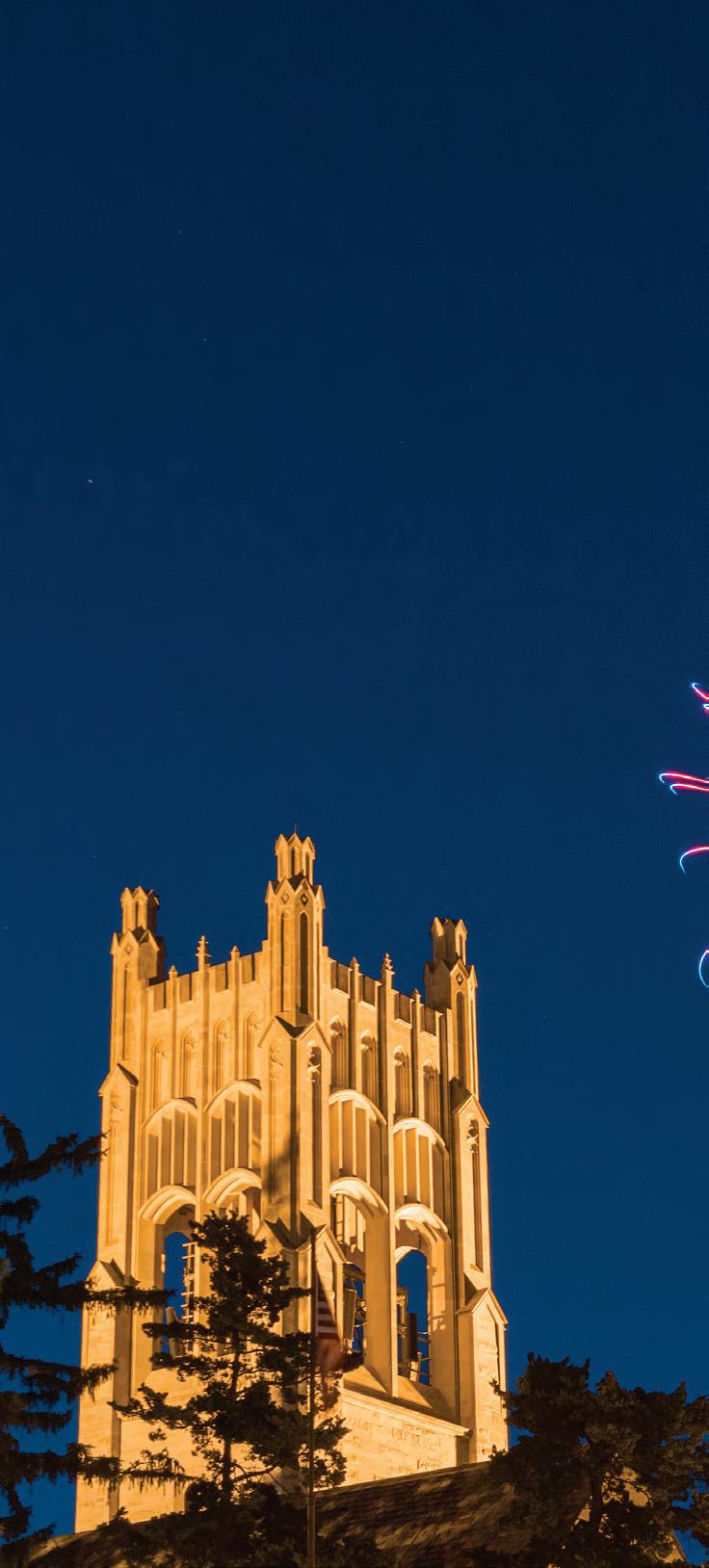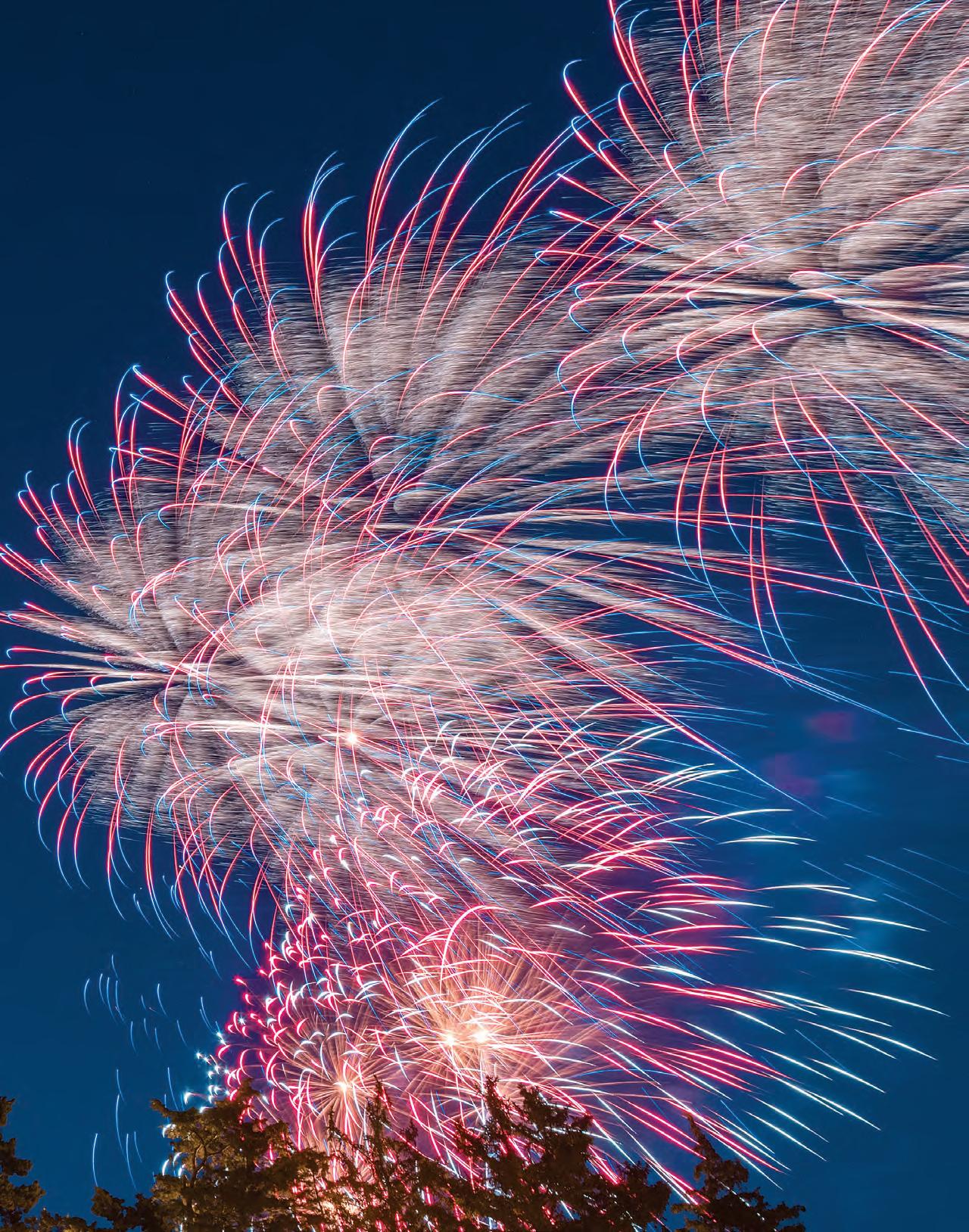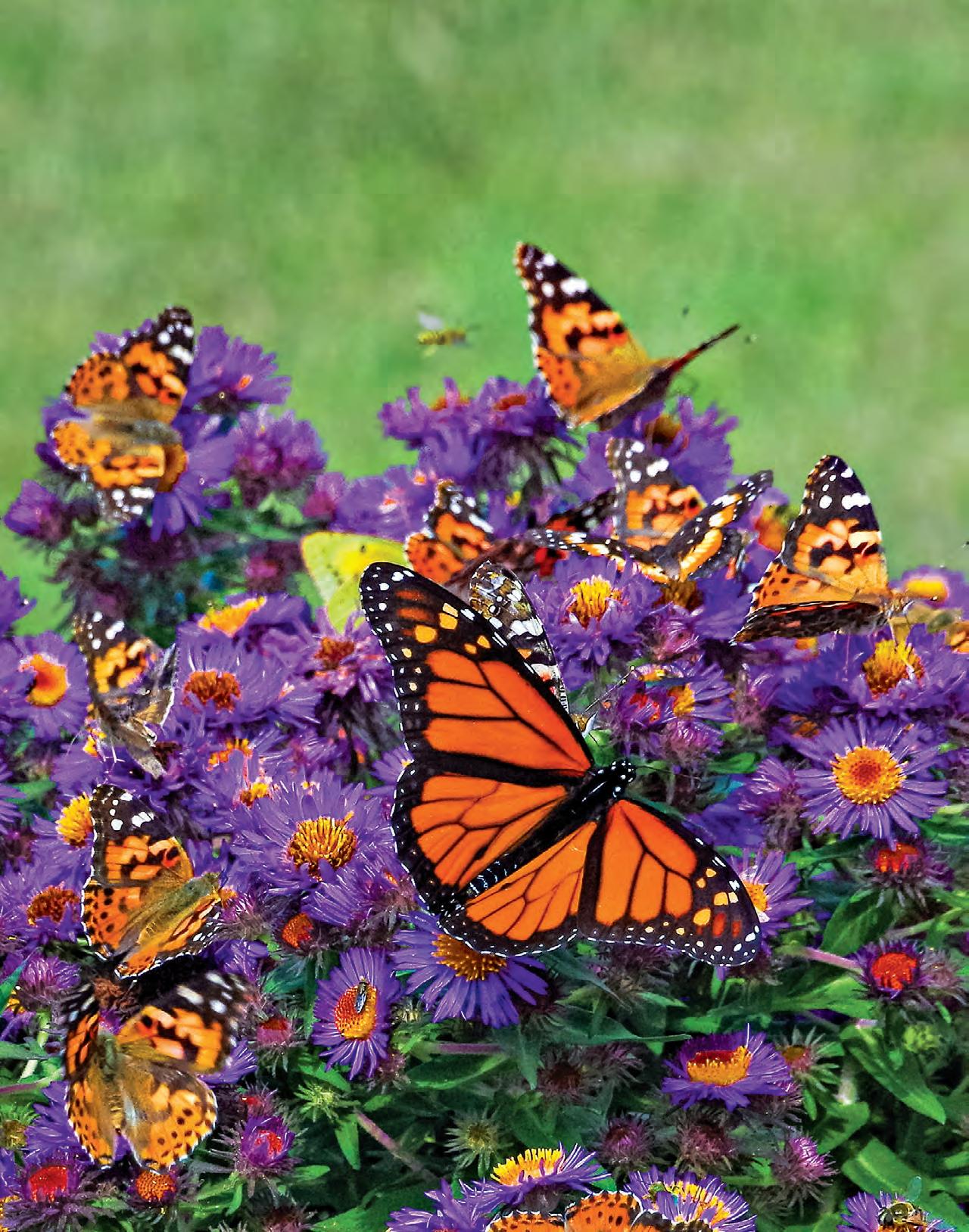
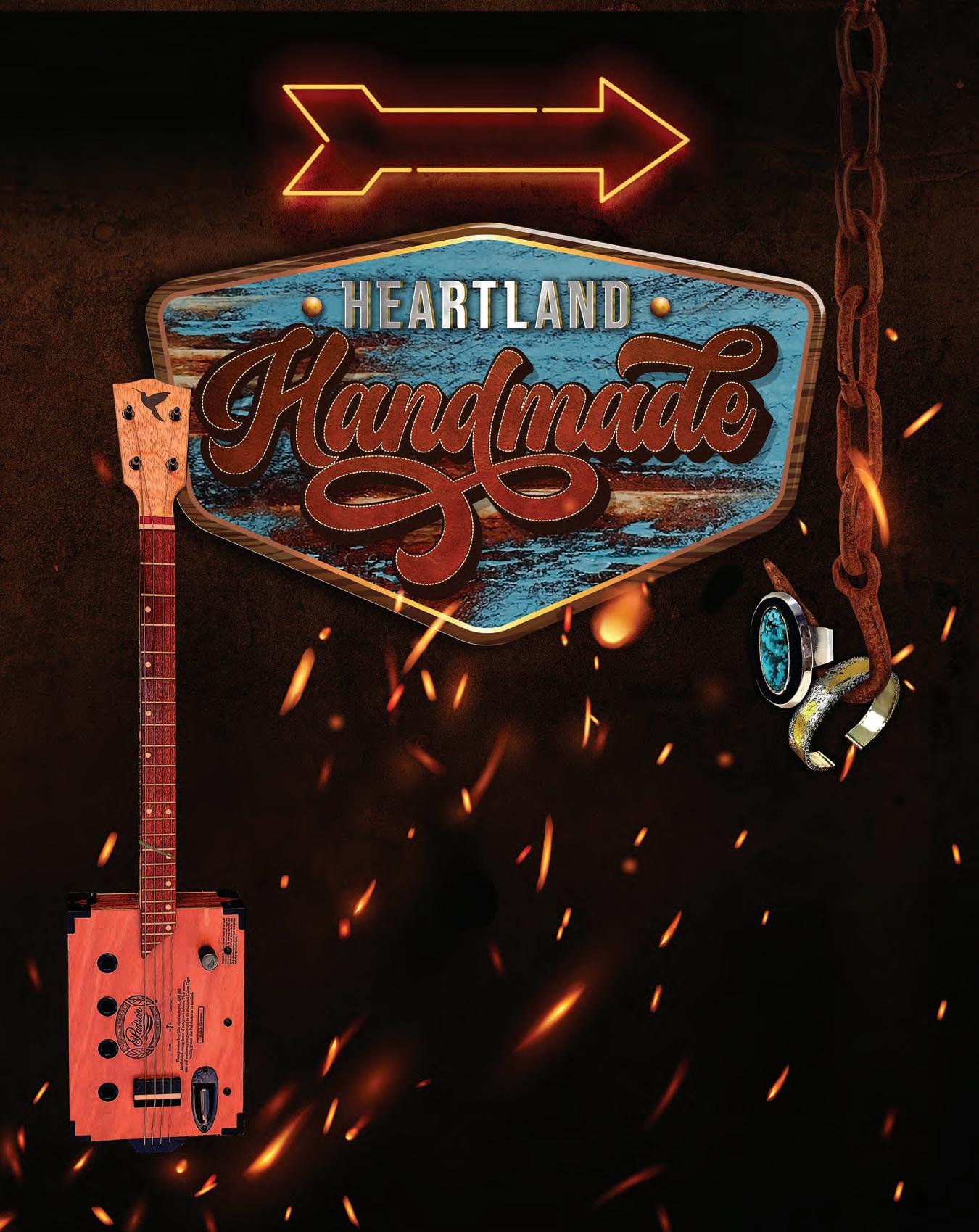
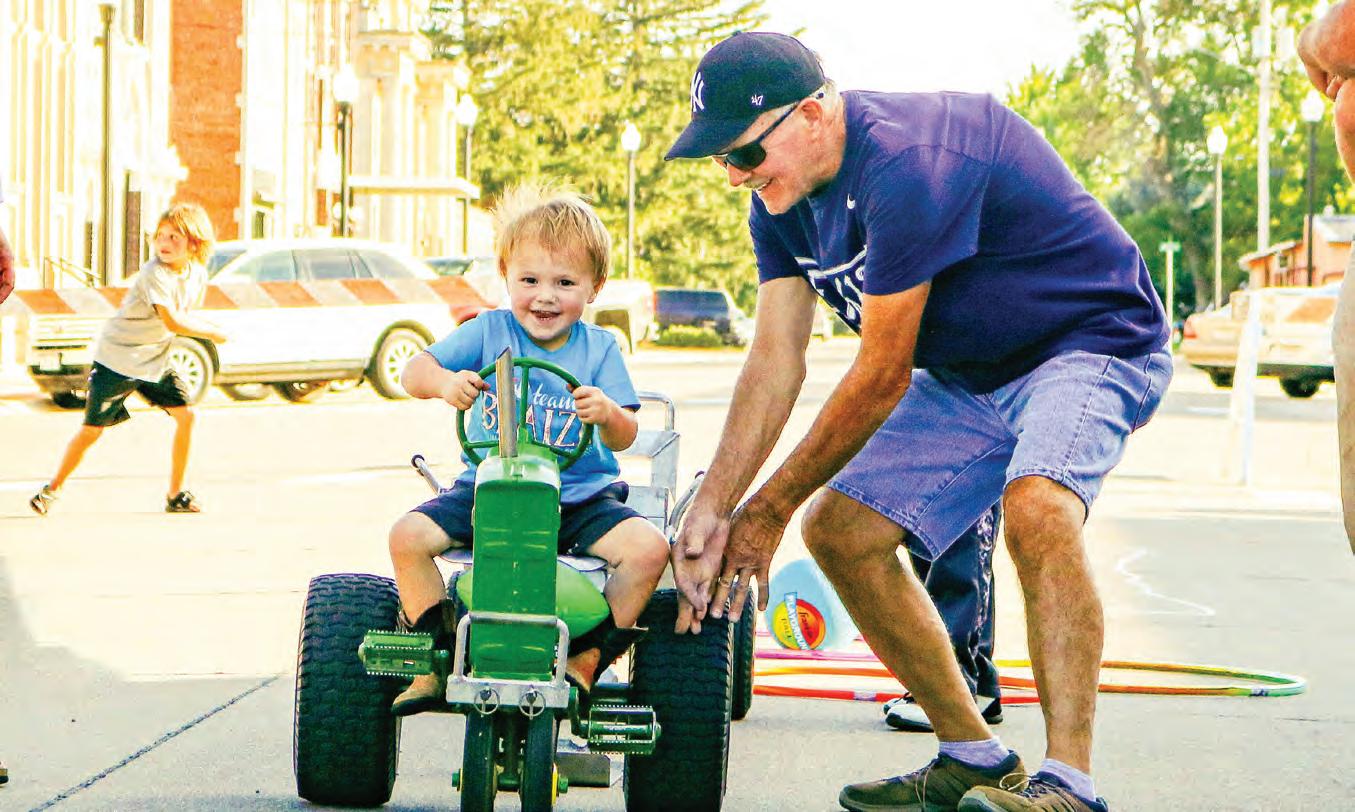




Over the next 10 years in Nebraska, $100 billion will transfer from one generation to the next. There is always a transfer from generation to generation, as parents pass away and leave their estate to their children. But if the heirs no longer live where they grew up, that wealth may leave as well.
Imagine if just five percent of this abundance were given back to the places where it was made and accumulated. Think of the impact that kind of money could have on education, health, prosperity, and quality of life. Harnessing just a small percentage of the transfer of wealth could be a gamechanger for the future of our hometowns.
Think of the Nebraska hometown you love. This is your opportunity to enrich its future. We’re asking you to consider leaving just five percent of your assets to your favorite Nebraska hometown or to Nebraska Community Foundation to benefit all of our communities. When we all leave five, our hometowns thrive!

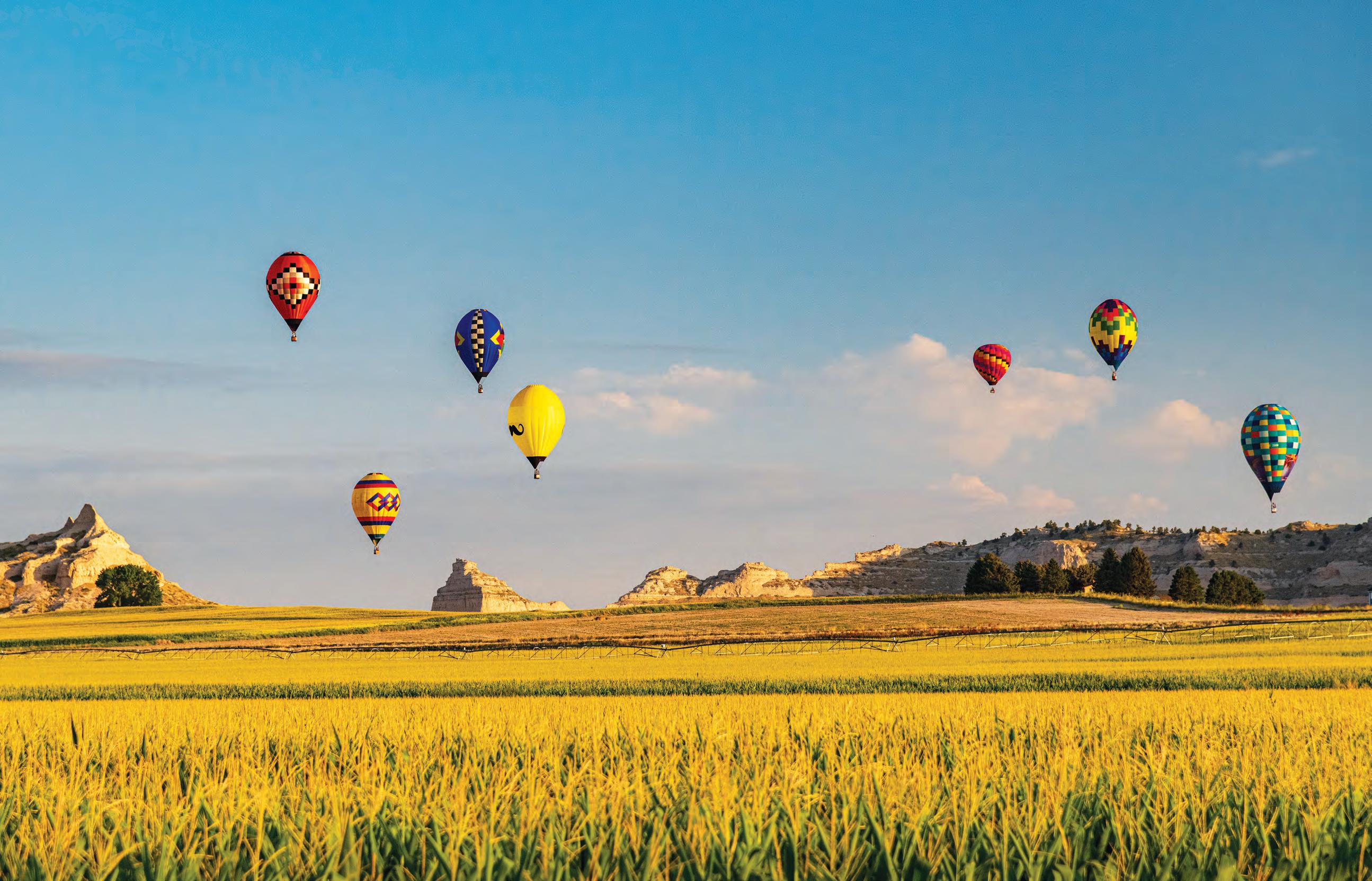

Fifty of the top hot air balloon pilots in the United States will compete in a grueling five-day event. The winner will not only receive bragging rights and a generous prize package, but the chance to compete in the World Hot Air Balloon Championships.
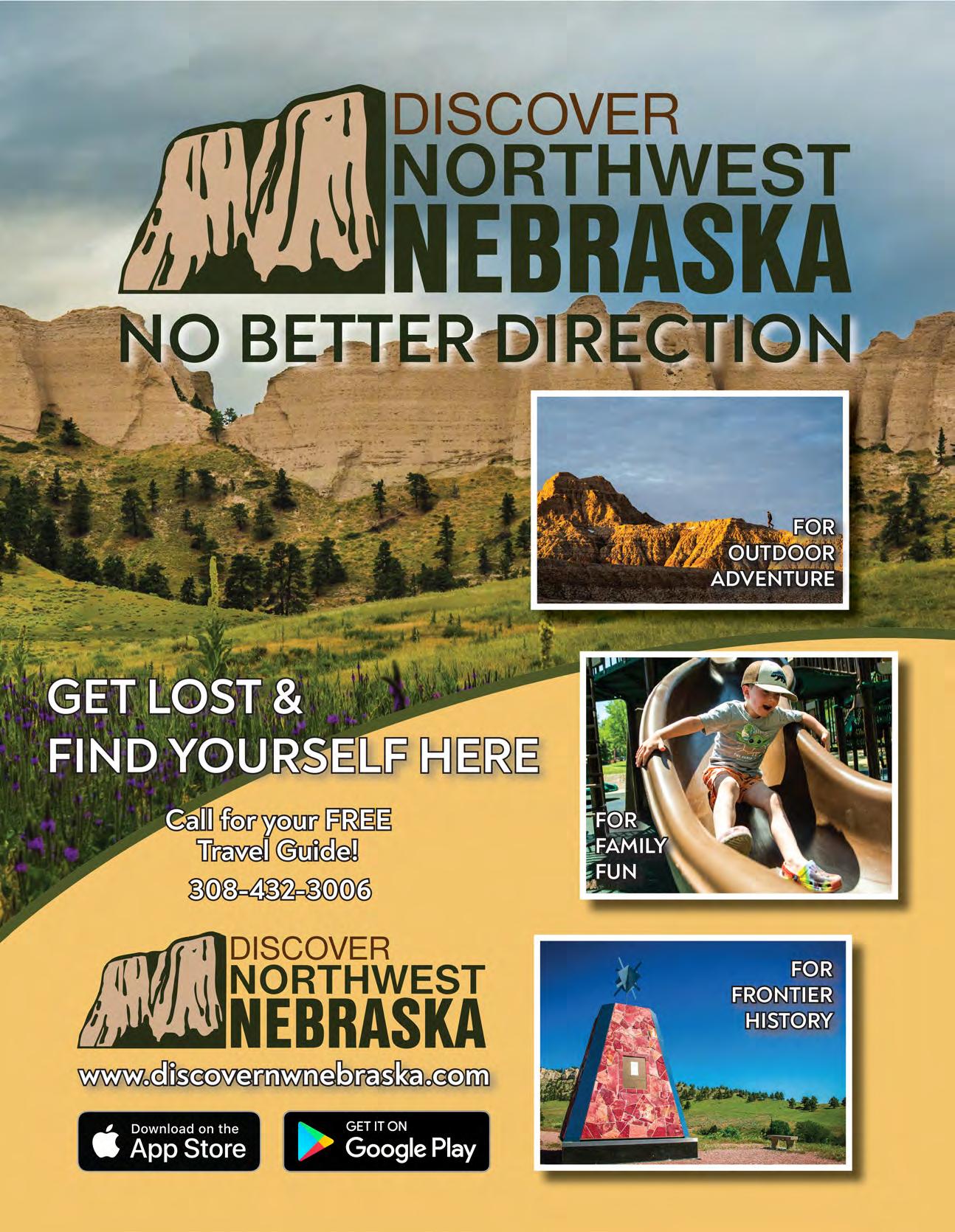

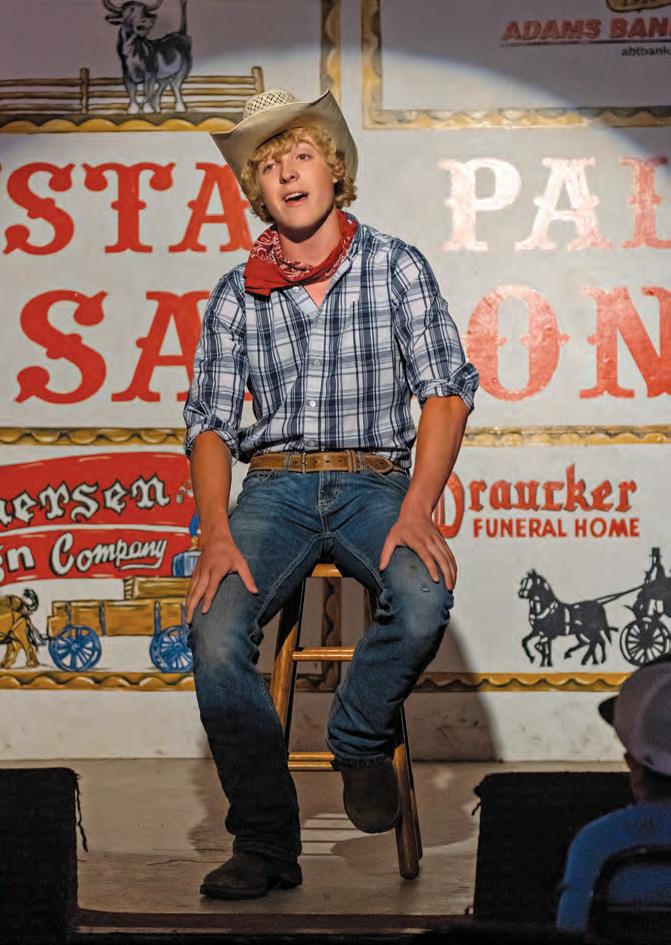
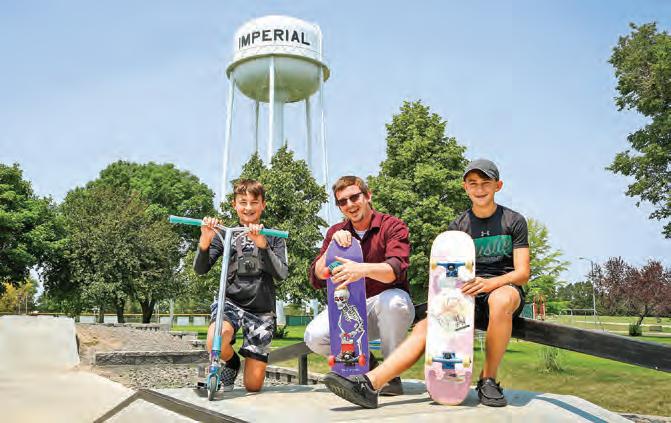
Nebraska Life Turns 25, pg. 34
26 Nebraska Pollinators
Nebraska photographers capture bees, beetles and birds pollinating flowers, fruits and vegetables in suburban backyards, wild prairies and forests. Macro photography highlights the hidden textures and details of these essential organisms’ complex world.
Story by Megan Feeney
34 Nebraska Life Turns 25
Hip-hip-hooray! Nebraska Life is celebrating its 25th birthday. We’re proud and want to celebrate by holding up other great Nebraska institutions: Arbor Day Foundation, Nebraska Community Foundation and Natural Resources Districts.
Story by Megan Feeney
44 Missouri River Angler
Commercial fisherman Mike Kelley cruises the Missouri River to find the freshest offerings to fry and plate at his Blair restaurant. He honors a tradition handed down from his father. Now, if he can keep dodging the flying carp and stay on the right side of the law.
Story and photographs by Tim Trudell
66 Lake to Lake
Visitors to Swanson Reservoir and Harlan County Lake have a blast fishing and boating, but the history of these places is less lighthearted. Tragic floods led to the creation of reservoirs. Lakeside communities remember history while celebrating the present.
Story by Alan J. Bartels
76 Crystal Palace Revue
High-kicking showgirls and hotheaded cowboys entertain at Ogallala’s Front Street seven summer nights a week. Jam-packed action, Western tunes and comic improvisation keep the state’s longest-running summer stock theater fresh. Yee-haw.
Story by Alan J. Bartels
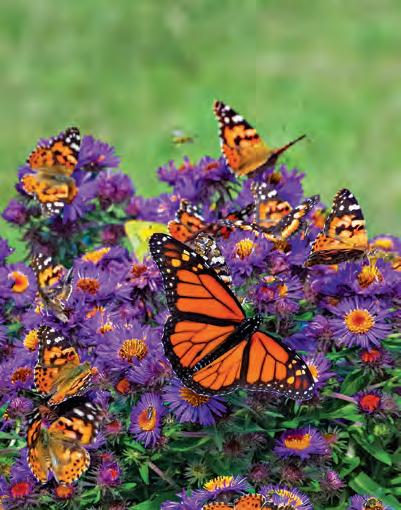
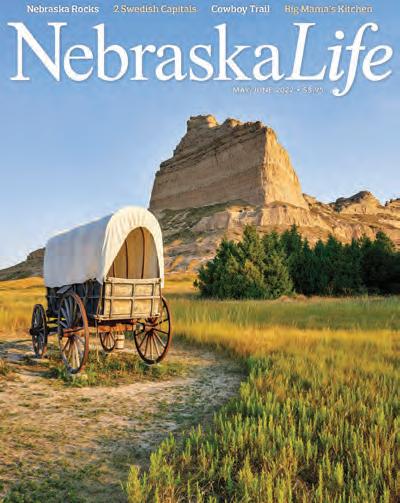
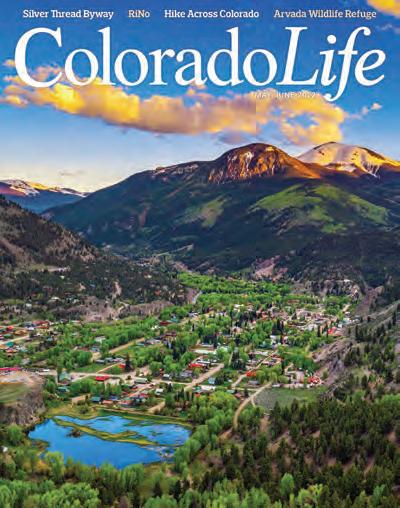
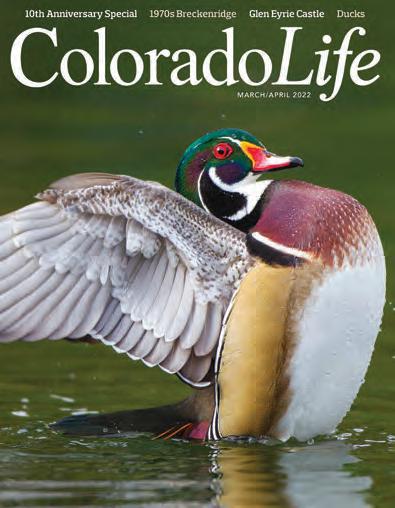
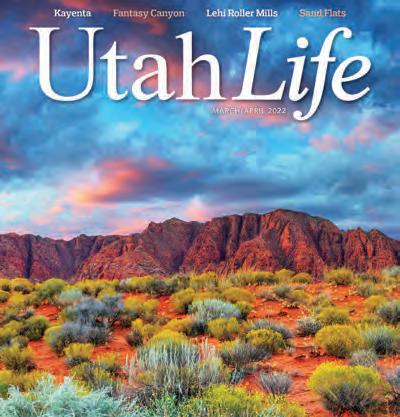
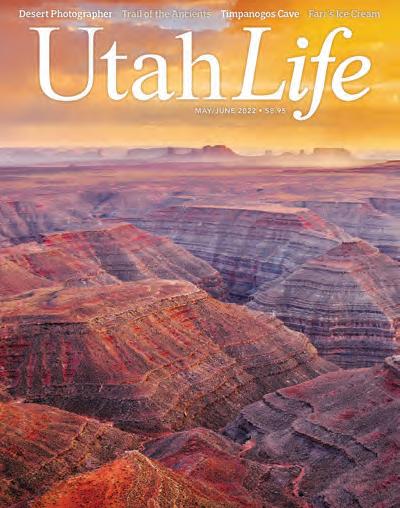



Crawford pg. 90
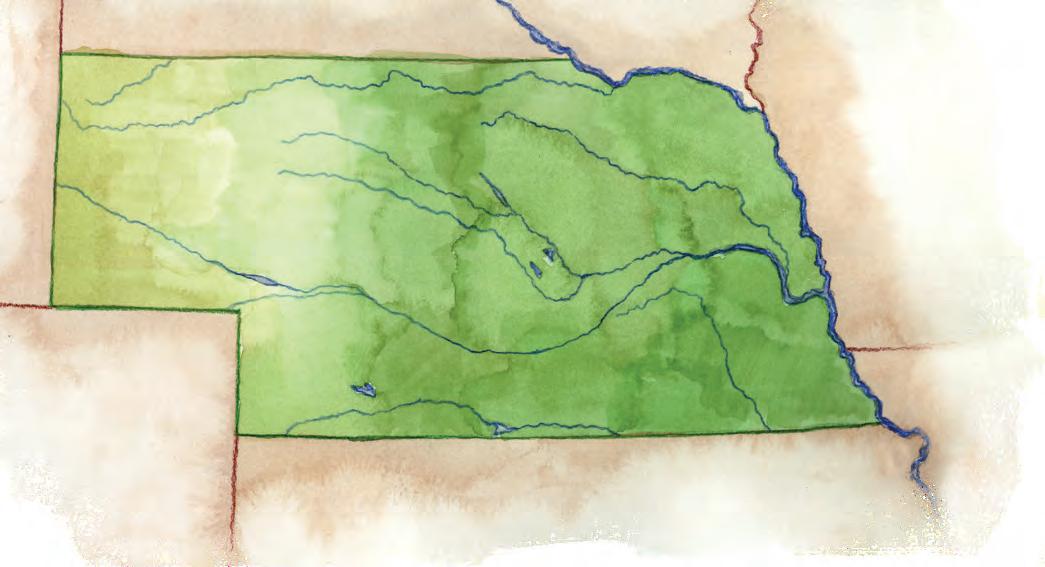
Valentine pg.90
Royal pg. 16
Pibel Lake pg. 32
Ogallala pg. 74
Imperial pg. 32
Swanson Reservoir State Recreation Area pg. 64
11
McCook pg. 32
Oxford pg. 64
Alma pg. 64
Blair pg. 42
Lincoln pg. 32
Hastings pg.16
Republican City pg. 64
Harlan County Lake pg. 64
Crete pg. 32
Omaha pg. 102
Bellevue pg. 24
Nebraska City pg. 90
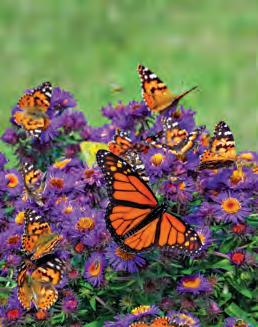
16 Flat Water News & Trivia
A Lewiston home serves farm-fresh lunches, armadillos visit Nebraska, a fig tree grows by the Oregon Trail, an Aurora bookstore gives away 10,000 books and a pro wrestler honors a Omahan who fought for something greater than himself. Plus: Readers dig Nebraska fossil trivia. Answers on page 96.
52 Kitchens
Watermelon recipes add wow to summer. Chef Ian Nauslar’s original creations zing with fresh juicy flavor.
57 Poetry
Poets inspire fellow Nebraskans with their takes on the freedom of summer and all its barefooted, firefly-catching, lake-leaping joy.
90 Traveler
Red-hot artifacts from Nebraska’s oldest fire department are on display in Nebraska City, star watchers gawk at the shadow cast by the Milky Way outside of Valentine, art enthusiasts trot to a Fort Robinson horse barn, and an Omaha museum puts the faces to the names – of street signs.
101 Naturally Nebraska
Alan J. Bartels considers the story of a blind pioneer girl as he tends to a Nebraska highway.
102 Last Look
Photographer Brad Williams grew up watching Fourth of July fireworks shows at the old Rosenblatt Stadium. He’s chased that explosive feeling ever since.
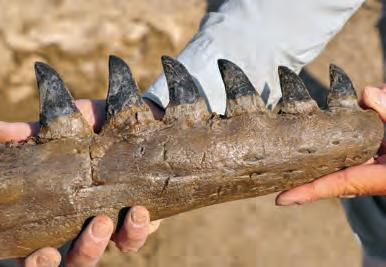
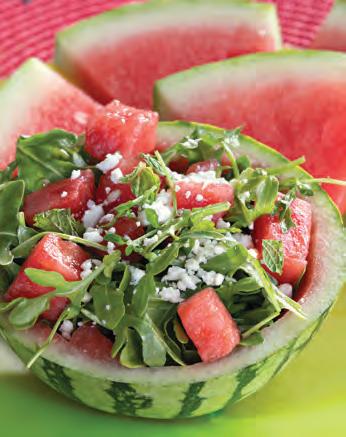
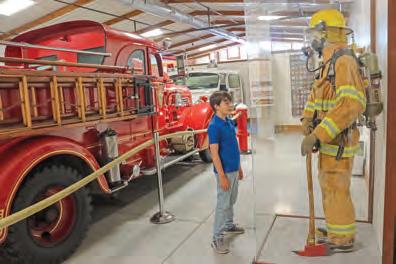


This spring, Columbus Community Hospital’s Columbus Orthopedic & Sports Medicine Clinic can help you get the spring back in your step.
Whether you are suffering from a sports injury or chronic joint pain, our team of surgeons and physician assistants can help. They provide comprehensive orthopedic care that can get you moving again with less discomfort.
The clinic offers a variety of orthopedic treatments and procedures, including orthopedic trauma care, total joint replacement, sports medicine, podiatry, hand and wrist surgeries, and fracture management.
From our comprehensive sports medicine program to our robotic-assisted total joint replacement surgeries, our team will help you return to the activities you love.
For more information on the orthopedic services available, visit www.columbushosp.org or call 402-562-4700.
Volume 26, Number 4
Publisher & Executive Editor
Chris Amundson
Associate Publisher Angela Amundson
Editor Megan Feeney
Photo Editor
Joshua Hardin
Design
Open Look Creative Team, Valerie Mosley
Advertising Marilyn Koponen, Lauren Warring
Subscriptions
Meagan Peil, Lindsey Schaecher, Janice Sudbeck, Azelan Amundson
Nebraska Life Magazine
c/o Subscriptions Dept. • PO Box 430 Timnath, CO 80547 1-800-777-6159 NebraskaLife.com
SUBSCRIBE
Subscriptions are 1-yr (6 issues) for $25 or 2-yrs (12 issues) for $44. Please call, visit NebraskaLife.com or return a subscription card from this issue. For fundraising and corporate rates, call or email subscriptions@ nebraskalife.com.
ADVERTISE
Advertising deadlines are three months prior to publication dates. For rates and position availability, please call or email advertising@nebraskalife.com.
CONTRIBUTE
Send us your letters, stories, photos and story tips by writing to us, visiting NebraskaLife.com/contribute or emailing editor@nebraskalife.com.
COPYRIGHT
All text, photography and artwork are copyright 2022 by Flagship Publishing Inc. For reprint permission, please call or email publisher@nebraskalife.com.

ASOPRANO VOICE FLOATED through the warmth of an August evening in downtown Nebraska City. My husband grinned at me as our two sons bobbed their heads in rhythm with the band. We were among 200 people in attendance for last year’s free performance of The Dream Switch, a community concert supported by the Nebraska City Community Foundation Fund and co-produced by Nebraska Community Foundation and BLIXT Locally Grown.
The Dream Switch tells the story of a young woman who leaves her Sandhills home for ambitions elsewhere, only to discover she can achieve her goals in Nebraska and live a better life here. To make the show’s message accessible to the entire town’s population, the fund enlisted a native Spanish speaker to translate the program and serve as an interpreter during the event. The final lyrics of the night appealed to the gathered Nebraskans: “Take a chance, make your mark, in the middle of somewhere.”

Twenty-five years ago, Tom and Carol Collignon took a chance with a new statewide magazine called Nebraska Life. Then several Nebraskans made their mark with it.
Bernie Hunhoff purchased Nebraska Life in 1999 and ran it until 2005 when current owners and Norfolk natives Chris and Angela Amundson bought it. The Amundsons have grown Nebraska Life’s readership and driven the magazine’s mission to explore and celebrate the state’s culture, history and nature.
When our Nebraska Life team discussed how to cover the magazine’s 25th anniversary, we decided to recognize other Nebraska institutions that uplift us and demonstrate our peoples’ strength and spirit.
This brings us back to that beautiful summer evening concert in Nebraska City, made possible by Nebraska Community Foundation, which provides training, resources, and a network to help affiliated funds like the one in Nebraska City. We feature Nebraska Community Foundation and affiliated funds from across the state in this issue.
We also highlight two other Nebraska institutions – the Arbor Day Foundation and Natural Resources Districts – that demonstrate Nebraskans’ proclivity for local decision-making and roll-up-your-sleeves action. As proud as we are of our magazine’s successful 25-year effort to bring beauty, joy and interest to our readers, we are equally proud of the innovative and inspirational work these Nebraska groups undertake every day.
There will be more to come in a future issue. Watch for stories about the Unicameral, Teammates Mentoring Program and Nebraska’s public power system. But, in the meantime, if you think of another Nebraska institution that we should recognize, please reach out. We love hearing from you.
Most importantly, I should note that we are accepting anniversary cake deliveries until the end of the year. My favorite is chocolate.
Megan Feeney Editor editor@nebraskalife.com
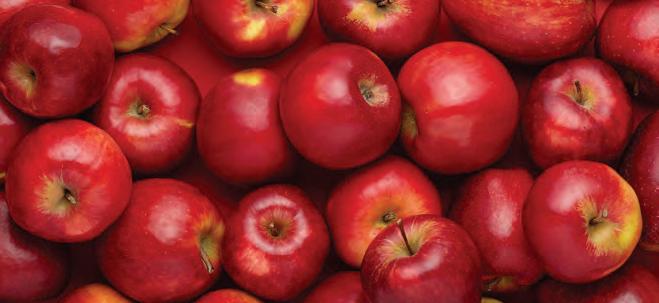
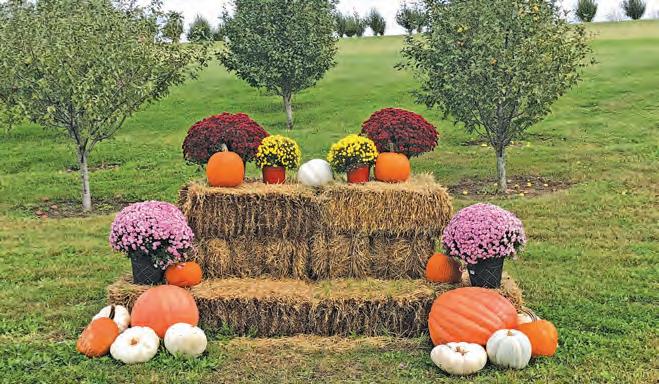
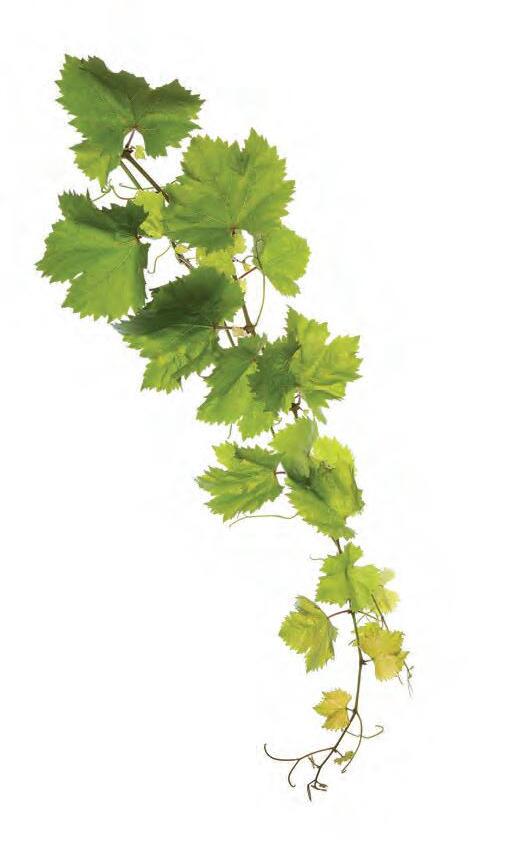
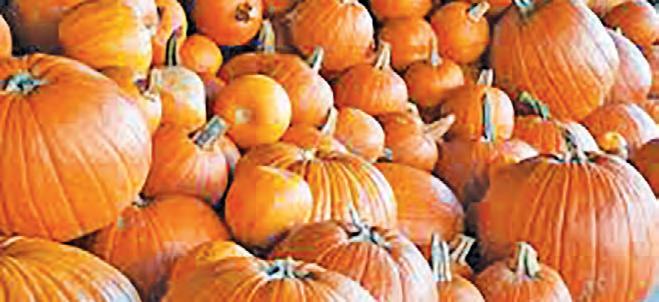
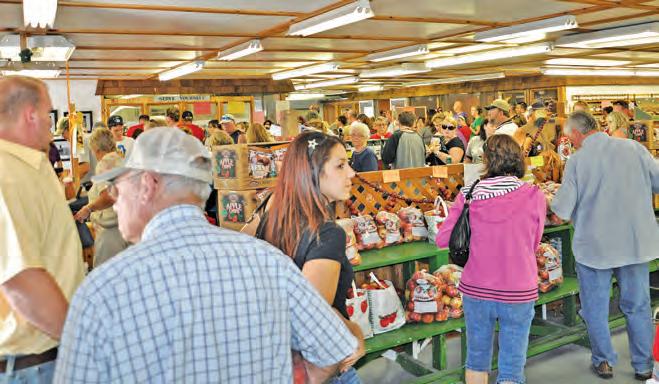
Savor the farm-fresh produce and baked treats at Union Orchard. Bring the kids for pick-your-own fruit and pumpkins, plus monthly events held in our large pavilion. Sample a wide variety of Nebraska wines, hard ciders, and seasonal cocktails in our tasting room.
Music Under The Stars
June 11th, July 16th and August 13th • 7pm in the pavilion
New Moon Campfire
June 25th, July 30th and August 27th • 7pm in the pavilion
Applejack Festival
September 17th and 18th
The Taste of Applejack
September 24th and 25th
Check the events section of our Facebook page for information on bands and speakers
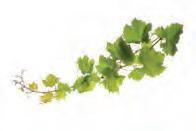
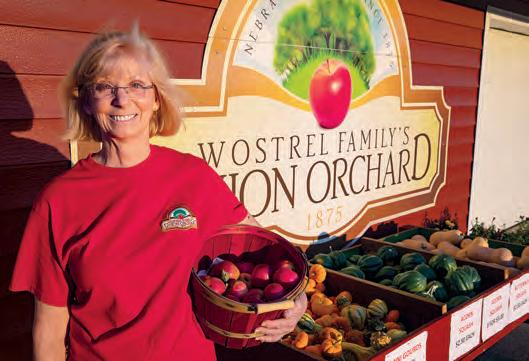
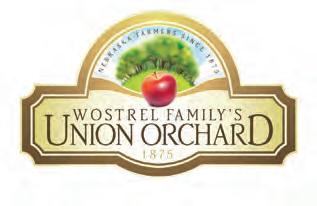
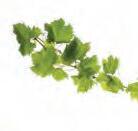
NEBRASKA CITY’S HISTORIC AND ONLY FAMILY-OWNED ORCHARD

Check our Facebook page for
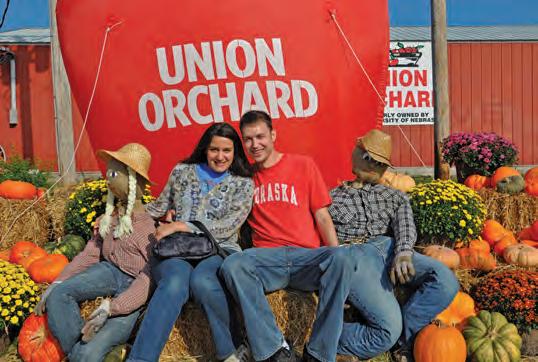
legacy continues
The article about Big Mama’s Kitchen (“Say Grace,” May/June 2022) brought back some good memories from my childhood. I went to grade school with Briannah, Big Mama’s granddaugher. We were also in Girl Scouts together. For one of our experiences, Big Mama taught us how to make apple butter from scratch. I was amazed by the process and remember how delicious it tasted. I love seeing Big Mama’s children and grandchildren keep her legacy alive. I can’t wait to visit the new location.
Barb Sullivan Omaha
Your article on Big Mama’s Kitchen was a beautiful reflection of Nebraska’s heart, diversity, and the way that food brings people together.
Some of my best memories during our time in Nebraska were around a table at a restaurant or at Nebraskans’ homes, sharing food and building friendships. Big Mama’s service by giving people a start or a second chance through employment demonstrated that she truly lived her faith and will have a generational impact supporting community improvement.
We look forward to a visit to Big Mama’s Kitchen the next time we’re back in Nebraska.
Becca Lingley Madison, Mississippi
North Omaha, represent I would like to express my appreciation for the Big Mama’s article. It was well-written and informative, and it is nice to see Omaha, especially North Omaha, getting some attention in Nebraska Life. North Omaha is an interesting, historic, and underappreciated part of the state, and Big Mama’s Kitchen is one of its highlights. I have always enjoyed eating at Big Mama’s but have not yet been to their new location. I will have to check it out sometime soon and stop by Dena’s Place for a drink afterward.
Ian Simons Gretna
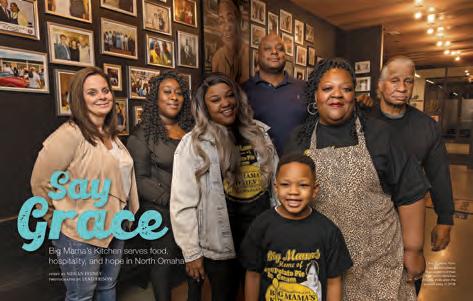
We so enjoyed the pictures and story of biking the Cowboy Trail by Becky McCarville (“On the Trail Again”) in the May/ June 2022 issue. Awesome scenes and a fun adventure being shared. It was a beautiful photo on the back pages as well. Great to see the beautiful scenery that is in Nebraska. Keep up the interesting articles and photos. As a former Nebraskan, we enjoy the magazine.
Carla Jensen Milford, Iowa
No spandex required
While I am not an avid bike rider, Becky McCarville’s article gave me a mental picture of what a little exploration outside the car could be like. She did a fantastic job. It really hit home about all the beauty that is Nebraska. The photographs were stunning.
Nancy Skudlarek Omaha
I enjoyed reading Becky McCarville’s article. The many photos along with Becky’s detailed and descriptive writing were captivating and made me feel like I was on the ride without all the hard work of training or the long days on the trail dealing with the heat and humidity and all the miles. What a great adventure!
It was good to read about Tonya’s full recovery and the great Nebraska hospitality these ladies received in the small towns along the trail, especially in their time of need. I’ll look forward to reading about
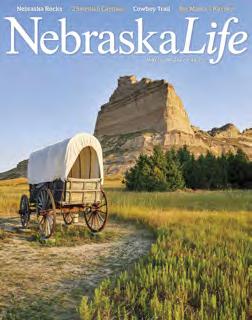
future excursions of these sisters and their friend in the years ahead.
Debb Strate Norfolk
Seeing signs
I was reading Nebraska Life’s “On the Trail Again” when I came upon the photo of Jennifer (the author’s sister) in Bassett. I don’t know her, but I surely recognized the marquee on the building behind her. It made me think of the Auble brothers of Ord, my hometown.
Glen and Jay Auble were very active promoters. They were the prime movers that got Fort Hartsuff north of Ord restored and turned into a tourist site. But they also created and built aluminum marquees that began to show up on storefronts in Nebraska and other nearby states. That was in the 1950s. I know many of these signs still exist in area towns. I think there’s a story there.
J. Keith Cook Omaha
Editor’s note: Thanks, J. Keith, that’s an interesting and valuable observation and a great story idea. We appreciate hearing from you and hope you’ll share more again soon. We learn so much about our state from readers like you.
In the final paragraph of your “How Swede It Is” story in the May/June 2022 issue, the author writes: “Past governors have proclaimed the two cities as Swedish ... Perhaps Wausa should have the governor’s office on speed dial.”
Wausa did better than that – it had a governor elected from their population! I will ask you a Nebraska history question: Which of these three Nebraska ‘cities’ has had an elected governor from their ‘town’? (Oakland, Stromsburg or Wausa?)
WAUSA! Norbert Tiemann was a family friend. “Nobby” was a resident of Wausa when he was elected.
Candace Nelson Wausa
Nebraska is known for its citizens’ proclivity toward making connections with other people. (“Oh, you’re from [name the town]? Do you know ‘so-and-so?”) This was especially brought home to me when I was a graduate student at the University of New Mexico and realized that not everyone thrives on getting to know everyone within a 200-mile radius or in finding ways to make it a small world.
As a home-schooling family, we read a Nebraska Life every morning. The kids gather around a map to find the different towns in the stories or letters to the editor. It’s a way for them to learn their geography while making those Nebraska connections.
Since we’ve subscribed, I discovered an old schoolmate, Alan Bartels, and found his story about my neighbor, Shane Nordhues, (“Hanging on for the Hunt,” January/February 2022) bittersweet.
In the March/April 2022 issue, I read a letter to the editor in Mailbox from a woman in Nebraska City whom I recognized to be a generous benefactor of a nonprofit our family started for kids at the Juvenile Detention Center in Lincoln.
And we all delighted in the story of Nebraska’s fossils (“Natural History Hero,” January/February 2022), which featured the location of what once was my husband’s family farm.
Nebraska Life is a wonderful tool for making those important “You Know You’re a Nebraskan When…” connections. After all the distancing of 2020, I’m glad to have this opportunity to make those connections with my ‘family’ again.
Rosanna Connelly Panama
A favorite pastime
I’m sending my renewal for Nebraska Life. It’s my favorite pastime receiving the magazine and enjoying the many stories of our great state! The pictures are also great – as are the “trips” I take from my chair. Thanks for all the history of our state and for reminding us of our past and present.
Dee Roeber Pender
A league of its own
I have a bone to pick with you about including the Nebraska State Capitol building in an article with “curiosities” in the title. (“13 Architectural Curiosities: Nebraska structures that inspire and intrigue,” January/February 2022.)
The Nebraska State Capitol building is so far out of the league with the 12 other “curiosities,” or any other building in the state, for that matter. You could spend a lot of space on just the building, its design, history, and place in the architectural lexicon over the last 100 years.
For instance, Journal of America Institute of Architects, December 1948: “Five hundred architects polled to determine 25 best built buildings in the world of all time. The Nebraska Capitol was fourth on the list and placed ahead of .... the Parthenon in Athens...”
In The Capitol, 1954, by Harry F. Cunniham, “... building cost less per cubic foot than has any State Capitol built in the United States since the early days of the Republic.”
You get my drift, I’m sure. I had the good fortune to be able to spend two to four weeks at the start of the summer in 1953, 1954, and 1955, working for the Highway Department, before they shipped me off to various sites in the state to help get the flat architecture known as highways built. I spent all my breaks wandering through the building, inside and out.
Even though I have lived in Colorado since 1965, every time I went back to Lincoln (my hometown, LNEHS, UNL grad) I had to stop by the Capitol. Even if it was only to take some pictures.
For four years, 1959-63, I worked in Lincoln as a structural engineer for Davis and Wilson architects. One of the projects I did was the Nebraska State Education Building directly west of the Capitol.
Richard Conard Windsor, Colorado
Editor’s reply: We wholeheartedly agree with your assessment that the Nebraska State Capitol is a treasure. We struggled with a headline for that story that would capture all the architectural elements we wanted to cover. Nebraska Life devoted a 44-page issue to the Nebraska State Capitol about a decade ago. It’s a story worth returning to again and again, because there are so many angles to it. Thanks for your letter.
We so enjoy Nebraska Life and like to share it with friends and family who live out of state. Keep up the wonderful news!
Carol Casteel Lincoln
It would seem someone is putting her stamp on Nebraska Life – and it’s a good stamp. The Big Mama’s Kitchen (“Say Grace,” May/June 2022) and Rachel Brownlee (“A Good and Perfect Gift,” May/June 2022) stories are perfect bookends.
I don’t know how you’ll top this last issue, but I expect you will.
Bryan Jones Fairplay, Colorado
Please send us your letters and emails by July 15, 2022, for possible publication in the September/October 2022 issue. One lucky winner selected at random will receive a free 1-year subscription renewal. This issue’s winner is J. Keith Cook. Email editor@nebraskalife.com, or write by mail to the address at the front of this magazine. Thanks for reading and subscribing!
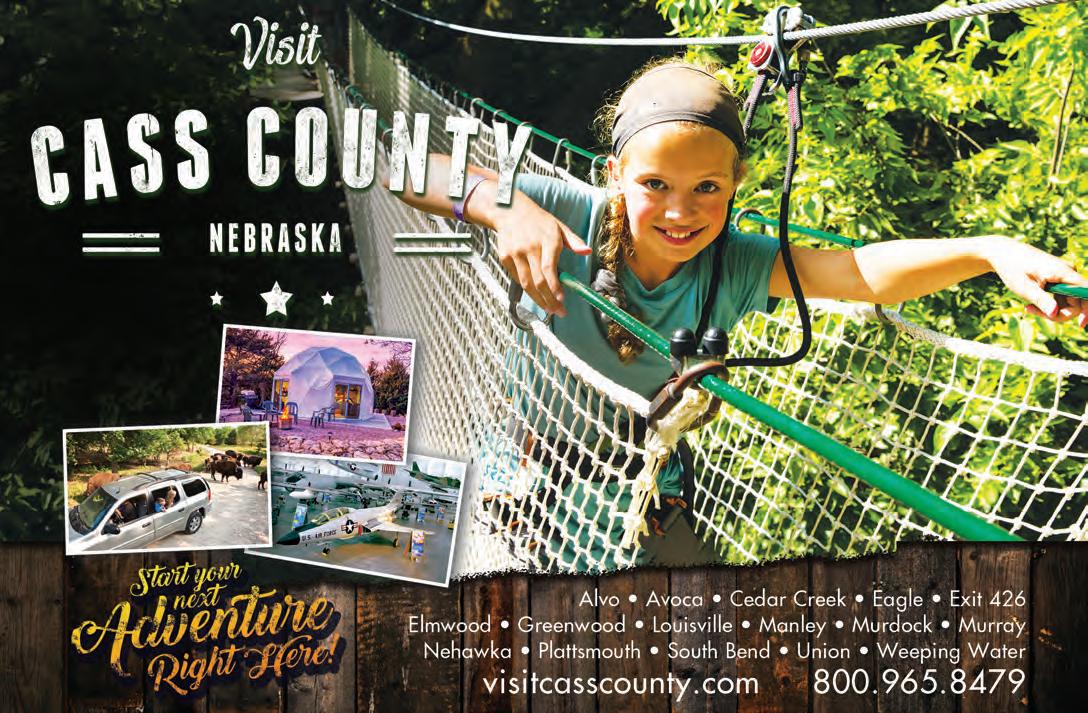

story by LAURYN HIGGINS
illustration by LISA OLSEN
“I Spy with My Little Eye” is the Litgraf family’s go-to game on minivan road trips. “The second we hit the Interstate, my son starts up,” said Lincoln resident Shannon Litgraf. Of course, it keeps the kids busy, but a new spotting last year was one her family will never forget.
They were slowing down to pull off I-80 for gas near Superior when their 6-yearold son excitedly described something brown … with a hard shell.
They pulled over on the shoulder of the exit ramp to investigate, and just like that, a new animal became part of the game’s lexicon.
“We were staring at an armadillo,” Litgraf said.
Because armadillos don’t hibernate and need food and shelter to survive winter, Nebraska is not a particularly welcome place for them. Still, in recent years, armadillos – a Spanish word meaning “little armored ones” – have migrated north into the state.
Shaun Dunn, a natural heritage zoologist with the Nebraska Game and Parks Commission, fields three to five reports of armadillo sightings a year. While most are in southern Nebraska, armadillos have been spotted as far north as Bassett.
This past winter was mostly mild with little snow, so the little armored ones likely have been expanding their territory in
Nebraska, including urban communities.
Lincoln police were alerted to an armadillo in the busy Haymarket District. Waverly resident Todd Carter was one of the witnesses.
When he spotted the critter, he wasn’t sure what was happening. He asked his buddies if they were seeing what he was seeing. “Once we heard the police were on their way, we knew he [the armadillo] would be alright,” Carter said.
The Litgraf’s armadillo was fine too, not even bothered by the attention.
“It was as if he was used to people stopping and staring,” Litgraf said. “He just sat there.”
Slowly but surely, armadillos are on the march across Nebraska.
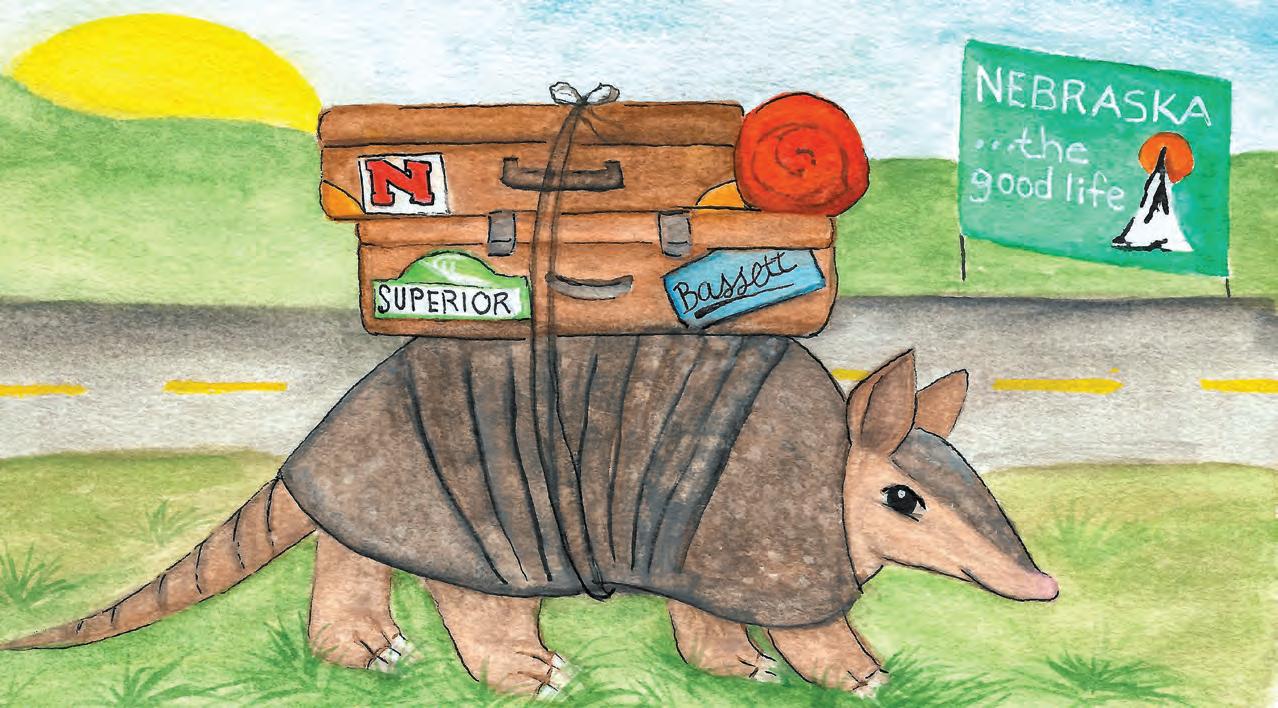
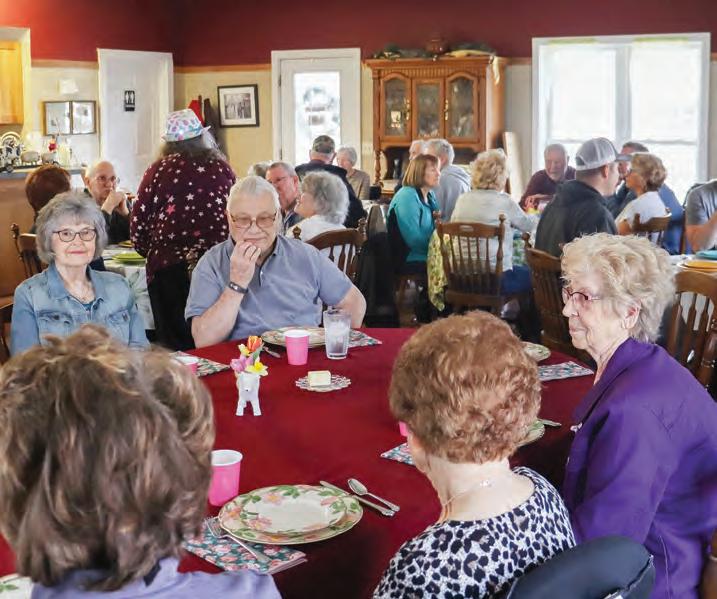
Guests’ excitement builds as lunchtime nears. There’s no menu at Jeannie’s Place in Lewiston, where Diane Trout (L) and Jeannie Tegtmeier (R) serve locally sourced farm-fresh fare.
BY MEGAN FEENEY
Young farmers Tim Sisco and J.R. Nelson have been “pushing dirt” all morning. They ravenously eye the heaping plate of oven-fried chicken and the big bowl of steaming mashed potatoes that Jeannie Tegtmeier places before them.
There’s no menu at Jeannie’s Place in the Pawnee County village of Lewiston, and one “shortcut” instructs drivers to take a 7-mile-long gravel road to get there. Regulars embrace these conditions as part of the place’s homespun charm. Jeannie’s Place serves scratch-made farm fare lunches from Monday through Friday. She often uses local ingredients, like eggs from the coop out back, chickens from Plum Creek Farms in Burchard, or vege-
tables from a friend who swaps her garden bounty for Tegtmeier’s hen’s surplus eggs.
At a recent luncheon, 40 guests sat around a handful of tables decorated with cotton linens and bright Fiestaware. Quilts, ceramics, vintage furniture and knickknacks decorate the environs. There is an old wood-burning stove in one corner of the room, a baby grand in the opposite corner. Guests celebrating a birthday enjoy a special performance by Tegtmeier herself, who used to teach piano, among other subjects.
Tegtmeier came to cook for crowds because of her family. Her brothers were in the purebred cattle business, so she often cooked for them, the “lookers” – potential buyers – and the hired hands. She wondered if others would pay for it – and she
wanted to add a big room onto her farmhouse anyway. It would provide more space for her grandkids to play when they visited. She built an addition to her house and opened her restaurant in 2010. Since then, she and her longtime helper Diane Trout have made scores of scratch-made rolls, plentiful homemade pies, and just about a mile of meatloaf.
Lunches include a salad or fruit, freshbaked roll with butter, the main course, pie and coffee. It costs $10. The family-style serving lends an intimate feel, where people who are strangers at the start of lunch are friends by the end. Guests at different tables also turn in their chairs to banter and chat.
As Sisco puts two pieces of chicken on his plate and a mound of mashed potatoes and gravy, he passes the dishes to the adjacent table.
“Now, make sure you pass this back with any extra,” Sisco jokes.
“Not a chance,” comes the swift retort.
Lunch-goers laugh, but not for long. The food is hot. It’s time to dig in.
Jeannie’s Place
201 Miles Ave., Lewiston (402) 865-4355
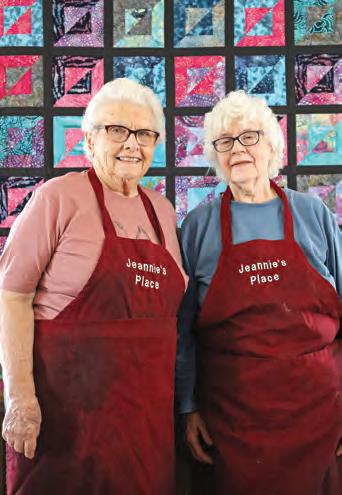
BY MEGAN FEENEY
Professional wrestling is a sport that is equal parts athleticism and dramatic performance. Omaha-born-and-raised Bearcat Wright had both in a headlock. He ripped phone books in half, crushed apples in one hand, delivered flying dropkicks and picked up and flipped wrestlers that had 100 pounds on his 6-foot-6-inch 260-pound frame. And he wasn’t afraid to take on even bigger fights than the 360-pound meathead opposing him in the ring.
He began his wrestling career as the civil rights movement got underway in the 1950s – and he joined the fight. Before a raucous crowd of fans in Gary, Indiana, the Black pro wrestler declared he would no longer participate in segregated wrestling. The Indiana State Athletic Commis-
sion promptly suspended him.
But the suspension didn’t last long. Wright’s courageous stance and popularity among people of all races and ages hastened the desegregation of professional wrestling. Wright was a “babyface” in the sport – a good guy.
As one commentator remarked at a 1961 Bearcat match against Big Moose Cholak, “Bearcat’s a lovable guy ... Everybody likes him.” Everybody except for the guy on the other end of the headbutt.
Announcers at Wright’s matches billed him from Kingston, Jamaica, but this was part of his fictional persona. In fact, he was the son of accomplished boxer Ed “Bearcat” Wright, who owned a barbecue restaurant in Omaha. Like his father, the younger Wright also began his career as a boxer, going 8-0 before pivoting to
wrestling. Just days before Martin Luther King’s “I Have a Dream Speech,” in August 1963, Wright won the Worldwide Wrestling Associates World Heavyweight Championship.
He died in August 1982 at the age of 50 from complications with sickle cell anemia. In 2017, he was inducted into the World Wrestling Foundation Entertainment Hall of Fame.
Last year, one pro wrestler shined a light on Bearcat’s life and achievements. The contemporary pro wrestler Keith Lee returned to World Wrestling Entertainment RAW with the new name, “Bearcat,” a tribute to the Omaha changemaker. It will be tough to live up to the name of that Nebraska notable.
To see the Omaha wrestler in action: https://tinyurl.com/2p86x2z4
Omaha-born-and-raised professional wrestler Bearcat Wright delivers a flying dropkick to his opponent with the full force of his 6-foot-6-inch frame. With his charm and style, Wright played the role of a good guy in his matches. His biggest fight was for equality.
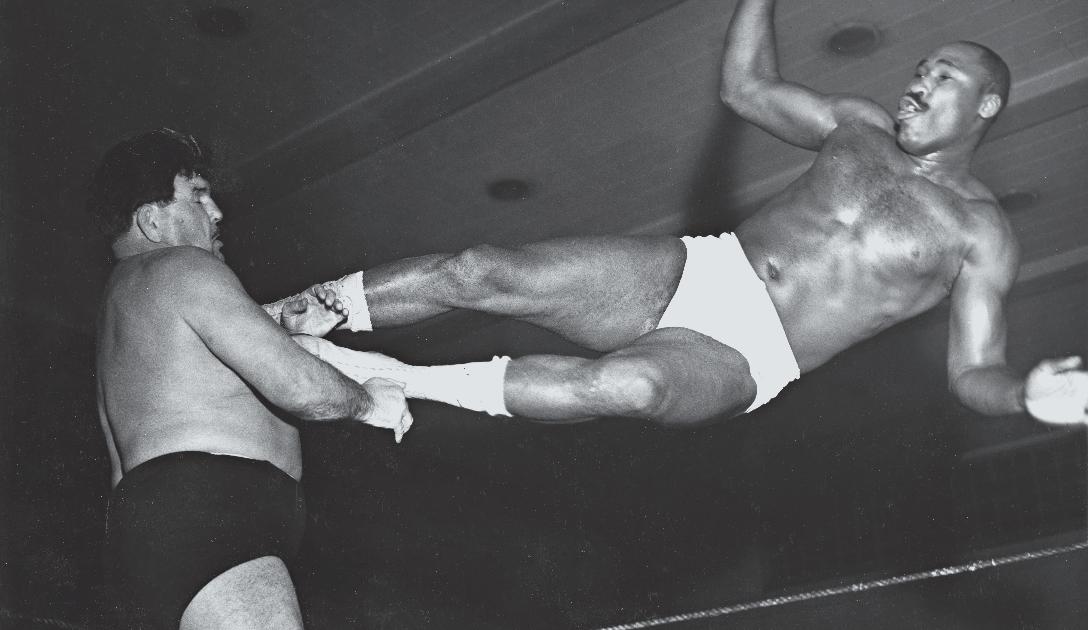
BY JOSHUA HARDIN
Prairie Agate Rock Shop’s giant metal Tyrannosaurus rex skull grabs the attention of drivers east of Crawford along U.S. Highway 20.
Visitors meet owner Valerie Homringhausen, who shares a longtime love of fossils with husband Gary and son Tyrell.
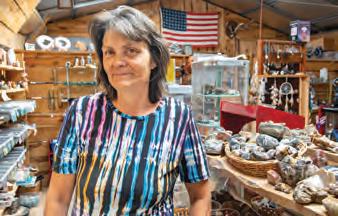
Her knowledge of the area’s rockhounding locations grew with Tyrell’s childhood curiosity for collecting fossils. She helped him set up a table at the Crawford Rock Swap when he was 7. Now Valerie helps coordinate the Labor Day event to buy, sell and trade geological wonders – including the shop’s namesake prairie and rare Fairburn agates.
Valerie purchased a relative’s rock collection for the shop’s first inventory. Wares now include Native American art, horsehair pottery and jewelry. Her favorite items remain her son’s fossil finds, including a juvenile titanothere – an extinct rhino-like creature he uncovered with his grandfather. The shop showcases Tyrell’s treasures to educate visitors and residents about what they can dig up from the region’s fossil hunting hotspots.
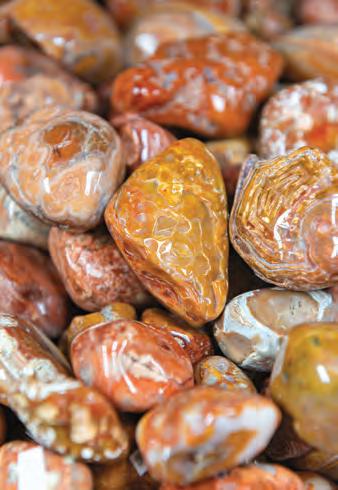
Prairie agate is a semi-precious stone, a variegated quartz, that is often prized for desktop interest or jewelry making.

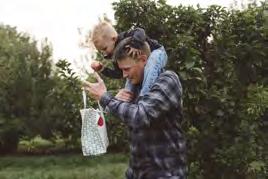

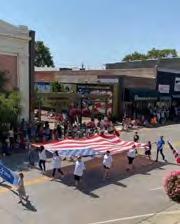



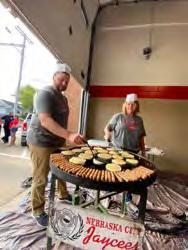
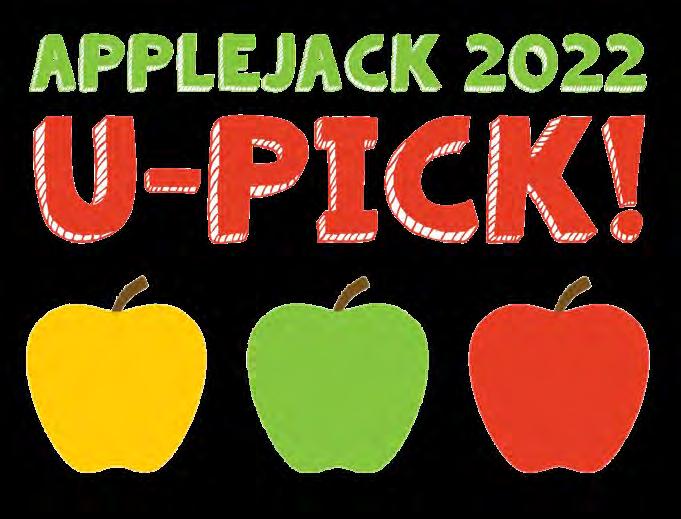
September 16-18 & 24



BY SAVANNAH REDL
A bell rings above the door at Susan’s Books and Gifts in Aurora. Inside the sturdy downtown brick building, Susan Williams greets customers with a bright smile and a steaming cup of vanilla-flavored coffee. Silk flowers dangle from the ceiling, and a 19th-century quilt made by her great-grandmother hangs on the wall.
Generosity is at the heart of Williams’ mission. Every customer who walks through the door gets a free used book. They can buy any additional used books for just $2 a book. Last year, Williams gave away 10,000 free books.
Poems and inspirational sayings decorate the walls, including the expression “Life is Beautiful” written in 100
languages. Williams’ kindness and the store’s intimate atmosphere make people feel safe to be vulnerable.
One woman who was moved by a poem on a wall wept and confessed to other customers that she’d recently passed the first anniversary of her son’s death.
Williams and the customers allowed the bereaved mother to share photos of her son. They fortified her with their quiet presence. Williams then found the woman a book on grief.
Williams experienced her own grief after her parents died in 2001, the year she and her husband, Stu, opened their store. As teachers, they wanted to create an atmosphere for learning and book appreciation in Central Nebraska.
Aurora residents have supported their store – not only as customers but also
as donors. Like Williams’ great-grandmothers’ quilt, the books here are handed down. Many have received the same respect and loving care. The books have spread warmth and given comfort.
Williams loves to match kids with books that she knows they’ll love. Many of the children who are regulars affectionately call Williams “Susansbooks.” Recently, she greeted a young boy and asked if he still needed the history book he’d mentioned on his last visit. He grinned at her as she handed it to him.
No one leaves empty-handed.
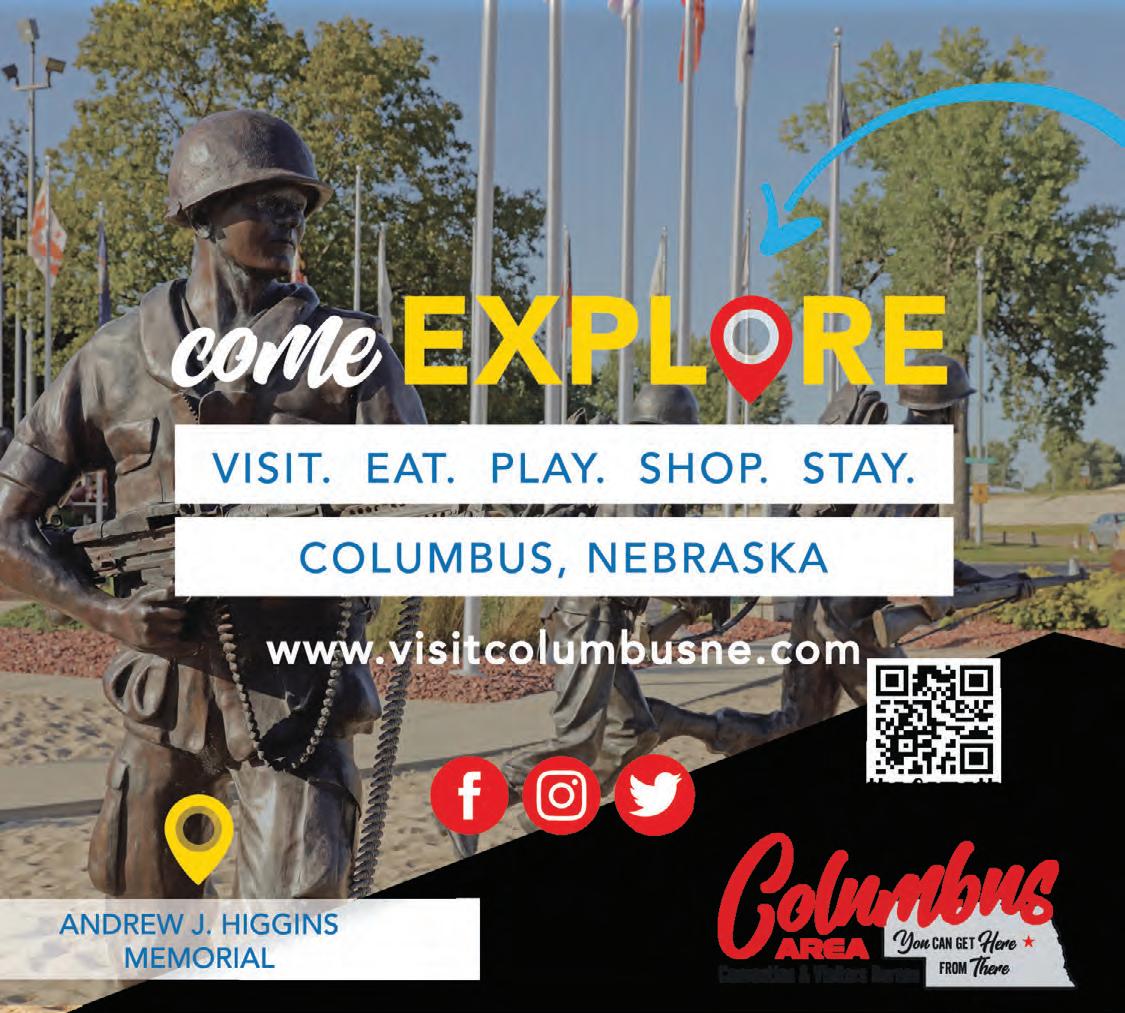

Susan’s Books and Gifts 1124 13th St., Aurora (308) 624-0386
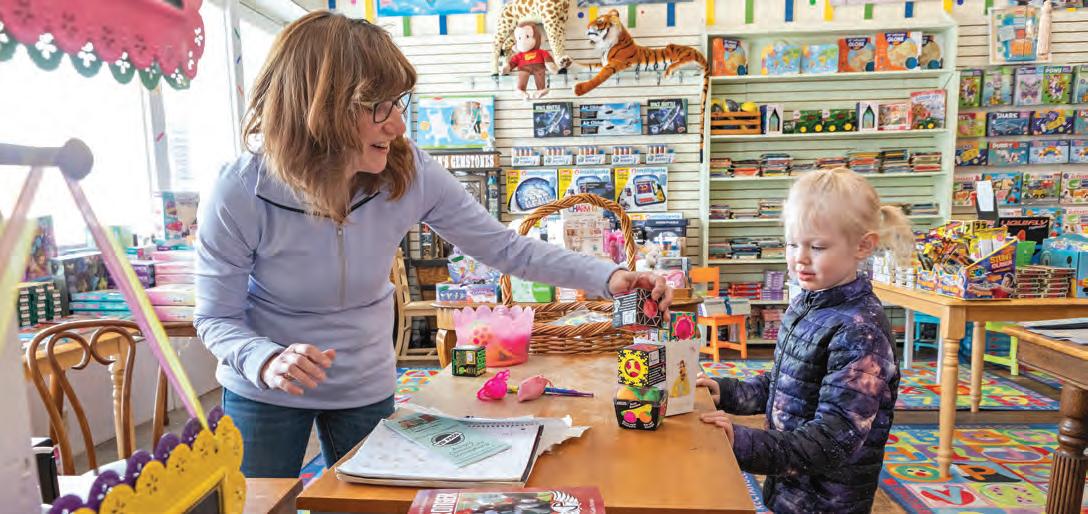
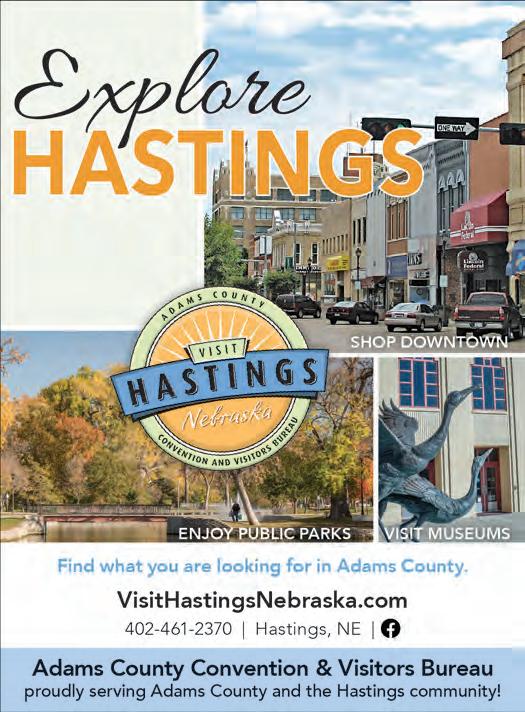
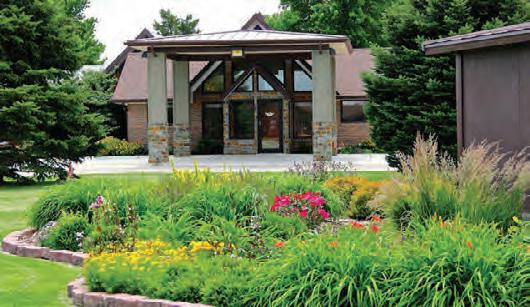


BY LAURYN HIGGINS
On a summer morning, the sun rose over Kimball Avenue in Gering. Eastern bluebirds took flight. Bees hummed. The doors of an unassuming greenhouse opened, and visitors slowly made their way inside. Soon a small crowd formed around a 20foot tree lush with broad-lobed leaves and tiny green fruits.
Admirers from Gering and surrounding towns flock to see this locally famous half-century-old fig tree at Community Ever Green House. Richard Breen, a Terrytown resident, visits every year to see how the tree is doing. “Kind of like an old friend,” Breen said.
Fig trees aren’t typically found in Ne-
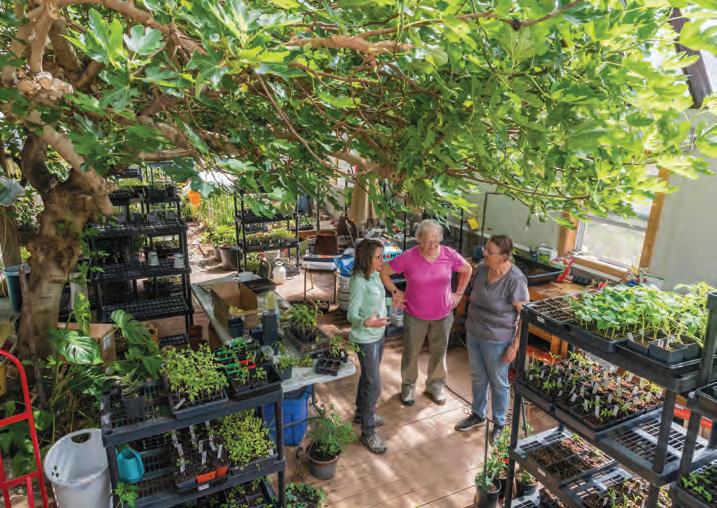

8 miles off the I-80 Lexington Exit
Enjoy our safe and accessible 10 miles of paved and off-road trail around the beautiful lake, two Nebraska state parks, and 23 landscaped rest areas. Great for families with children of all ages! Plan a day to play at our swimming beach, golf course, restaurants, labyrinth and playground. Five hotels and three cabins available for your stay.
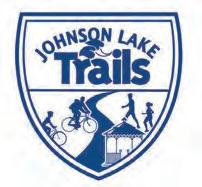
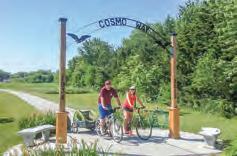
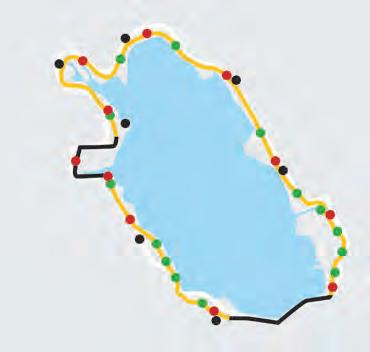

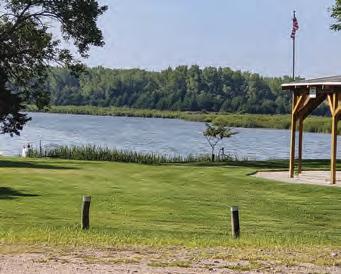
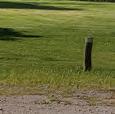
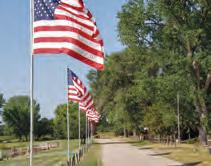



braska – they’re native to Mediterranean and Western Asia climates – but this one came from a Wyoming botanical garden in the 1980s. Under the loving care of volunteers who staff the greenhouse, the tree has thrived. It’s also fed the community.
Gering might be the only place in Nebraska to offer locally grown figs for sale. The tree produces up to six pounds a year, which the greenhouse sells for $5 a pound. Volunteers also grow and sell tomatoes, peppers, jalapeños, carrots, cucumbers, herbs, horseradish and flowers. Profits go back to the greenhouse.
The city of Gering pitches in once a year to help prune the tree. Otherwise, it “would grow through the ceiling,” said Susannah Endicott, a former greenhouse volunteer who now lives in Chadron.
For Breen, the Terrytown resident, the fresh figs are “something special” to slice up and eat alongside his morning coffee. Knowing that they came from just up the road makes them even sweeter.





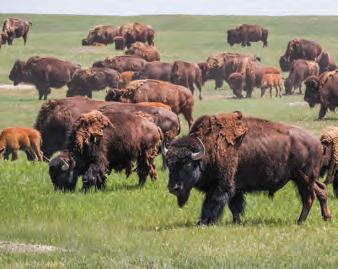
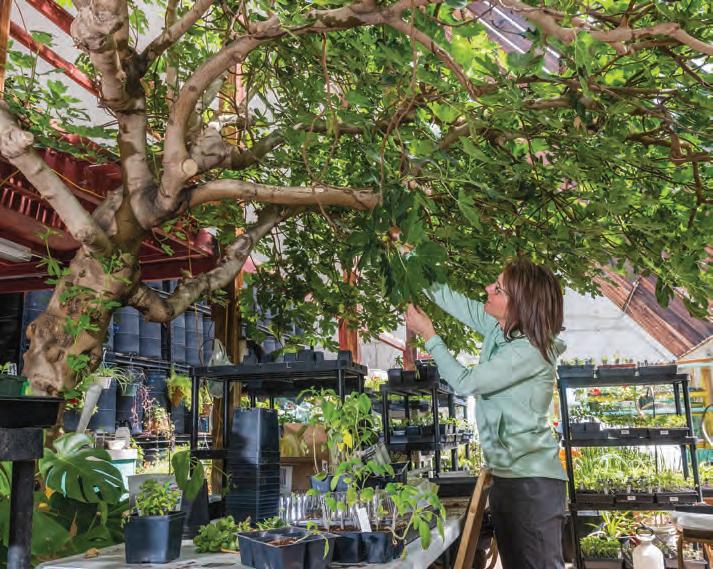
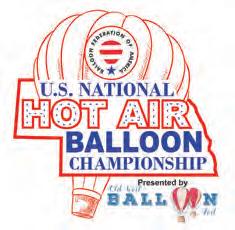


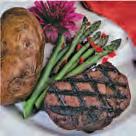


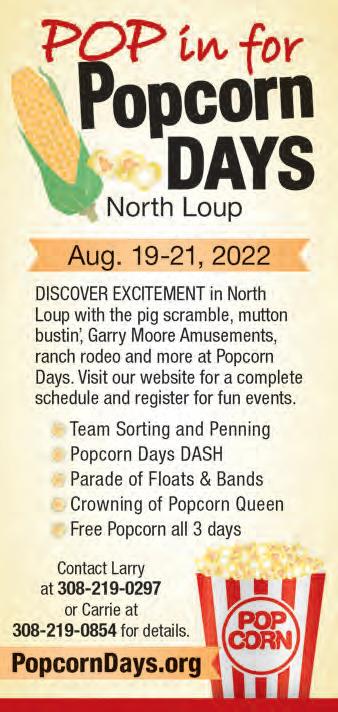


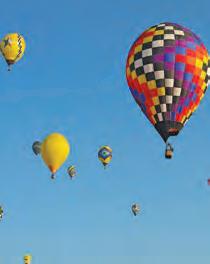
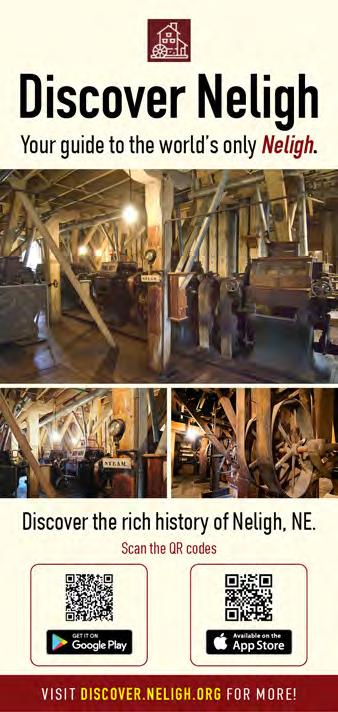
Challenge your brain with our Nebraska quiz. Questions by ALEX FERNANDO
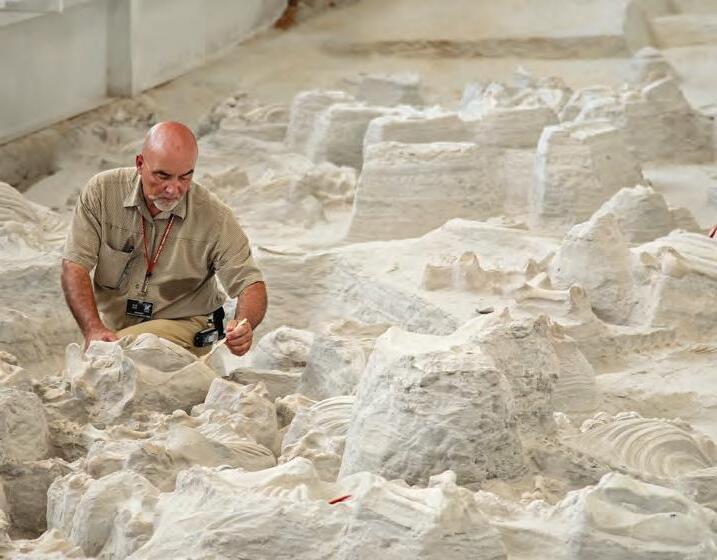

1
Devil’s corkscrews, 7-foot-tall structures found in Nebraska and Wyoming with spiraled helixes in the ground, are fossilized what?
2
What display located at Trailside Museum at Fort Robinson State Park near Crawford depicts two fossils of large animals engaged in combat?
3
What are Nebraska’s two state fossils? Hint: These creatures packed their own trunks.
4 What volcanic eruption approximately 12 million years ago created Ashfall Fossil Beds near Royal?
5 What covered Nebraska from the Cambrian to Devonian periods (541-360 million years ago)?
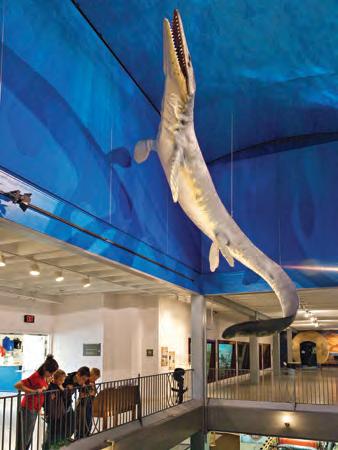
6
Proboscideans – or animals with trunks – were common in pre-historic Nebraska. In fact, Proboscidean fossils have been found in 90 of the 93 counties.
7 Ashfall Fossil Beds is known as a “lagerstätte,” German for “storage place” for how well sediment has preserved fossils.
8 Nebraskan Charles Henry Morrill financially supported many of the state’s first paleontological digs.
9 Toadstool Geologic Park in Crawford draws its name from the ample seating it provides amphibians.
10
The Dakota Formation is a sedentary rock layer that spreads across Minnesota, Iowa, Nebraska and Kansas. It got its name from Dakota City, Nebraska.
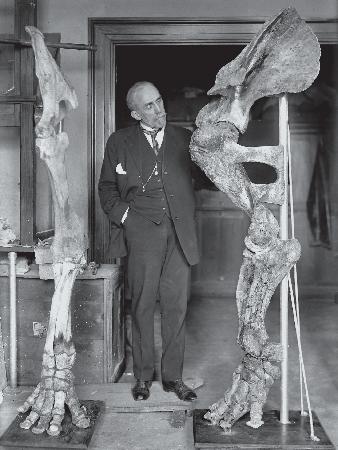
11
What museum features a life-size sculpture of a Tylosaurus, a now-extinct marine reptile?
a. Hastings Museum
b. Museum of Nebraska Art
c. Clayton Museum of Ancient History
12
Paleontologist Erwin H. Barbour served as director of the University of Nebraska State Museum for 50 years and has a prehistoric creature named after him. What type of animal is a Barbourofelis?
a. Two-horned rhino
b. Saber tooth cat
c. Bear-dog
13
The name “Daeodon,” a prehistoric predator found at the Agate Fossil Beds National Monument near Harrison, means what?
a. Deadly bite
b. Hostile or dreadful tooth
c. Snaggled tooth
14
What is the name of the world’s largest mounted mammoth skeleton that is now on display at Morrill Hall at the University of Nebraska-Lincoln?
a. Manny
b. Tusker
c. Archie
15
Nebraska has many prehistoric rhino remains that can be identified as males versus females based off what feature?
a. Large lower tusks
b. Wide hips
c. Larger horns
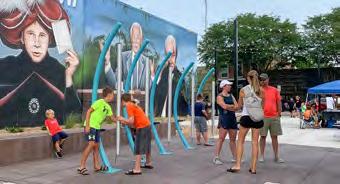


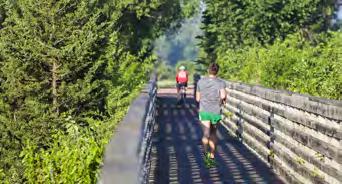
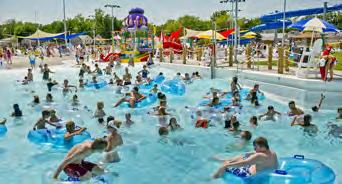

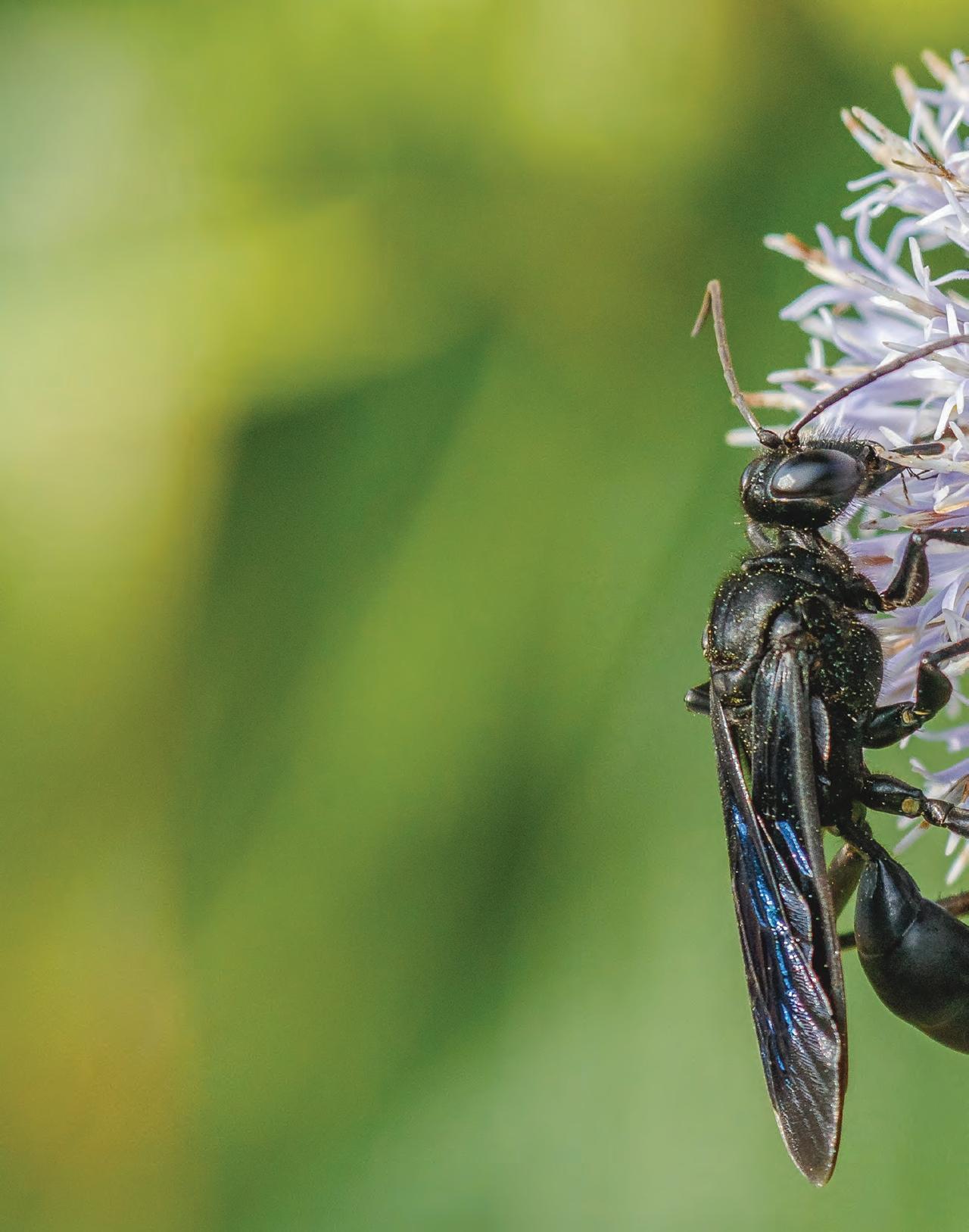
by MEGAN FEENEY
IN MID-SUMMER, NEBRASKA gardeners are harvesting the fruits of their toil. They’re not the only ones who’ve been hard at work.
Bees, moths, flies, beetles, wasps, birds, and bats are among Nebraska’s pollinators. When they visit flowers to feed, they transport pollen from one plant to another. Nebraska’s leading crops – corn and soy – don’t need pollinators to thrive (they rely on the wind), but our state’s gardens and orchards do.
Cucumbers and coriander, pears and plums, tomatoes and turnips are among the 150 food crops in the United States that rely on pollinators. Nebraska’s state insect, the honeybee, also makes a sweet treat to share.
The Bee Lab at the University of Nebraska-Lincoln works with beekeepers in Scottsbluff, North Platte, Grand Island, Nebraska City, and other locations statewide to develop management strategies for healthy hives – and bountiful honey harvests. In addition, the Bee Lab educates the public on pollinators and ecosystem diversity. The lab also sells honey – by the honey bear, the jug, or the 60-pound bucket – to support university research on the stressors that impact pollinator health.
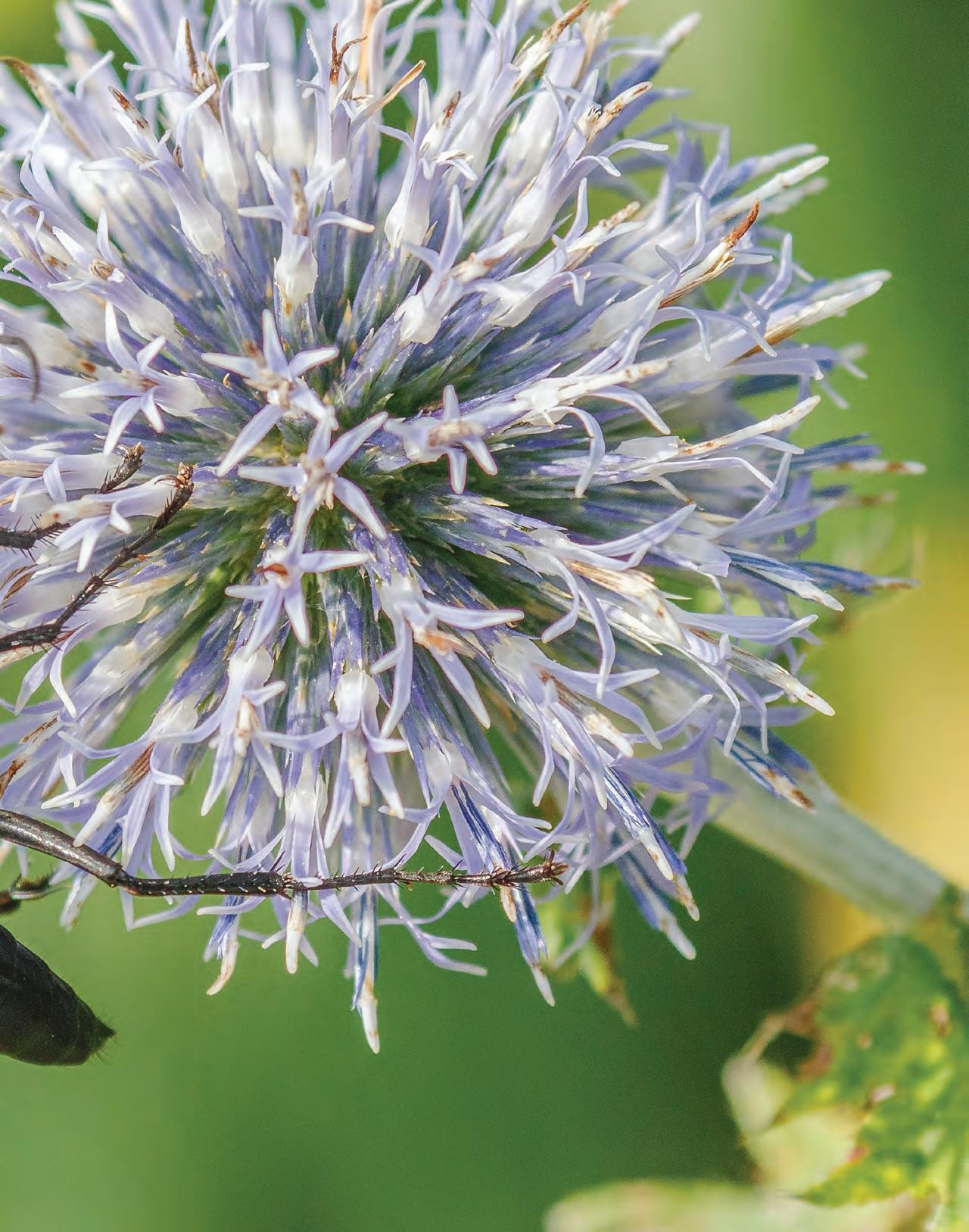
great black wasp might look scary, but it has a purpose. Pollinators come in all shapes and sizes.
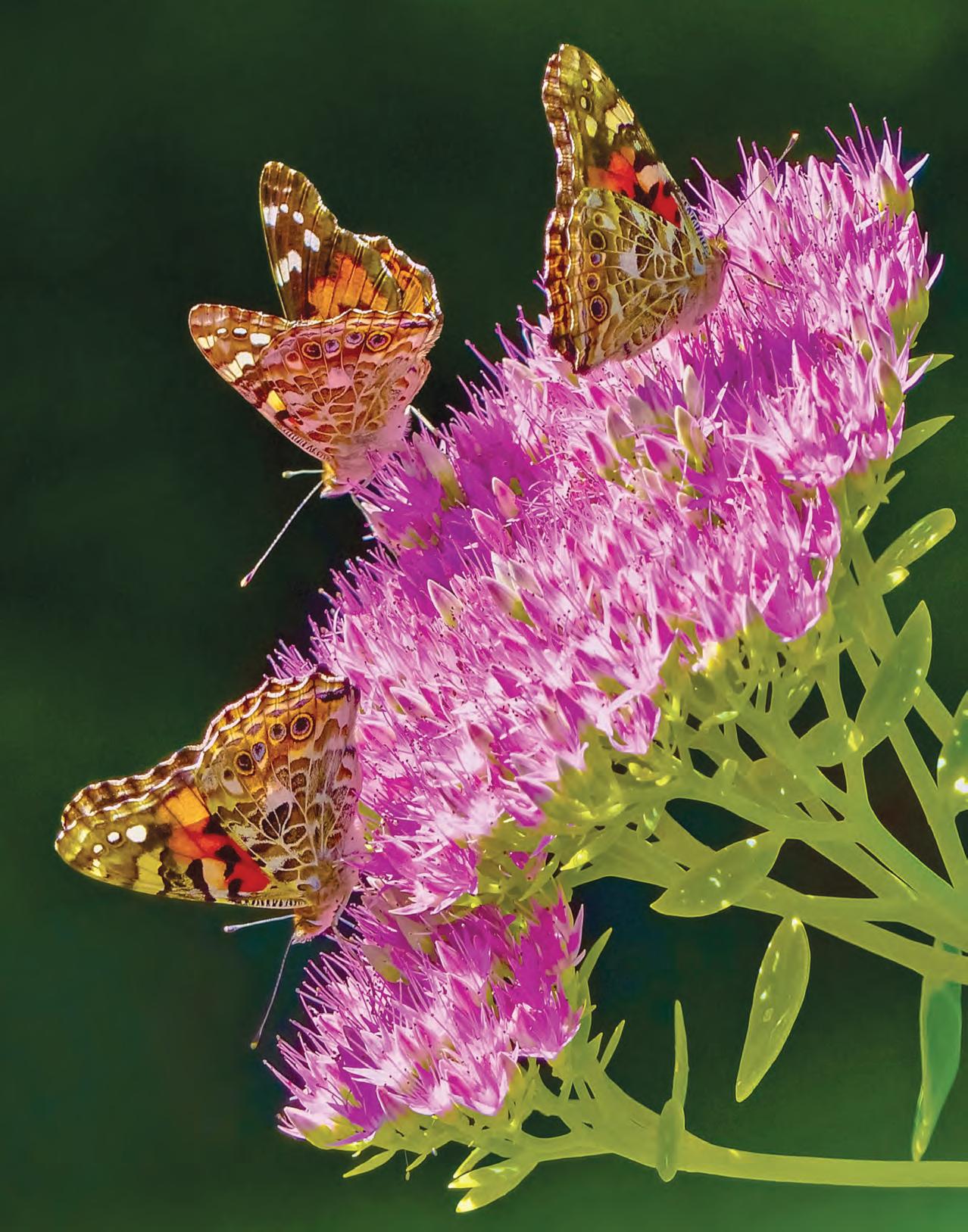
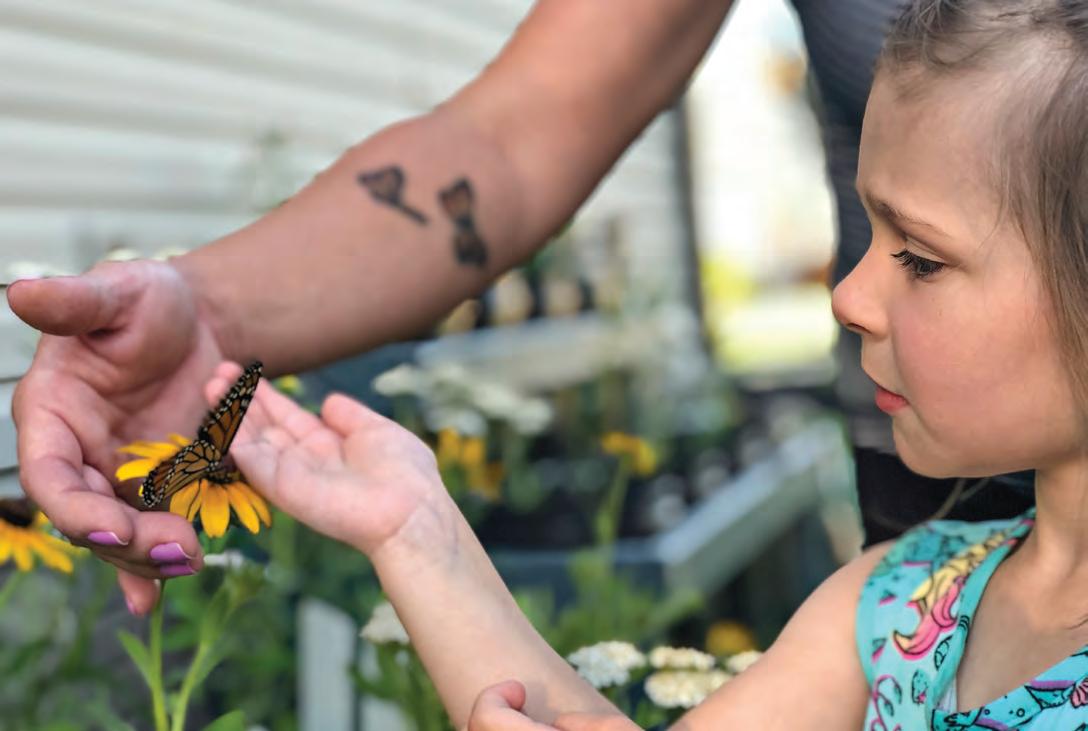
Not far from Lincoln, another community is also doing its part to support pollinators by planting native Nebraska plant species and limiting pesticide use. In 2021, Bellevue became the first and only city in Nebraska awarded a Bee City USA designation. City parks, public spaces, and homeowners’ lawns feature pollinator favorites, like coneflower, gayfeather, and bee balm.
Nebraska pollinators depend on specific plants and flowers. Eastern carpenter bees love penstemon. Blue-green sweat bees aim for aster. Soldier beetles line up for goldenrod. And monarch butterflies go ga-ga for milkweed.
Ami Sheffield, one of our photo essay’s featured photographers, plants milkweed for the monarchs and parsley for the black swallowtails. She also keeps a fridge full of butterfly chrysalises in her Omaha home until the temperatures become mild and she can safely bring them outside to escape and spread their wings. Sometimes Sheffield starts growing butterflies from the eggs she finds. Other times, she discovers plump caterpillars that need a safe place to begin their transformation.

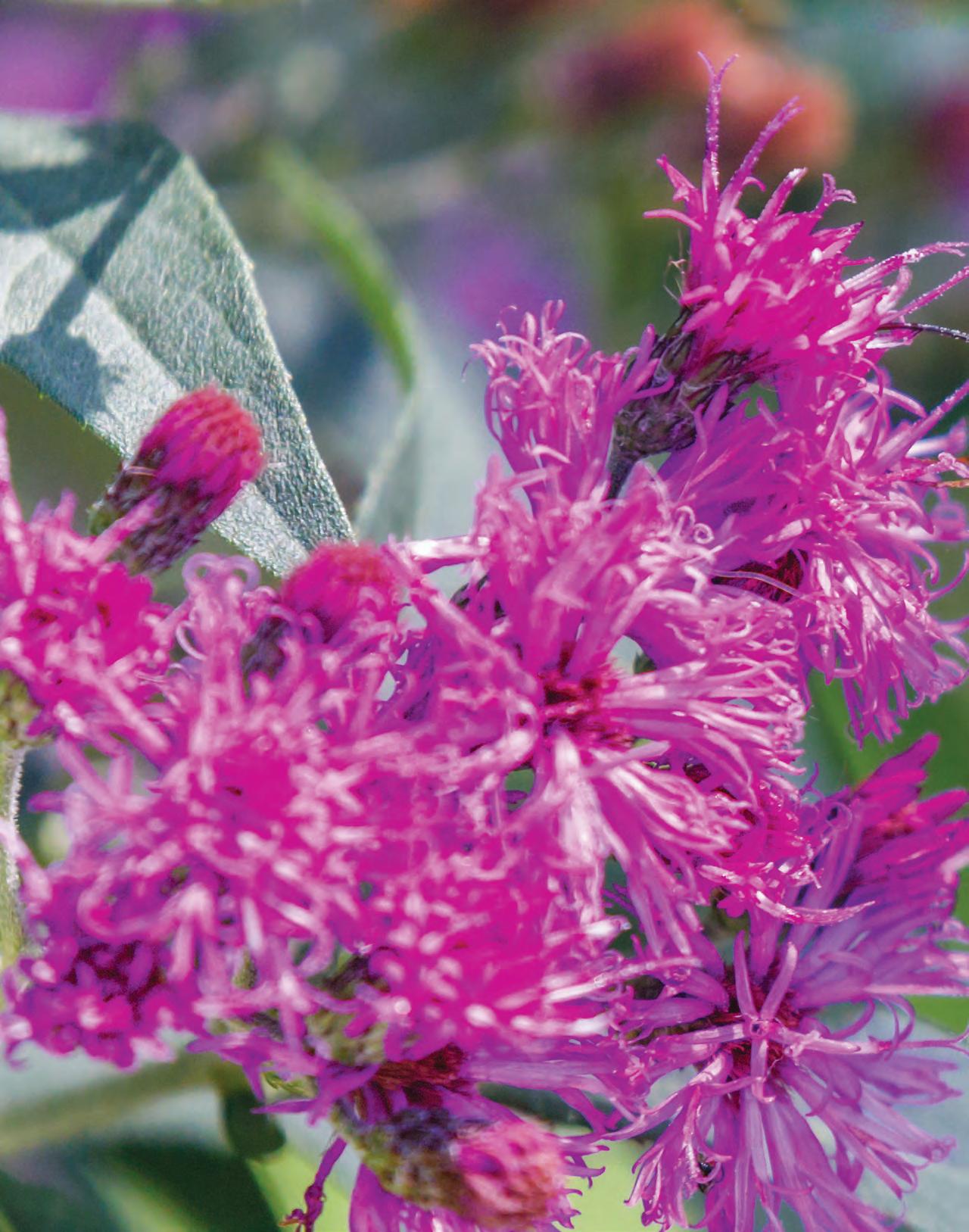
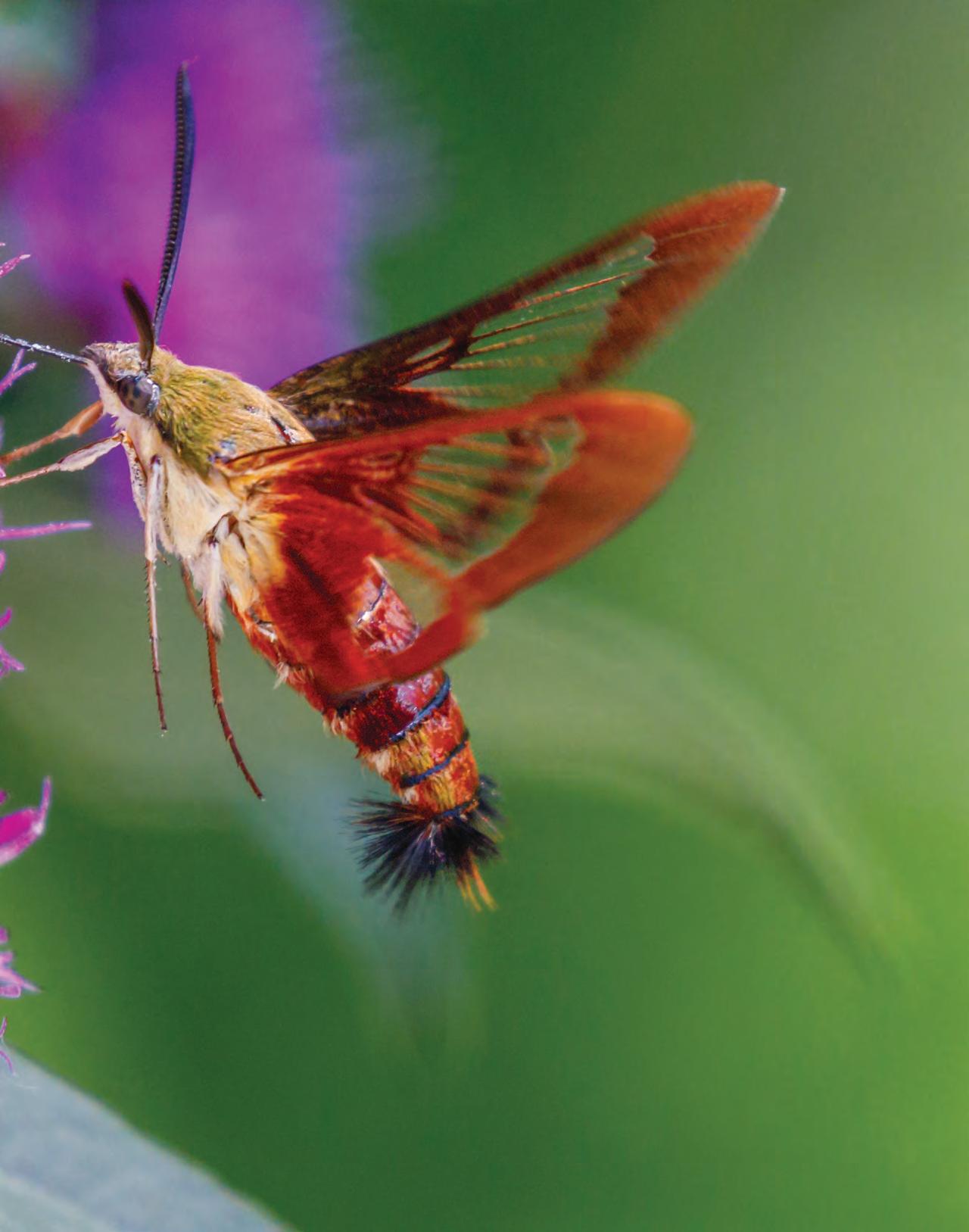
Like its avian namesake, the hummingbird moth, an insect not a bird, can fly at high speeds and hover while feeding.

Ants play a small role in pollination. They keep clean and can’t fly. Still, some plants, especially in dry areas, rely on them.
Ami Sheffield
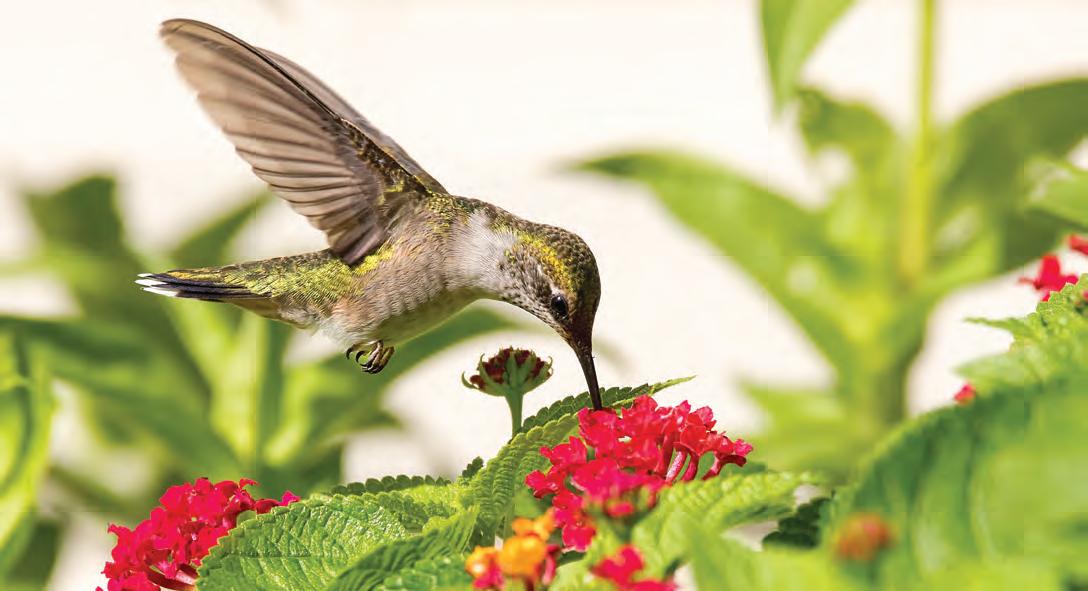
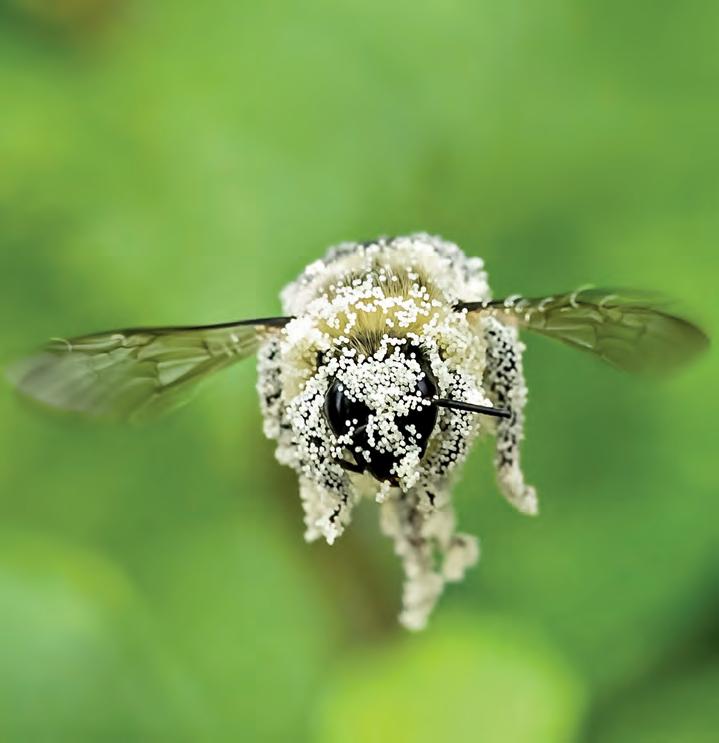
Recently walking her dogs, Pixel and Halen, around Zorinsky Lake, Sheffield discovered three giant monarch caterpillars on one milkweed leaf – prime targets for a bird’s juicy meal. She brought the caterpillars home and tended to them as they created their chrysalises. A few weeks later, they emerged, unfolding their brilliant orange wings.
Sheffield shares her love for butterflies with her sister, Rebecca Cuadrado, who has a monarch way station – an intentionally managed habitat with food and shelter – in her Omaha garden and regularly tosses “milkweed bombs” onto the grassy strips along highways and the weedy environs of unused urban lots. Ami and Rebecca grew up near Zorinsky. Their parents encouraged a love of nature in their girls, who caught moths and butterflies in nets and tossed grasshoppers into the webs of hungry spiders. They analyzed their finds under kiddie microscopes and stayed up late in the summer watching fireflies.
Sometimes when Sheffield shows her photos of pollinators to friends, they ask her how she found so many.
She slowed down, she said. She sunk into the stillness of a summer afternoon in Nebraska and discovered they were there all along – in the state’s prairies and forests, riversides and suburban backyards –if one only took the time to notice.

Nebraska institutions, like the Arbor Day Foundation, are celebrating big birthdays this year.

by MEGAN FEENEY
For 25 years, Nebraska Life has elevated the good. We’ve done this by featuring heartfelt, thoughtful, entertaining stories and breathtaking photography that reflect our state’s people, places, cultures and communities. In recognition of our anniversary, we decided to share the spotlight with other Nebraska organizations that strengthen and beautify our good life and make us proud of what we can accomplish when we work together.
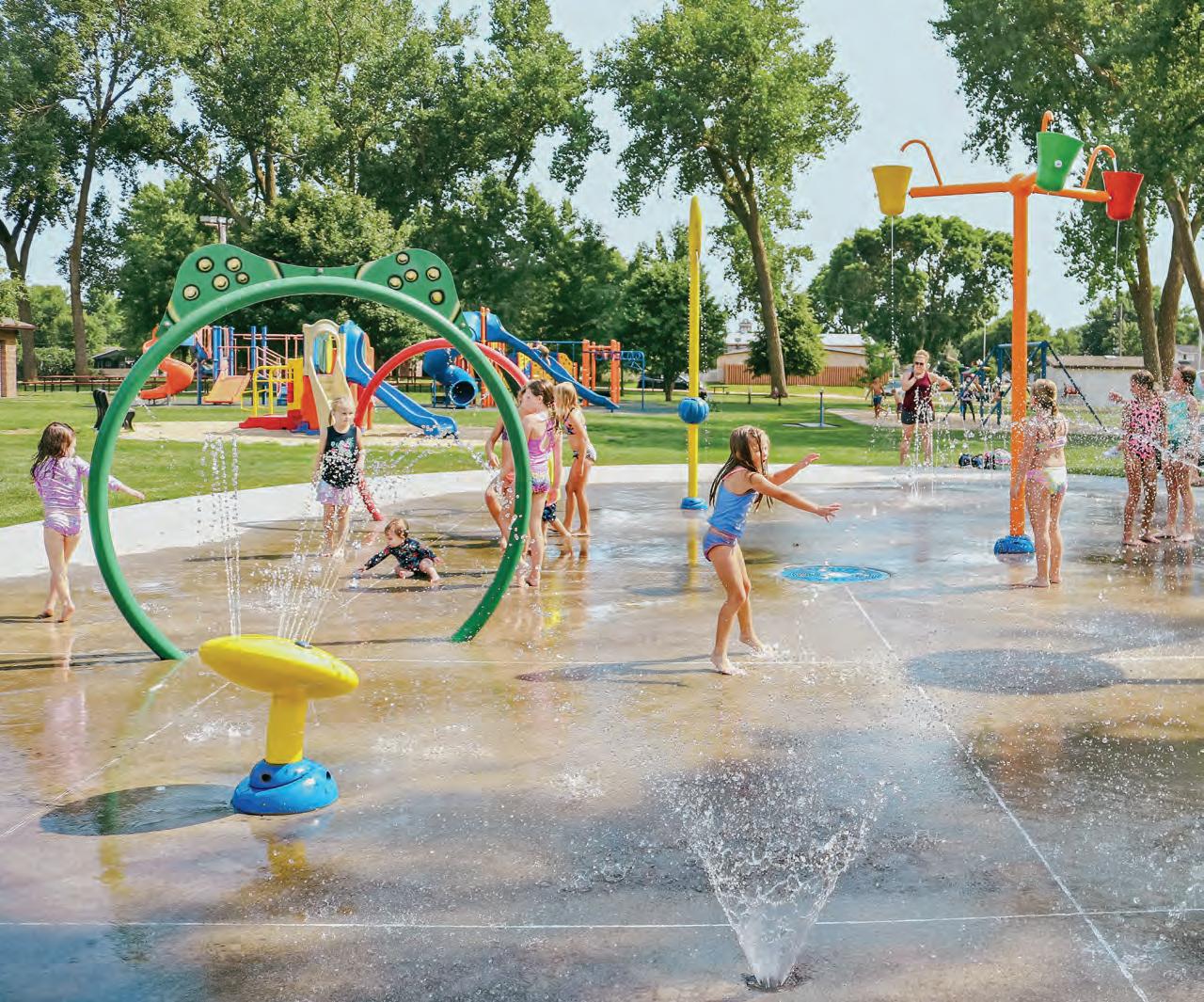
JEFF YOST GREW up in Red Cloud, where “Lots and lots of adults loved and nurtured me. And many encouraged me that my future was somewhere else,” Yost said. “How does that make sense?”
As Nebraska Community Foundation president and CEO, he helps empower local community foundations to promote a different message to Nebraska’s youth: You have a bright future here.
It’s a promise backed by action.
Since 1994, Nebraska Community Foundation has matched affiliated local funds with the tools and resources to
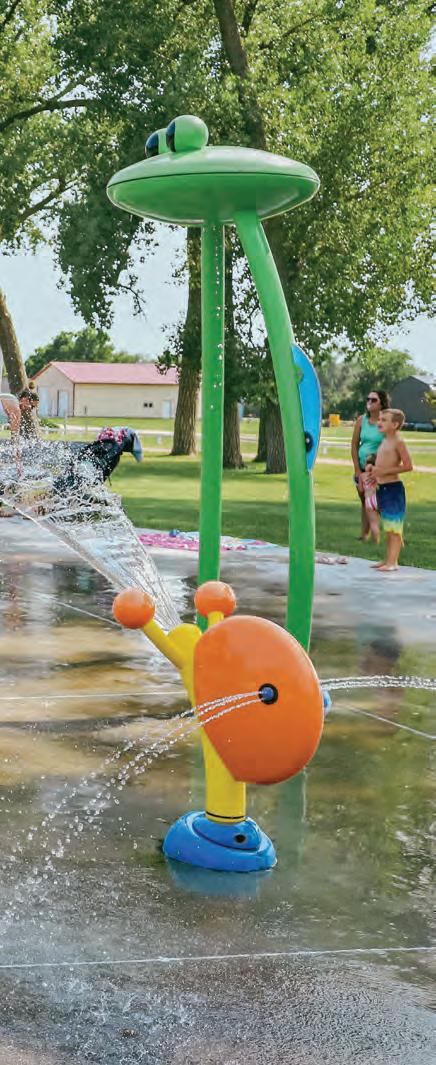
Local community foundation funds investigate what their towns need to thrive and then take real steps to provide those services or facilities. Nebraska Community Foundation helps with training and connecting people throughout the state.
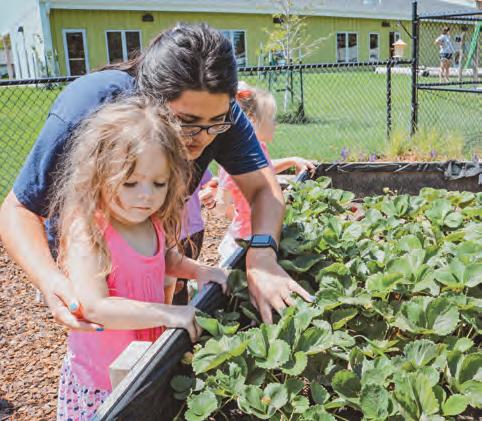
local community foundation funds with training, network connections and marketing expertise. NCF also sets the messaging for all the funds – encouraging an attitude of abundance – to appreciate and amplify a place’s positive attributes. There’s also the lesson of some simple math regarding its philanthropic aims. A small percentage of an enormous number is still a significant number.
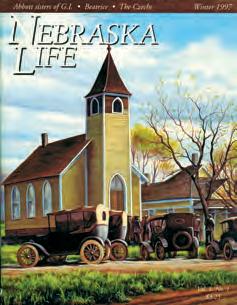
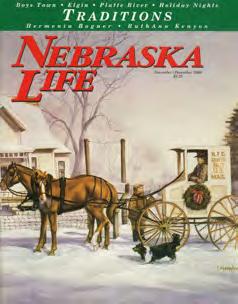
build the hometowns of their dreams.
Local community foundation funds solicit community input and use philanthropic donations to undertake projects for their communities. That includes literacy programs, community gardens, English as a second language tutoring, non-traditional scholarships, after-school programs for kids, and renovation or construction of community gathering spaces, like parks or movie theaters. Major focuses of these local funds include early childhood development, local food in schools, leadership and entrepreneurship development. Nebraska Community Foundation works with more than 270 communities through 250 affiliated funds and supports
Kiel VanderVeen works as a financial planner and serves on Nebraska Community Foundation’s board. In Otoe County, over the next decade, about $1.4 billion will shift from one generation to the next, VanderVeen said. If 5 percent of that figure went to the Nebraska City Community Foundation Fund, that would be $70 million that could go toward improving the community.
Indeed, network-wide, NCF has $266 million in total assets, $423 million reinvested since 1994 and grantmaking of $30 million or more each year.
When he was in high school, VanderVeen was the first member of the Nebraska City Community Foundation
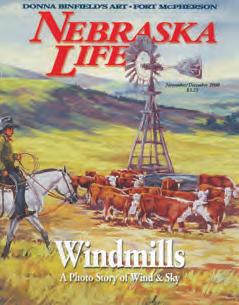
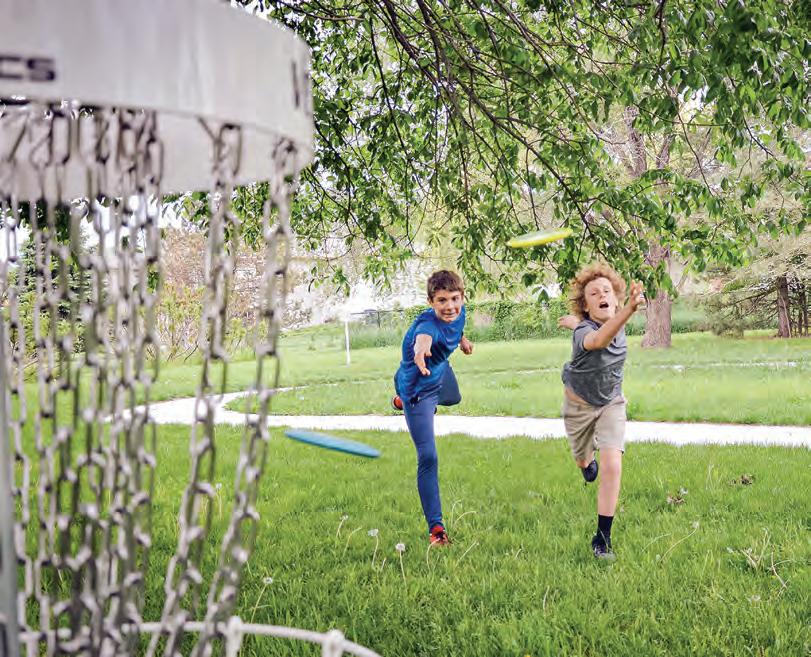
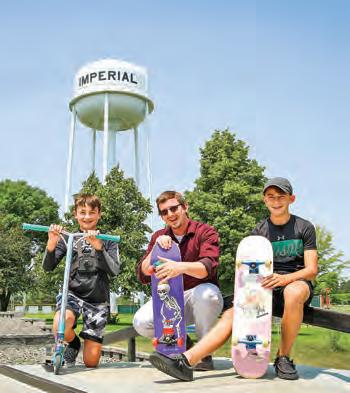
Fund’s youth group. He’s been involved with the Nebraska City fund or the statewide board ever since.
Nebraska Community Foundation surveys reveal that Nebraska youth want to be a part of contributing to their communities. Sometimes they don’t even need to be asked first.
A few years ago in Imperial, a young boy named Trevin Moreno dreamed of having a place to skateboard. He pitched the idea to the city administrator, but she was unsure. So he started selling lemonade.
Soon after, other skaters got involved and undertook various fundraising ef-
forts. The city decided to help, and the Imperial Community Foundation Fund pitched in a generous donation. Within a year and a half, the kids had their skatepark. Trevin was 9 when he slid his skateboard down the ramps for the first time.
Encouraging youth to be decision-makers is what McCook’s Youth Change Reaction group is all about, too. Supported by the McCook Community Foundation Fund, the youth board decides what projects to take on, which organizations to partner with and how the board wants to spend funds. The youth board has awarded grants to an elementary school and a 4-H club, coordinated a bike-share program with Nebraska Game and Parks, organized dances and helped with community events.
These kids are growing up in a world where remote work is a real option. As a result, community economic development has shifted, Yost said. It isn’t just connected to jobs anymore.
“The new question is, why do I want to live and raise my kids here?” Yost said.
Day by day, the statewide foundation supports local efforts to develop Nebraskans’ confidence, skills, collaborative spirit, and openness to the vast possibilities of their hometowns.
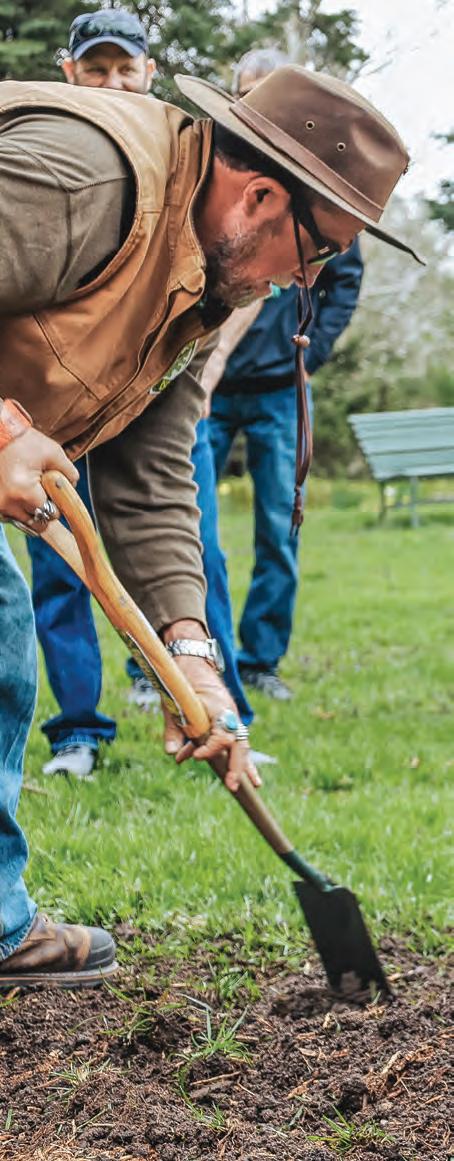
Arbor Day began in Nebraska City. Today, people across the state dig in to help their communities become greener, cleaner places with the power of trees. This year, the Arbor Day Foundation celebrates 50 years. Unbe-leaf-able!
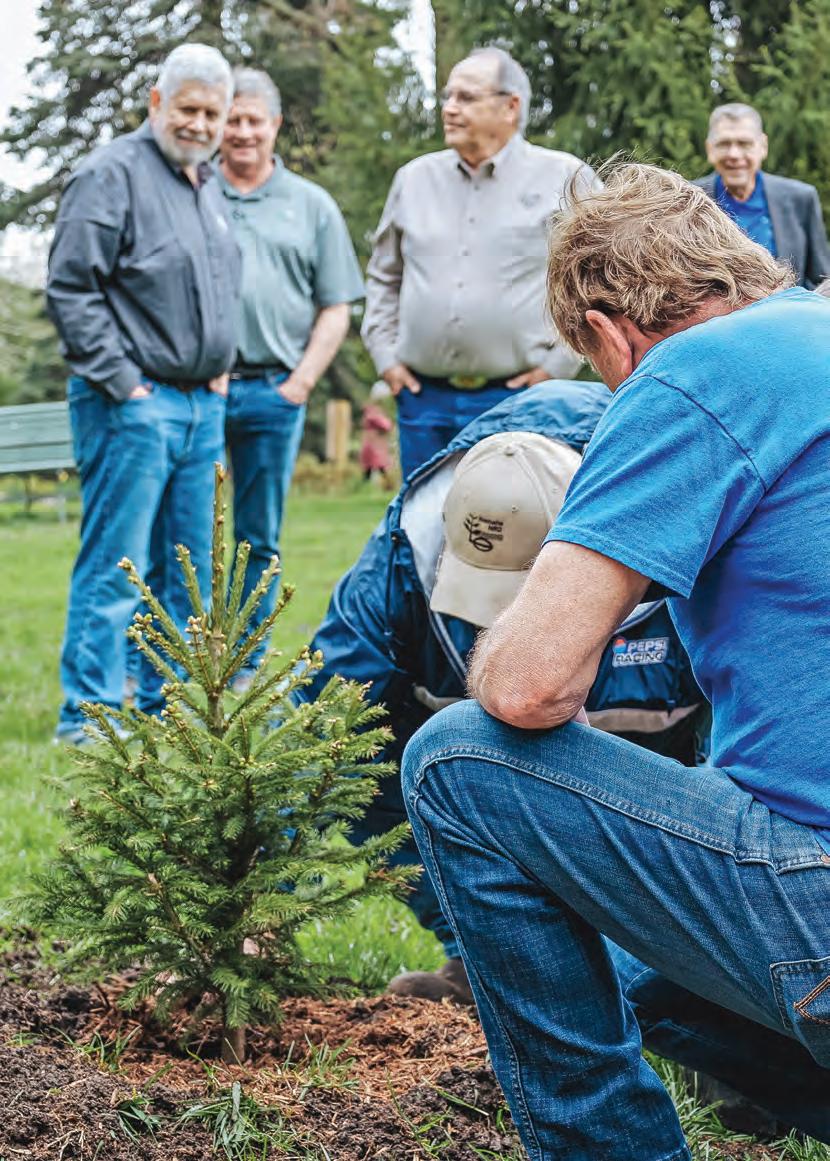

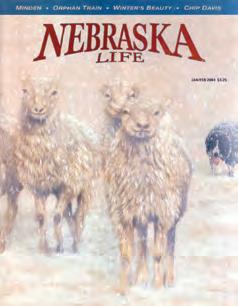
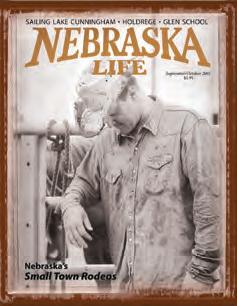
DRIVING TO NEBRASKA CITY each fall to pick apples and drink apple cider is a tradition for many families.
Arbor Day Farm in Nebraska City is a beautiful 260 acres packed with natural beauty and family fun. Run by the Arbor Day Foundation, the campus amenities –including lodging, dining, orchards, vineyards, parks and trails – encourage and inspire people to plant and celebrate trees. It’s become a celebrated and well-known destination spot in southeastern Nebraska.
But the Arbor Day Foundation’s reach and impact extend far beyond its Nebraska City property. The Lincoln-based foundation has quietly become the most
prominent tree planting nonprofit in the world.
Globally and locally, the foundation works with people, corporate and government partners to restore forests, assist families affected by natural disasters, and create green spaces in urban neighborhoods. Since its founding in 1972 to celebrate Arbor Day’s 100th anniversary, the foundation has planted 500 million trees in 50 countries.
Dan Lambe grew up in Crete and remembered as a kid piling in the family car for Nebraska City apples and cider. Recalling the tangy crunch of the first bite of an apple straight from a tree each fall makes him smile. Today Lambe is the president of the foundation. “Trees are the one thing we can agree on in these divisive times,”
Having planted more than 500 million trees in 50 countries, the Arbor Day Foundation has become the most prominent tree-planting nonprofit in the world and a unifying good. This year, it announced new ambitions: planting another 500 million trees in five years.
Downtown Lincoln Association

he said. “Trees connect generations, communities and cultures.”
Trees provide us with breathable air. They create habitats for space-crunched creatures. They beautify our environment. They root people in place – and they can even help heal broken hearts.
Bradley Brandt leads the foundation’s replanting efforts in areas devastated by fire or other natural disasters. It might be hard to imagine how someone whose home was damaged or destroyed could take solace in free trees, but Brandt has often seen it happen during his 14 years with the foundation. Whether in Missouri following a tornado or Texas after a fire, Brandt has heard a familiar refrain:
“We’ve lost everything, but these trees are the start of having some hope for the future.”
Public lands have also benefited from the program. For example, the foundation worked with the forest service in Colorado’s Pike National Forest to plant seedlings in the shadow of burnt stumps after a devastating fire. Twenty years later, those trees are taller than Brandt and are bearing cones brimming with seeds.
“Now it’s taking on a life of its own and regenerating itself,” Brandt said.
Abroad, tree planting programs in Madagascar restore rainforest habitats for animals and provide people jobs. In 2009, only eight black and white lemurs remained on the African island nation. Tree planting work employed 1,700 locals, affording them access to housing and education. Today, the lemur population has climbed to at least 50.
Back home in Nebraska, the foundation funded programs on the Chadron State College campus to help get trees back in the ground after a fire and worked with the Nature Conservancy to plant Nebraska’s state tree – the cottonwood – along Nebraska rivers.
Wherever the Arbor Day Foundation works, staff share their Nebraska pride. And their partners “like the authenticity we provide and the humility we bring to our work,” Lambe said. These characteristics are a “direct reflection of Nebraska values.”
Here’s toasting a glass of Nebraska City apple cider to that.
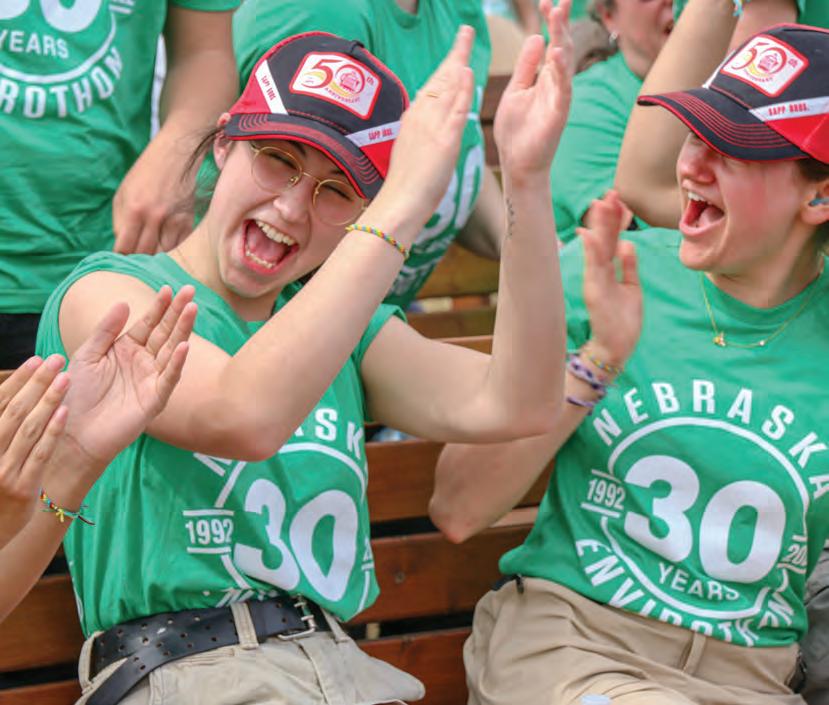
Three cheers for Natural Resources Districts, an innovative conservation solution started in 1972. Stream basins determine local governance rather than political boundaries.
FOUR SIGNIFICANT FLOODS swept through Nebraska in the 1950s claiming 23 lives. Soon after, drought clutched the land. Many producers abandoned farming. Others dug wells. Different regions sharing water resources failed to work together on flood control or drought relief. Overlapping authority caused confusion and conflict.
Then in 1969, a soft-spoken Milford-born Nebraska State Senator named Maurice Kremer introduced an innovative solution. He proposed the idea of Natural Resources Districts. He suggested that stream basins determine the boundaries of these local government units rather than existing political boundaries. Locally elected directors would take on flood control, groundwater quality and quantity, soil erosion and irrigation runoff.
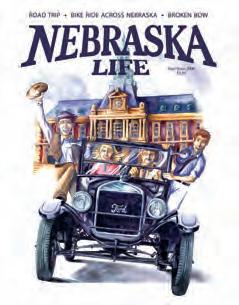
May/June • 2006
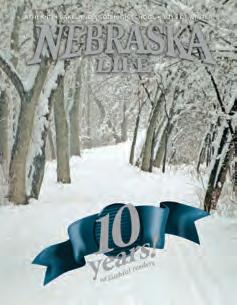
January/February • 2007
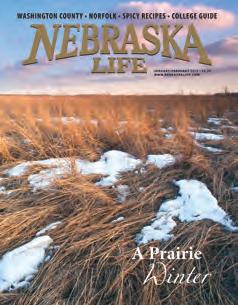
January/February • 2012
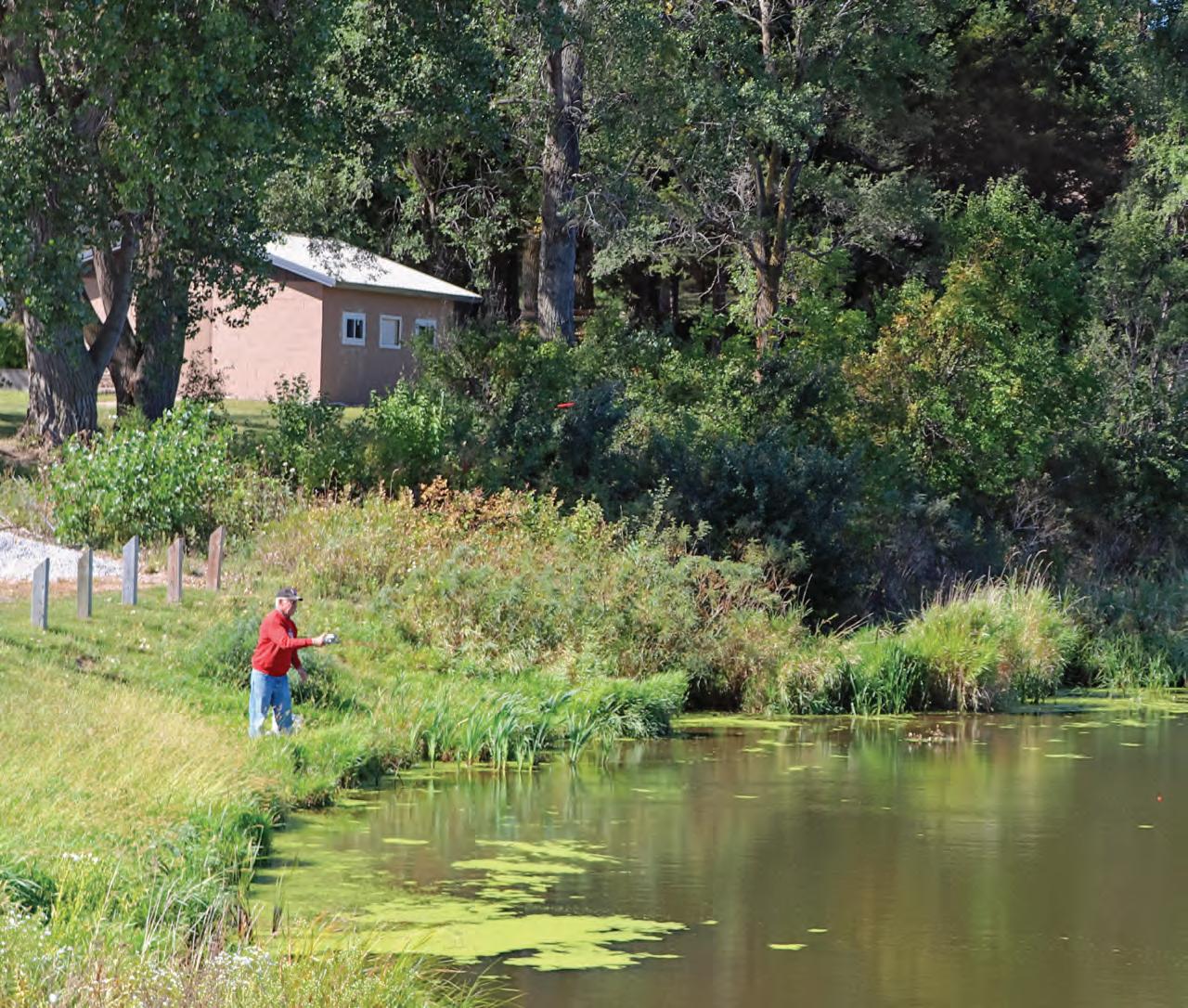
It was a new – even risky – concept that might not work. But, to its credit, the Nebraska Legislature backed the idea. Thanks to “Mr. Water,” as Sen. Kremer was affectionately known, in 1972, Natural Resources Districts took over conserving and protecting Nebraska’s natural resources. Today, 23 NRDs cover different parts of the state, each working in response to local needs and aspirations.
Nebraska’s 80,000 miles of rivers beautify our state’s landscape, provide recreational opportunities and feed our industries. The health of these rivers and our state’s groundwater and land owe much
to Nebraska’s Natural Resources Districts, which are celebrating 50 years.
Local NRDs hold classes and camps for kids, restore wildlife habitats, own and manage recreational areas, help property owners with forestation efforts, and work with farmers to monitor and diminish nitrate levels in groundwater. This year NRDs planted their 100 millionth tree. They’ve kept Nebraska groundwater levels steady, despite years of drought.
But it’s not just what NRDs do that makes them work – it’s how they do it. They seek solutions and buy-in from the communities they serve.
Jim Eschliman is a retired dairy farm-
er who served as the president of the Nebraska Association of Resources Districts and is still a co-chairman on the Lower Loup NRD’s Board of Directors. His father-in-law – also a dairyman – served on the board until he died.
Having a farming background helped Eschliman connect with producers about how and why local NRD had to implement a rule or regulation – like limiting nitrates from fertilizer that goes into the groundwater.
“I tell them, there are smarter people than I am,” Eschliman said. “And you’ve got to trust that they know what they’re doing.”
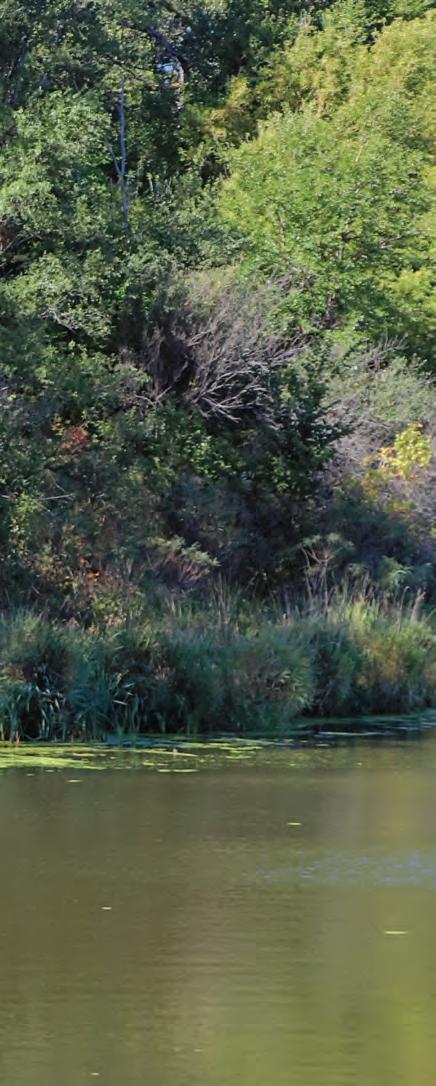
Dennis Wiehn of Elgin fishes for bluegills at the Lower Loup NRD’s Pibel Lake Recreation Area in southern Wheeler County. Under local leadership, Nebraska NRDs protect water, the state’s most precious resource, from overuse and pollution.
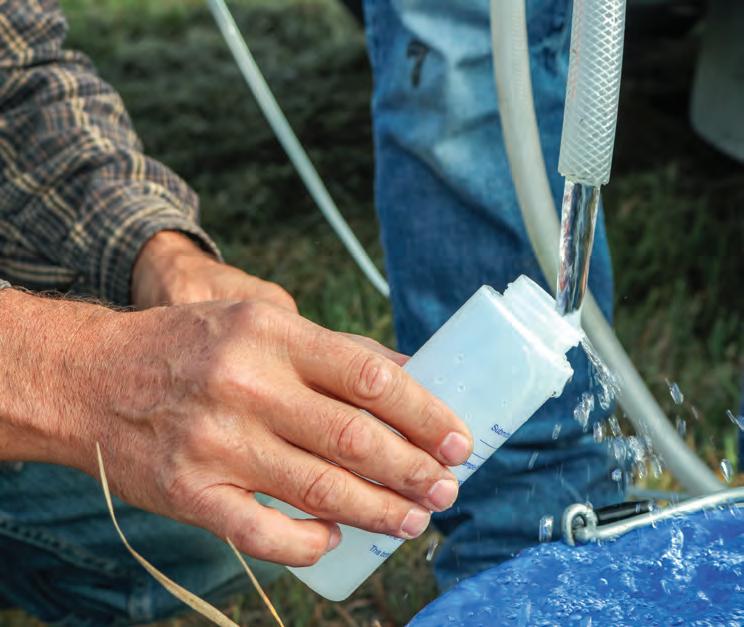
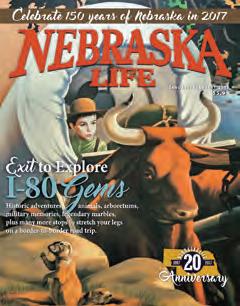
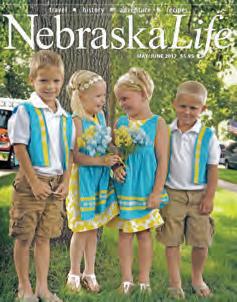
Some projects are straightforward and don’t require much of a sell, like cleaning up Wheeler County’s Pibel Lake – formerly a state park. The Lower Loup NRD received federal grants to dredge sediment and build campground facilities. It’s rustic – no electricity – but there are plenty of ways to connect, with picnic tables and a playground.
NRDs also help protect private property and, wherever possible, solve problems without landowner sacrifice.
For example, residents of a Columbus lakeside community weren’t happy when their water levels fell. But instead of regulating water use, the Lower Loup NRD
developed a project that would move water around while “allowing water users to keep doing what they’re doing,” said Russell Callan, Lower Loup NRD general manager. Callan developed the project with the county and city governments, an agricultural processor, and the homeowners’ association. The project demonstrates how stakeholders come together, with NRDs in the lead, to reach the common goal of resource preservation.
Nationally admired, Nebraska’s NRDs are one of our state’s singular political innovations born out of the desire to come together to protect this great land and this good life.
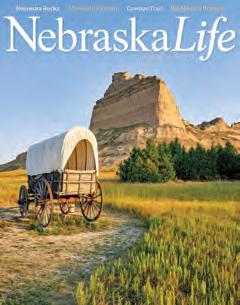
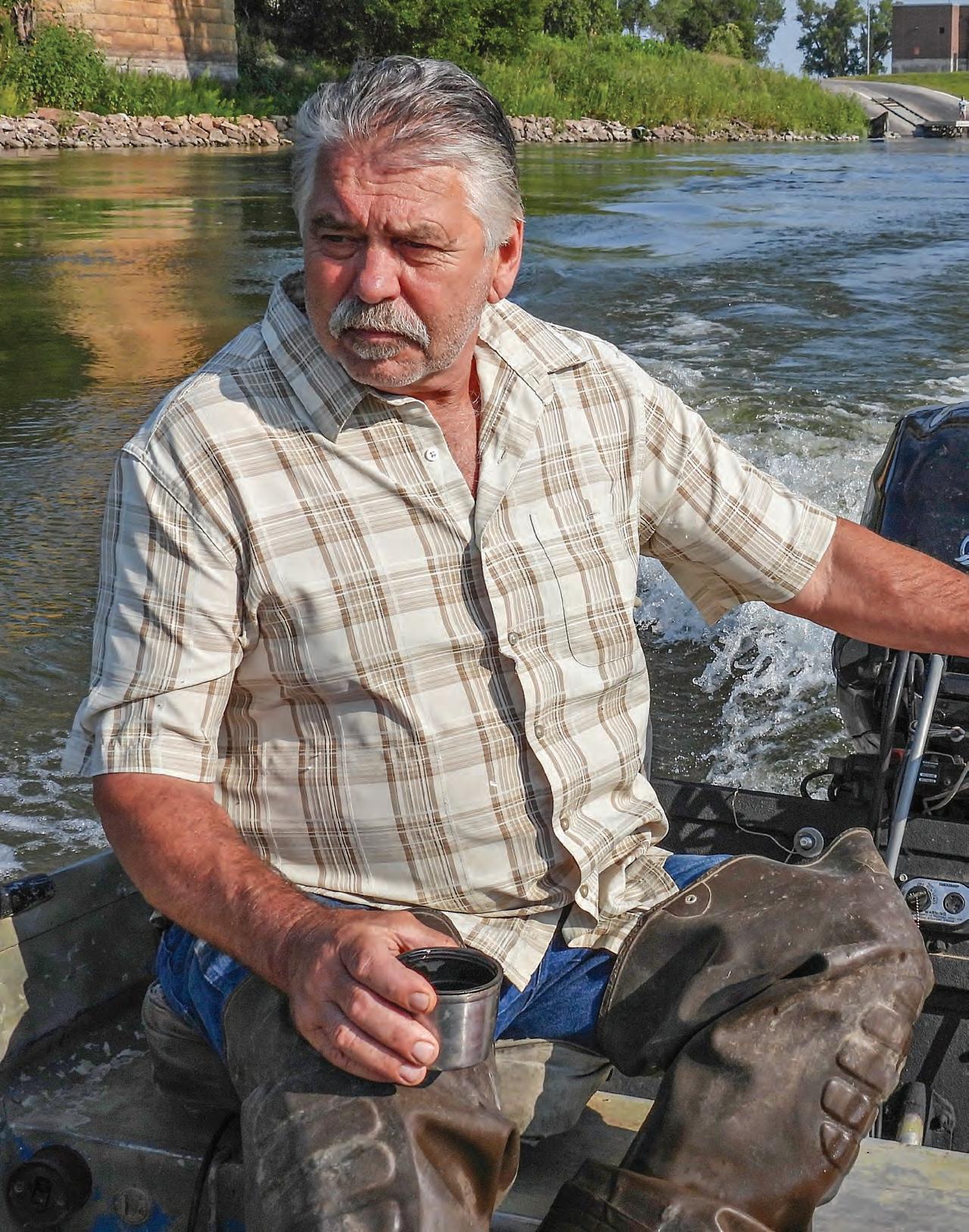

story and photographs by TIM TRUDELL
THE SUMMER SUN beats down on the Missouri River on a clear morning as Mike Kelley navigates his 16-foot-long fishing boat into a cove near the DeSoto National Wildlife Refuge. The river winds along Nebraska’s eastern border, separating it from South Dakota, Iowa, and Missouri. It’s home to recreation areas, camping sites and docks, where folks launch boats for skiing, tubing and fishing.
But Kelley isn’t a leisure angler. He’s one of 75 commercial fishermen in Nebraska, and he’s catching fish for his own restaurant to continue a livelihood that began with his father 60 years ago. With permits to fish both the Iowa and Nebraska sides of the Missouri River, he’s determined to reach his goal of 300 pounds of carp on this summer morning.
Kelley shuts off the small propeller, and the boat floats along a rocky outlet. His fishing partner Joel Kuhr stands ready at the bow. Kuhr tosses a flat, heavy piece of iron between rocks on the outlet to secure the net.
Kelley turns on the motor again and putters along as Kuhr drops about 30 yards of trammel netting into the calm river. The only movement is the water lazily washing ashore from the boat’s ripples. Once the net is set, Kuhr plunges a pole into the shallow water’s bottom, marking the spot where the duo will return in an hour or so to check their catch.
Summer months challenge them as the Army Corps of Engineers releases more water downriver from Gavins Point Dam near Yankton, South Dakota. The new depth means fish swim deeper in the river. Unfortunately, that makes catching them more difficult.
Nets set, Kelley revs the engine, and the team speeds northbound in search of more coves. The engine churns the placid surface into a choppy wake.
Growing up on the river is the only life the Blair native has known. He’s connected to it – and the culture of old-fashioned mom-and-pop diners. He owns one.
USING HIS OWN “secret ingredients,” Kelley creates a special breading mix to coat the freshly cleaned and cut carp and buffalo fish before throwing the filets in the deep fryer. Minutes later, it’s ready for serving, alongside fries, tangy coleslaw, and Kelley’s cocktail or tartar sauce.
Open evenings Thursday through Saturday (and 11 a.m.-1 p.m. Friday), tables and booths fill quickly at Kelley’s Fish Market, located on the east side of Blair near the intersection of highways 30 and 75. The menu is a simple one – breaded fish, featuring carp, boneless catfish, and walleye. Kelley’s Fish Market also serves hamburgers and cheeseburgers, but Kelley may cast a scornful glance for not going with the day’s catch.
Booths and tables fill quickly with couples on dates, families out for a tasty treat, or groups seeking good company and amazing food. While most diners are locals from around Washington County, it’s
not unusual to find Omahans and others driving to Blair for dinner. Checkered oilcloths decorate the tables. Fishing and hunting mounts adorn the walls. It’s a casual and rustic feel.
Operating on weekends seems to be the key to the establishment’s success. There’s no restaurant slow time built into the operating hours. Plus, being open only three nights a week gives Kelley time to go fishing, replenish supplies, spend time with family, and take on other jobs, such as leading hunting parties for ducks, deer and more.
When Covid started sweeping across the country, Kelley was initially unsure of his little restaurant’s future. Taking a hit during the pandemic, Kelley scrambled when he had to shut down its dining room. Takeout became routine, and locals overwhelmingly supported the fish market.
“We had 246 dinners ordered in one night,” he said.
Kelley’s fishing partner, Joel Kuhr, Kelley’s grandson, Thomas Bacon, and Kelley detangle their day’s catch from nets. The trio has to set out early to beat recreational boaters in the summer. Nothing disrupts a fisherman and his catch like folks playing in the water.
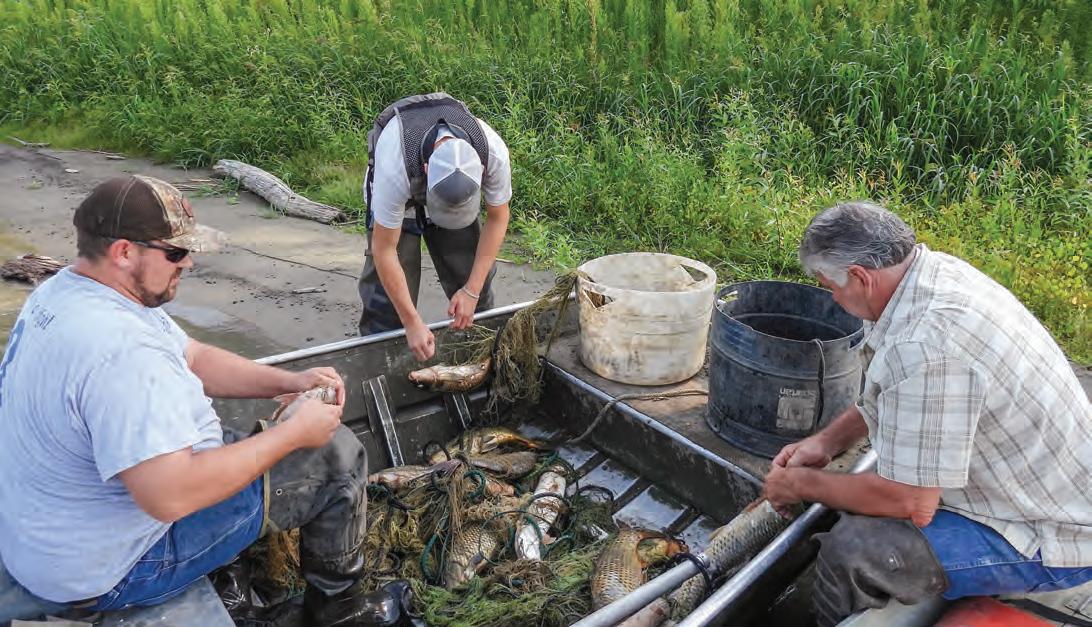
TO KEEP THAT fresh fish hopping onto diners’ plates, Kelley hits the river early each fishing day. During the summer, Kelley and his cohorts, Kuhr and Kelley’s teenaged grandson Thomas Bacon, head out early in the morning, beating speed boats racing up and down the river that pull skiers or tubers behind them. Nothing disrupts a fisherman and his catch like folks playing in the water.
Kelley will go as far north as Ponca and as far south as Omaha to set the trammel nets (about 100 yards long and 6 feet wide) in coves near the shoreline. Kelley and Kuhr usually leave them overnight and check them the next day. They’d love for a single net to capture the 250-350 pounds of fish they seek each week.
Even winter doesn’t deter this commercial fisherman from hitting the frigid waters. A cold wind hits Kelley’s face like a champion boxer. The choppy waves make it feel like the boat is being picked up and slammed down on concrete over and over again. But Kelley said it still beats the grind of a corporate environment.
Fishing the Missouri River near Niobrara involves using a hoop net (barrel-shaped), which Kelley and his crew set early in the morning. Then he hauls in his catch later that day.
“A good catch with a hoop net is 100300 pounds,” Kelley said. “But that’s based on knowing what you’re doing. You may need to set out 10 nets, and three may get fish. The fish may have moved. The water level may have changed. You never know. The reward is there. You just have to know what you’re doing.”
Using two boats, the team pulls trammel nets from the river’s coves. Then, taking turns jumping out of the boats along the shore, the trio pulls them on shore. Now comes time to check the catch. With fish rolling themselves in the netting, the three patiently and carefully pull the netting off the fish, not injuring the catch nor tearing the netting.
Watching Kelley’s grandson Bacon work at clearing a flat shell turtle caught in the net, it seems fitting to see Kelley’s love of fishing being passed down to another generation. Who knows, maybe in a few years, Bacon will be running Kelley’s Fish Market.
Kelley reflects on his own childhood, learning about the fishing business from his dad, Jim Kelley.
Jim, a former Marine who served during World War II and the Korean Conflict, later worked for more than 45 years as a towboat captain along the Mississippi and Missouri rivers. Young Mike Kelley – whose actual first name is James, as in James Junior – tagged along with his dad on the Missouri River.
The elder Kelley loved fishing. He set up a little tar shack along the banks of the Missouri River and opened for business. Selling raw fish to restaurants and service clubs, he also did drive-up sales. Elderly women drove up in their Fords, Chevys or Chryslers to holler their orders to Jim.
“My dad would go down the steps, where the boat was on the dock, and he’d have a live box. He’d grab a couple carp, clean ’em in that old shack,” Kelley said.

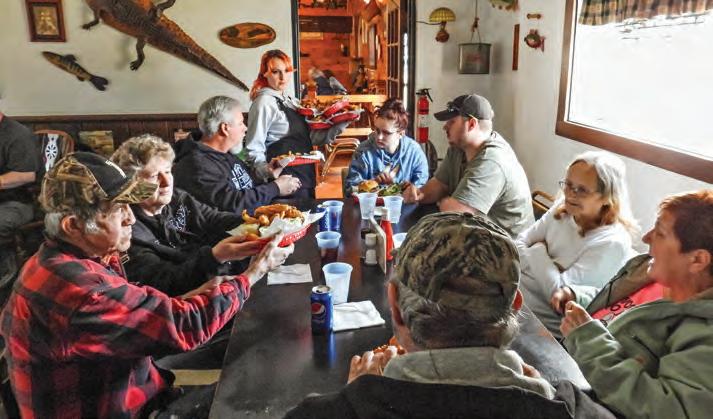
Helping his dad fill orders, Kelley would grab an old copy of a newspaper, paying no mind to the news of the day. Whether it was the Omaha World-Herald or the local Blair Enterprise, yesterday’s news became today’s fish wrap.
They’d hand him a couple of bucks, and off they went. Fresh fish would be served for dinner that evening, maybe with a side of boiled corn on the cob and a baked potato soaked in butter.
“You can’t get much fresher than that,” Kelley said.
As a child, Kelley never dreamed about running his own business, but his earliest memories involve the river. Water continued to be a theme in the younger Kelley’s life when he captained a shrimp boat in the Gulf of Mexico. Between the time he spent with his father on boats as a kid and his shrimping adventure, Kelley mastered marine vessels.
Kelley returned to Blair and the Missouri River to work on towboats. As a young captain, he found himself challenged by crewmembers much older than him who
were determined to be difficult. Watching his dad handle his crews as a tadpole and learning from an equally tough crew in the Gulf of Mexico prepared him to lead.
“They were surprised when I told them what they needed to do and how to do it,” he said. Respect earned.
Turning to run his own fishing business, Kelley, now in his seventh decade of life, has spent the past 35 years growing it from his shack and adding on through the years.
Navigating the river, Kelley watches out
Commercial fishing isn’t without snags. Kelley and his crew had to quit catching catfish after the state banned fishing them to protect the species’ population. There are many carp and buffalo fish to catch instead. Thomas Bacon cuts a softshell turtle out of the net.
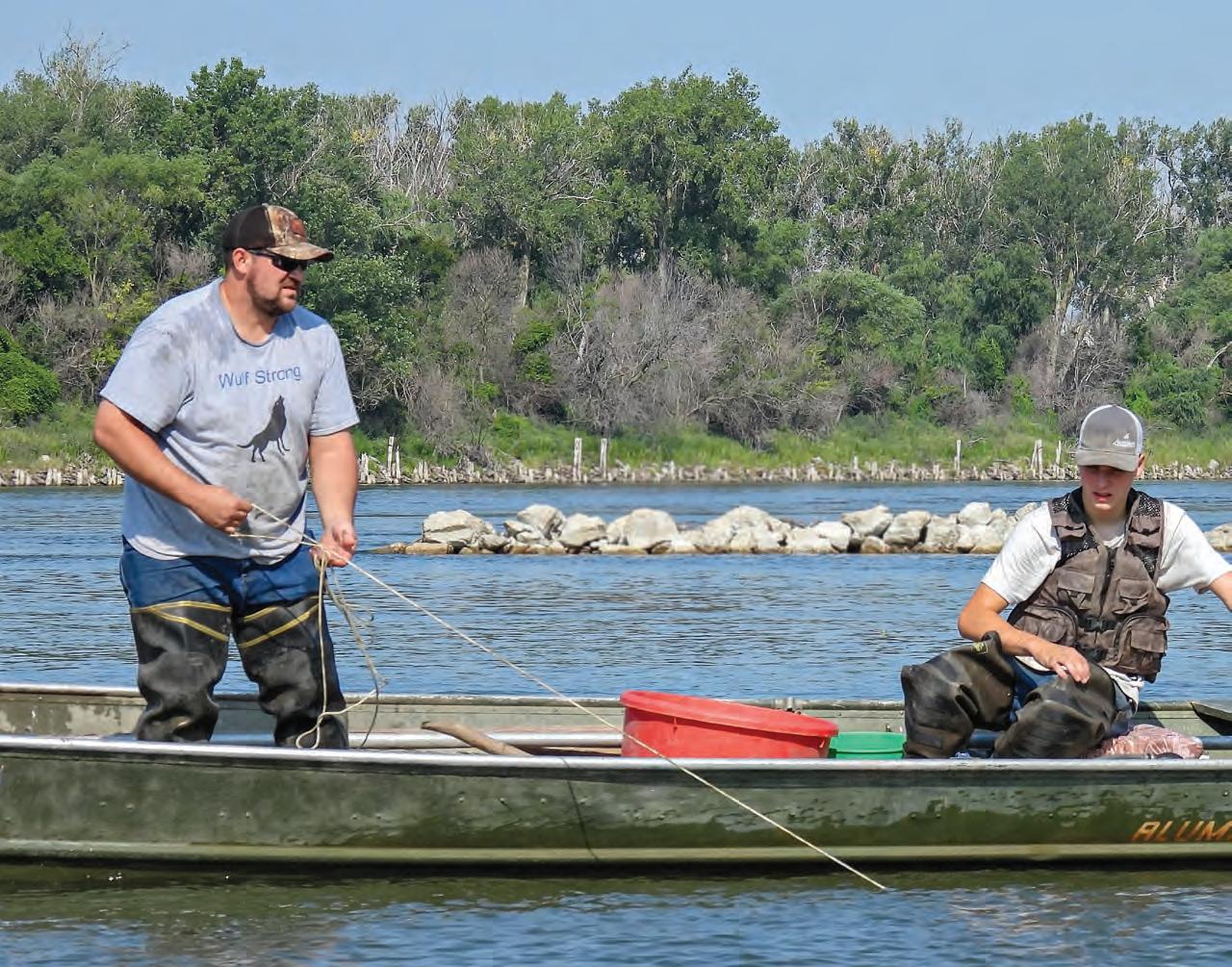
for obstacles, such as floating tree branches, speed boats cruising up and down the river. And there’s an even more menacing challenge lurking below the surface.
Invasive fish, such as flying carp, leap out of the water without warning, often landing in the boat. Getting slapped a time or two in the face by a 5- or 10-pounder is enough to knock a person out of the boat and into the river, he said.
“They can sink a boat with as many as you can catch in five minutes,” Kelley said.
Through the years, Kelley has learned
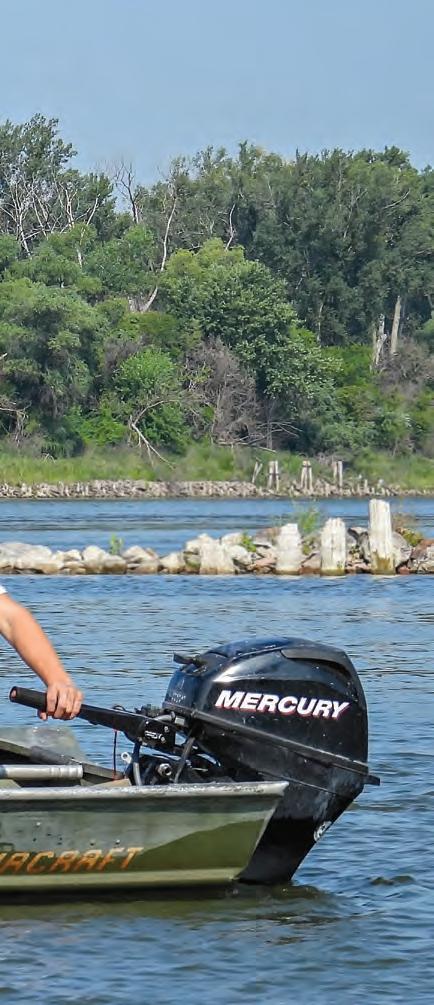
where they like to hang out and does his best to avoid them. Unsure, he may test the river by sticking a metal rod into the water and tapping the side of the boat. If only one or two leap out of the river, Kelley knows the area is safe to fish.
Still, Kelley and Kuhr must plan on using a chunk of their time on the river to pull off to the shore and clear nets of the invasive fish, along with gar – a fish with a long jaw and sharp teeth.
Catfish once dominated Kelley’s and other fishermen’s ventures on the Missou-
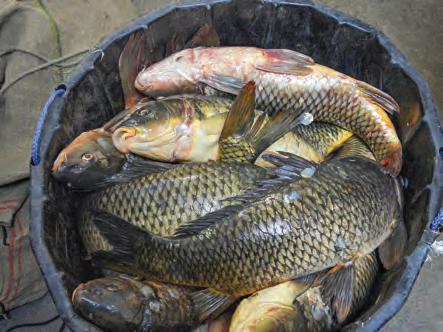
ri River. Kelley routinely caught 15,00020,000 pounds of catfish a year.
Then, in the early 1990s, wildlife officials believed different species of catfish were becoming endangered because of over-fishing. Nebraska implemented a ban on commercial fishing of catfish to rebuild the population.
The ban paid off. Catfish rebounded. Today, with some restrictions, the state allows recreational anglers to catch them.
Still, the state’s initial decision to ban catfish fishing shocked Kelley. For the
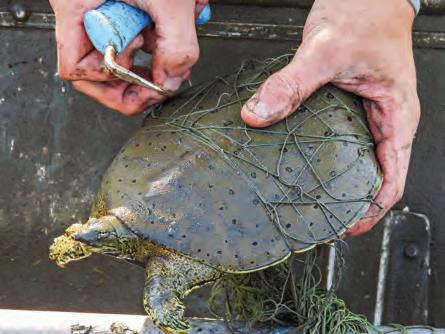
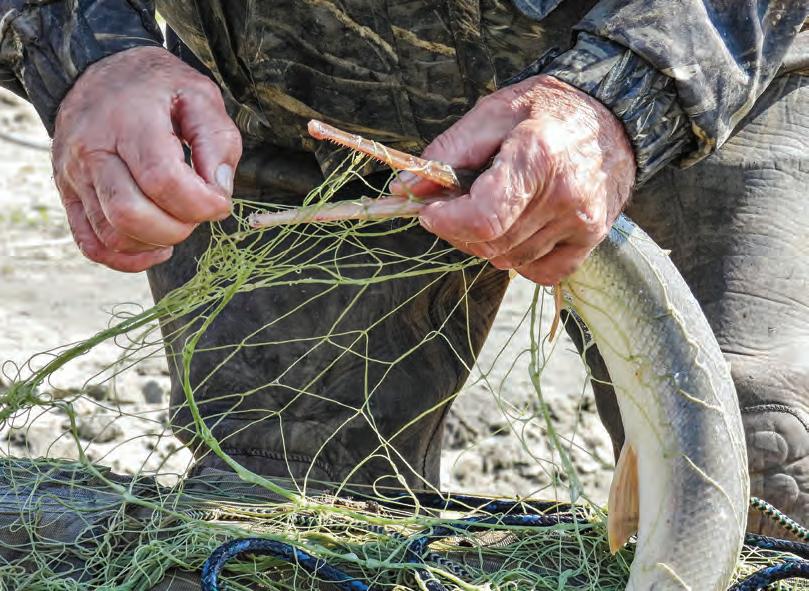
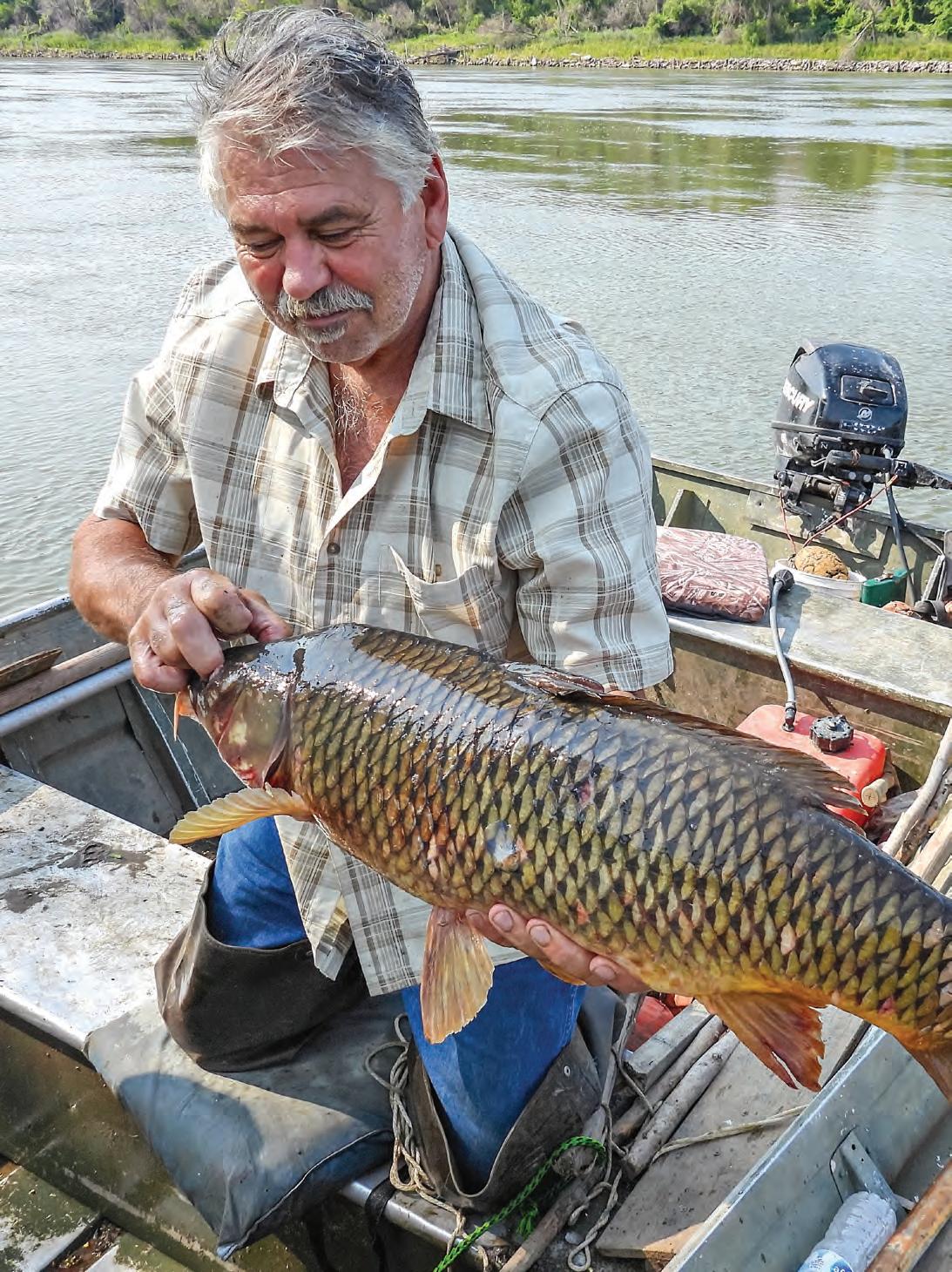
displays a 20-pound carp. The mild-flavored pink-fleshed fish is sometimes favorably compared to
fisherman, it was a real snag.
“With a 50-pound catfish, I got 25 dinners. I used to get $10 a dinner,” Kelley said. “When they took them away, I thought I was going to go broke.”
Kelley regrouped rather than docking his boat or returning to captaining a towboat again. He set his traps for carp and other acceptable fish – and it’s worked out pretty well, even if there are times when he walks away with only one or two fish he can keep. No matter how much work and effort goes into commercial fishing, there’s no guarantee of success.
“You can lose a trammel net in a day if you don’t know what you’re doing. You’d lose a week’s worth of profit.”
While most fishermen tend to have their “fish stories,” such as the big one that got away, Kelley sticks to the facts as he sees them. There’s plenty of fish in the Missouri River to catch. No need to talk about the imaginary elusive ones.
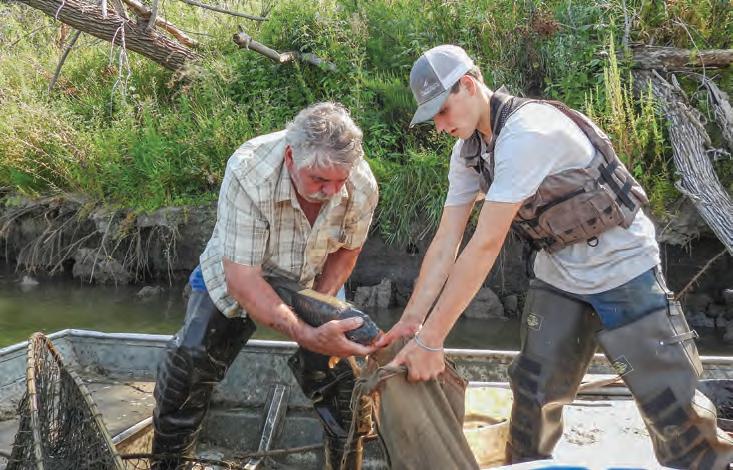
“You can take a couple of nets north of Omaha and be busier than heck. You’d get a ton of fish. Or, run south to Plattsmouth or north to Sioux City and get a bunch.”
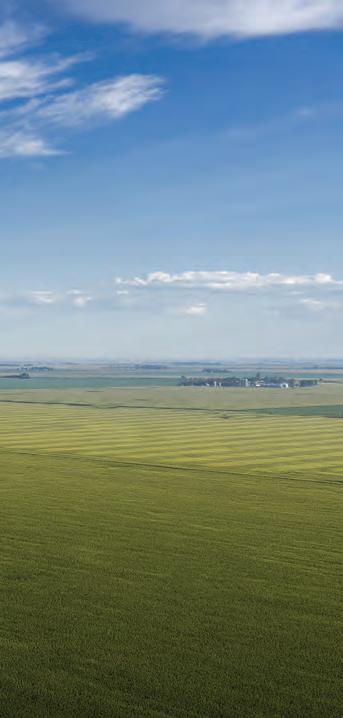
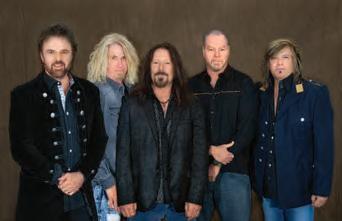
Kelley won’t be just dreaming about big catches. He’ll be out on the boat slicing through the water and anticipating the evening’s fish dinner.

92%
91%
83%

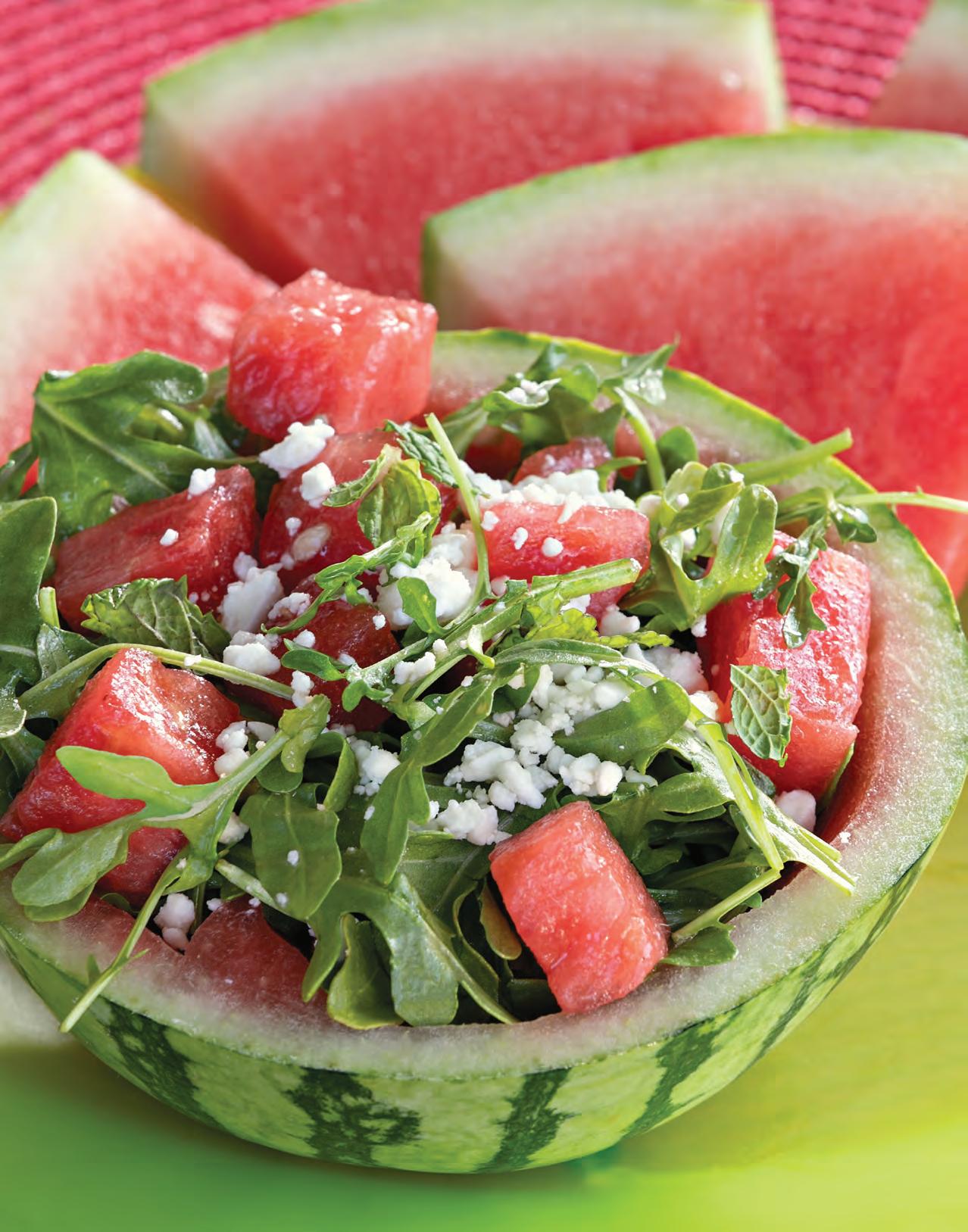
recipes by IAN NAUSLAR
BEGINNING IN JULY, farm trucks dot Nebraska highways stacked high with freshly picked watermelon. Great on its own as a juicy slice, the fruit also adds a sweet, crunchy and cooling element to savory dishes. Its hydrating properties take the edge off the hottest summer days, and its ruby flesh epitomizes the season. These three original recipes Omaha Chef Ian Nauslar developed for Nebraska Life encourage Nebraska cooks to buy more than one next time they see the farm truck.
Arugula and rich creamy feta combine with ripe juicy watermelon for an explosion of flavor. Making the simple homemade citrus dressing is well worth the minimal effort to take this dish to the next level.
Toss all salad ingredients in bowl. Stir vinaigrette again and add 2-4 Tbsp to salad. Dressing should coat salad but not oversaturate. Mix lightly, then serve.
Citrus Vinaigrette
1/4 cup orange juice
1/4 cup lemon juice
1 tsp lemon zest
1 Tbsp shallot, minced
1 Tbsp honey
1/2 cup olive oil
1 tsp kosher salt
1/2 tsp cracked black pepper
Using an immersion blender (or whisk), mix orange and lemon juices, shallots, honey, salt, and pepper. Add olive oil slowly to form an emulsion. Set aside. If not immediately serving, refrigerate.
Salad
6 cups baby arugula, washed and spun dry
3 cups seedless watermelon (or deseeded), diced into 1-inch cubes
12 oz feta diced into 1/2-inch cubes
4 oz fresh mint leaves, julienned
Ser ves 6

Smoky blackened fish finds balance with the bright flavors of cilantro, lime and jalapeño. The fish tastes lovely on its own. Or wrap it in a tortilla with the watermelon pico and a pinch of queso fresco for perfect summertime tacos.
Place aluminum foil on the grill and add high heat oil (grapeseed or peanut) on top. Preheat grill to medium-high heat. Spread oil on both sides of filets. Sprinkle with blackening seasoning. Place filets coated in blackening seasoning on hot grill and cook for five minutes, flipping halfway through, at internal temperature of 145°. Fish should flake easily. Plate fish. Garnish with pico.
Pico
4 cups seedless watermelon, diced
2 cups English cucumber, diced
1/2 cup red onion, diced
1/4 cup fresh cilantro, minced
1 jalapeño, diced
1/4 cup fresh lime juice
1 lime, zested
2 tsp honey
1/4 tsp salt
Blackening Seasoning
2 Tbsp smoked paprika
1/2 Tbsp cayenne powder
1 Tbsp onion powder
1 tsp garlic powder
2 tsp cracked black pepper
1 ½ tsp sea salt
1/2 tsp dried basil
1/2 tsp dried oregano
1/2 tsp dried thyme
Mix spices to coat fish.
Fish
2 lbs tilapia (6 4-6 oz filets)
2 Tbsp olive oil
Blackening seasoning
Grapeseed or peanut oil
Ser ves 6

Gazpacho is a cold soup made of raw blended vegetables that originated in Spain and Portugal. Traditionally made with tomatoes, this version has a watermelon twist. Serve the soup in festive glasses and garnish with microgreens for an easy summer appetizer. Tangy and sweet, it quenches thirst and provokes smiles.
Save half the tomatoes, cucumber, red pepper and scallions. Place remainder in blender or food processor. Combine watermelon, jalapeño, pepper, garlic, basil, vinegar, olive oil, salt and pepper. Blend until smooth. Adjust seasoning to taste. Pour into container and stir in reserved vegetables.
Chill for at least three or four hours; overnight is best. To serve, pour into individual bowls or cups, drizzle with olive oil and garnish with microgreens.
5 cups seedless (or deseeded) watermelon, cubed
1 English cucumber, diced
3 medium tomatoes, diced
1 small red pepper, diced
1/3 cup scallions, diced
1 garlic glove
1 handful basil (to tasted)
4 Tbsp red wine vinegar
3 Tbsp olive oil
1 ½ tsp sea salt (to taste)
1/2 tsp freshly ground black pepper
1 jalapeño pepper (diced)
Microgreens for garnish (optional)
Ser ves 6
Won’t you dish with us?
We’re ravenous to taste your favorite family recipes. Nebraska-sourced ingredients and stories that accompany beloved dishes feed our stomachs and our souls. Please submit by emailing kitchens@nebraskalife.com, and thanks!

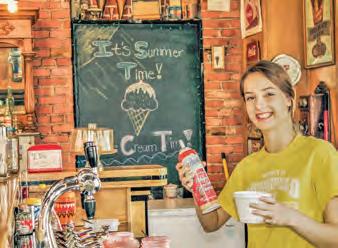






































SUMMER IN NEBRASKA trades indoor meals for picnics, structured shoes for bare feet, and early bedtimes for firefly catching deep into the night. Nebraska poets celebrate the liberty bestowed by warm temperatures and long days with recollections of free-flowing summer foods, lake swimming and parades – and lots of silly horseplay and laughter.
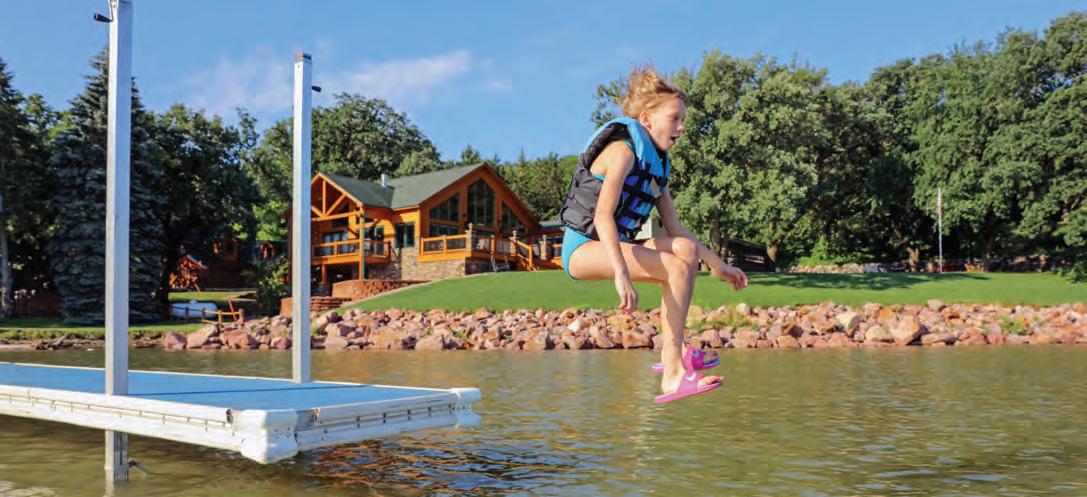
Roberta
Groninger, Norfolk
Come with me and reminisce to days gone by near Norfolk, When summer meant out of school, freedom and time for fun. Oh remember how sweet the mulberries were from the tree, Or corn on the cob, ripened to perfection in the warm Nebraska sun.
The tastes of summer included fresh-picked asparagus, Or the wide variety of other fresh vegetables from the garden. Don’t forget watermelon and cantaloupe with a little salt too, And snow cones or turkey legs from the Madison County Fair, two for one, what a bargain!
Maybe summer tastes to you included popcorn, From the local drive-in movie showing after dark. Or homemade ice cream and root beer floats, Makes me smile thinking of tasting that sweet kiss down at the park.
From picnic lunches and fried chicken dinners, Summer’s best and most vivid flavors aren’t just memories long gone. Celebrate with s’mores and rhubarb pie or fresh sliced peaches too, It’s up to you and me to make sure these tastes of summer will forever live on!
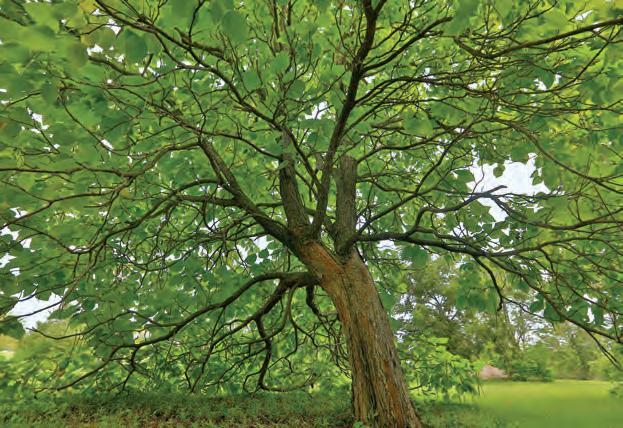
Danielle Amorena-Kenny, Omaha
Every town had one or at least every town worth its salt.
A parade, cow-pie bingo and late-night dance all on the main drag’s asphalt. A celebration of summer’s gifts: sun, warm weather and extra time to play, our right, dog-gone it for so many hours of making hay.
Barbara Dush-Micek, Lincoln
The corn crib was my playhouse when it was emptied of its harvest.
I’d sweep out the leftover kernels and husks and the space was magically mine.
I was a dancer, A teacher, A storekeeper, Or a mud pie baker.
It was a castle for my imagination.
Barb Tisthammer, Albion
Don’t get me wrong, I loved my country school. But when District #4 Boone School’s bell Rang for the last time In 1960s mid-May, My Schwinn bike’s rear tire Threw gravel on the lane. Racing toward home where The prim cotton school dress Was exchanged for sensible patched Pants and short-sleeve shirt, I headed outdoors.
Everywhere beautiful shades of green Beckoned to the giant cottonwoods west of the house Or to the non-weeping willows Rimming the night pasture to the east. My pretend horse legs galloped me up and down the cow paths which meandered through ungainly box elders.
A lone mulberry tree teased
To taste of its small sour unripened goodies. Since the dreadful fireweed and nettles weren’t yet As tall or taller than me, I could easily steer my faithful steed Around the pond’s edge as fainthearted bullfrogs leaped to safety through the knee-high reeds.
On to the glassy “Bottle Green” Beaver River Where my young weary legs took a break as child and horse lay on the sandy bank and watched murky lazy ripples float by.
Tufts of emerald grass with a few shy wildflowers became our soft pillow and pad.
Rested, we considered traveling on to the calling canyons, cave and haunted house. But that would have to be an adventure for another day. We backtracked through the lush green valley of time.
NEBRASKA LIFE IS seeking poetry about unexpected gifts and the power of gratitude. We prefer poems with a Nebraska setting. Send to poetry@nebraskalife.com or to the mailing address at the front of this magazine.
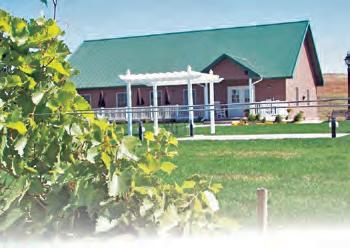
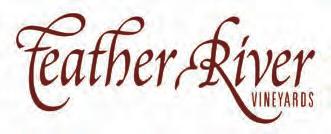
Relax withaglass of wine and enjoy a memorable sunsetfrom our porch. Just minutes southeastof NorthPlatte, I-80 exit 179. Look for our wines at Nebraska retail locations or shop our website.
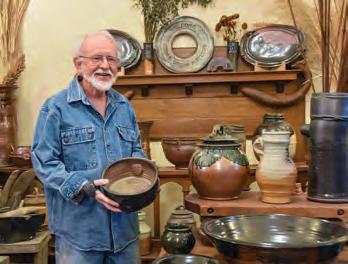
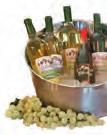
May-Sept.: Daily, 1-6 p.m.; Friday, 1-8 p.m. Oct-April: Friday-Sunday, 1-5 p.m.
Checkourwebsite and Facebook forwinter hours. ur porch
An Estate of Fine Wine feather-river.com • 308-696-0 078 5700 SE State Farm Rd • North Platte
Featuring the work of Ervin Dixon, a country potter who makes and displays salt-glazed stoneware at his refurbished 1895 Lutheran church near Beatriceworth a day’s drive from any direction. cups • mugs • glasses • plates baking dishes • vases • pots
Regular Hours | Mon-Sat, 10 am-5 pm
Cedar Creek Pottery
Directions – 7 miles east of Beatrice to 80th Rd, 3/4 mile south ART EVERYDAY ~ ART EVERYDAY ~ ART EVERYDAY
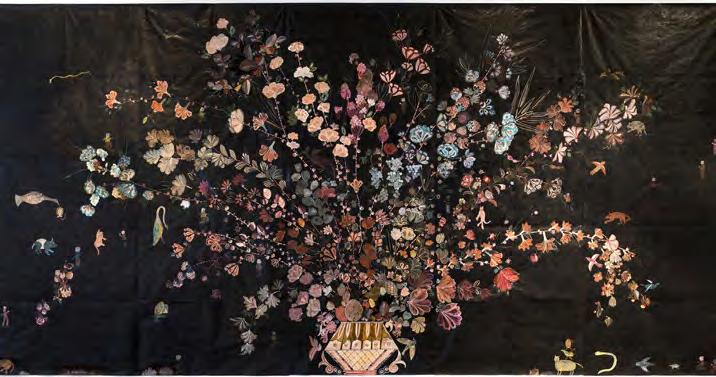
Join us on mona.unk.edu for MONA/ Online to explore current exhibitions from the permanent collection. Take a virtual walk through the exhibition The Lives of Objects: Still Lifes from the MONA Collection, to experience the art of Nebraska from wherever you are!



Nancy Freidemann-Sanchez, Cornucopia (tryptych), collage, ink on Tyvek, 2016, Museum Purchase made possible by Cliff & Mary Hillegass Trusts, Museum of Nebraska Art Collection
is a Spiny Oyster Shell pendant handmade by a Navajo Native American artist.
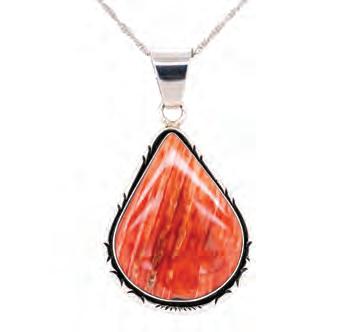

ASHLAND
Strategic Air Command & Aerospace Museum, p 63
AURORA
Plainsman Museum, p 64
BANCROFT
John G. Neihardt State Historic Site, p 62
CHADRON
Museum of the Fur Trade, p 64
FORT CALHOUN
Washington County Historical Assoc. and Museum, p 64
FREMONT
Dodge County Historical Society, p 62
GERING Legacy of the Plains Museum, p 65
GRAND ISLAND
Stuhr Museum of the Prairie Pioneer, p 62
KEARNEY Museum of Nebraska Art, p 59 Archway, p 62
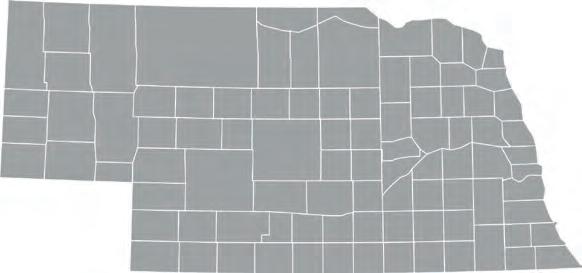
LA VISTA
Czech and Slovak Educational Center and Cultural Museum, p 65
NEBRASKA CITY
Kregel Windmill Factory Museum, p 60 Wildwood Historic Home, p 60
NELIGH
Pierson Wildlife Museum Learning Center, p 65
OMAHA
Omaha Children’s Museum, p 63
The Durham Museum, p 61
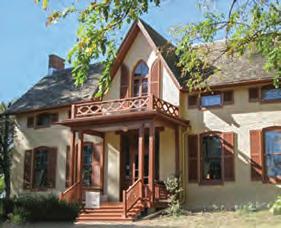
SEWARD
Nebraska National Guard Museum, p 87
ST. PAUL
Museum of Nebraska Major League Baseball, p 63
TEKAMAH
Burt County Museum, p 64
WEEPING WATER
Weeping Water Valley Historical Home, p 62
YORK
Clayton Museum of Ancient History, p 63

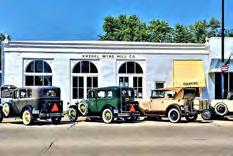

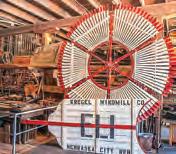
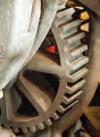
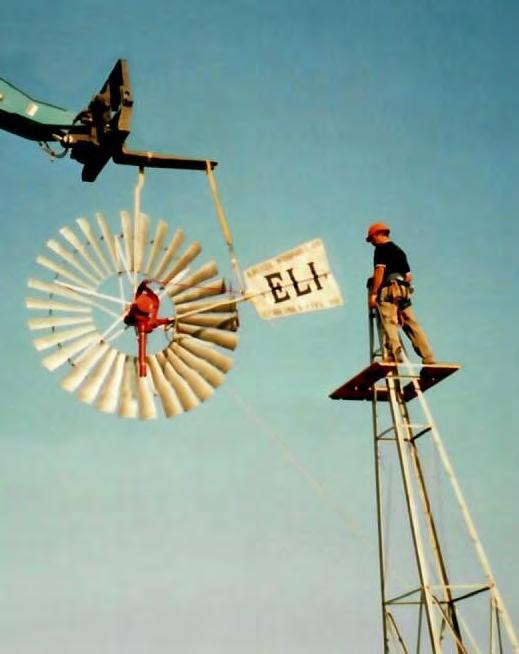
by MEGAN FEENEY
From the time she dropped out of school in 8th grade after her mother’s death to take care of her younger siblings, LaFern Williams was a source of comfort and help to needy women and children in South Omaha. Providing childcare and meals and advocating for poor people in her community until her death in 1975, Williams was a local hero. In 2015, Omaha dedicated South 30th Street, between S Street and W Street, to her name.
Williams’ street sign is one of 22 on display for the exhibit “African American History Through Street Signs” at the Great Plains Black History Museum, a 2022 Passport Stop.
The exhibit celebrates the lives and achievements of 22 Black Nebraskans
who have street signs dedicated to them in Nebraska’s most populous city.
Eric L. Ewing, the museum’s executive director, recreated the signs with his father for the museum’s exhibit, which features politicians and a publisher, activists and an Army sergeant, business owners and a boxer. Photography and bios are attached to each sign.
Highlighting local contributions is as important as national ones, Ewing said, so they’re given an equal spotlight.
Out in Omaha’s streets, cell phone scannable QRC codes on telephone poles connected with the street signs direct users to the museum’s webpage describing the person it honors. Ewing hopes that might bring young people into the museum since it shows the relevance of people in
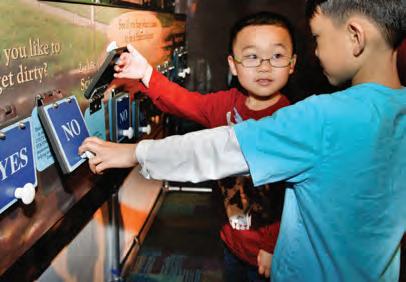
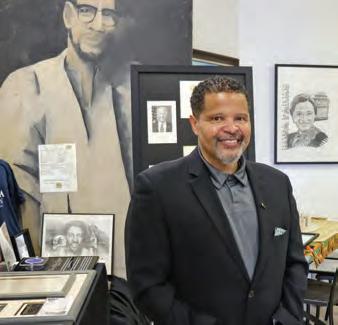
modern times. It might even inspire them to make their mark.
Learning history is important because it helps people prevent making past mistakes, Ewing said, and “it also gives people an opportunity to emulate the good parts and see how we’re all connected.”
Great Plains Black History Museum 2221 N. 24 St., Omaha (402) 932-7077
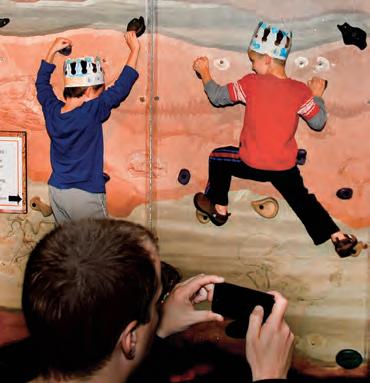
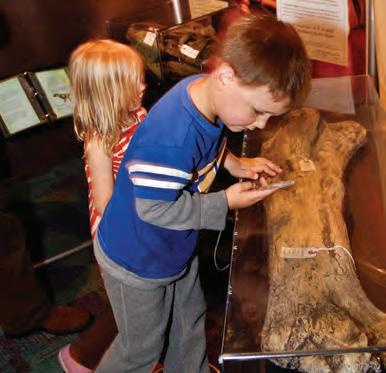
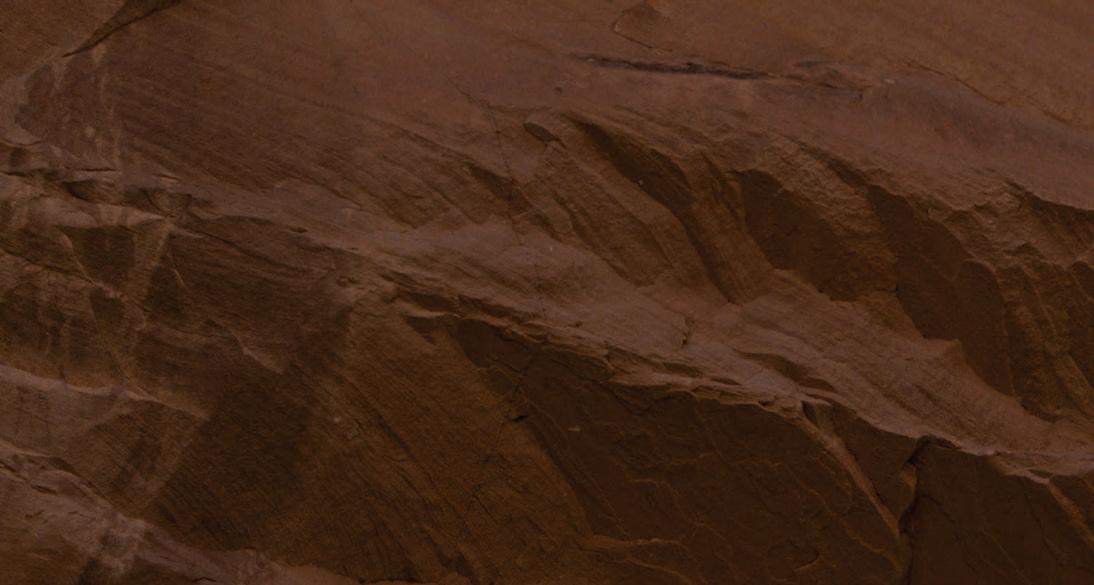
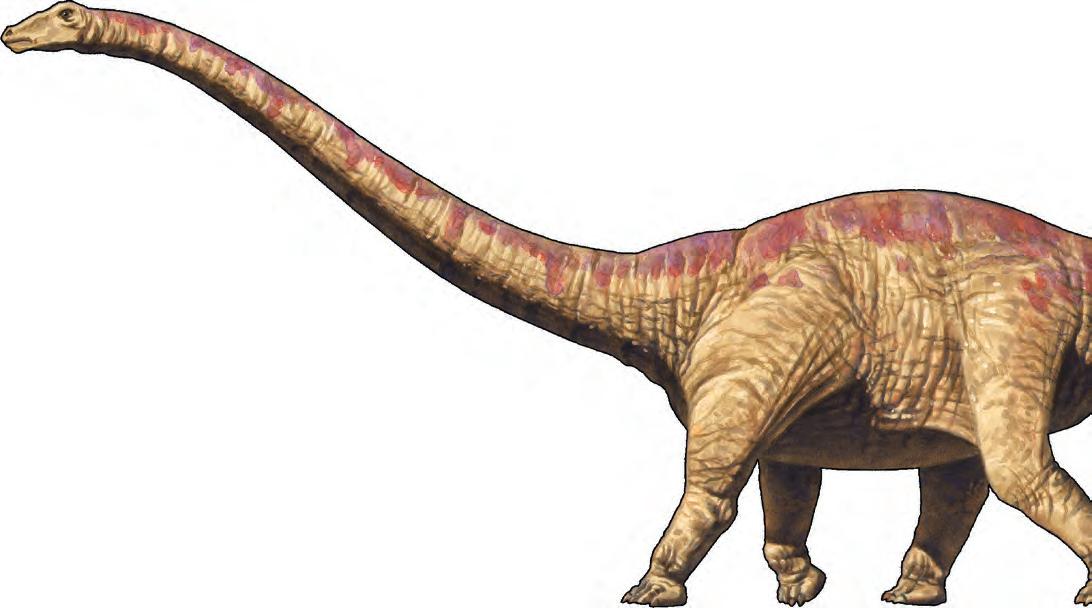
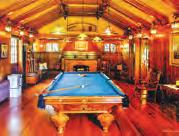
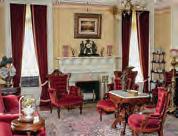

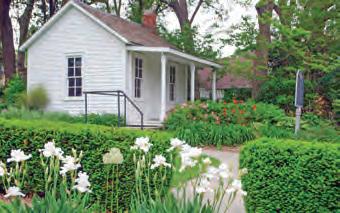


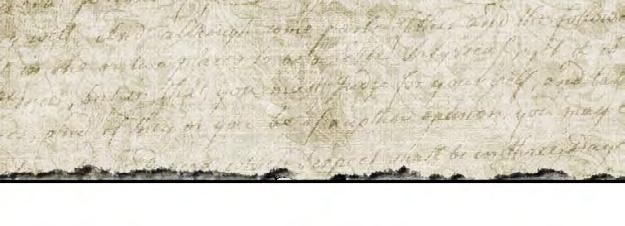
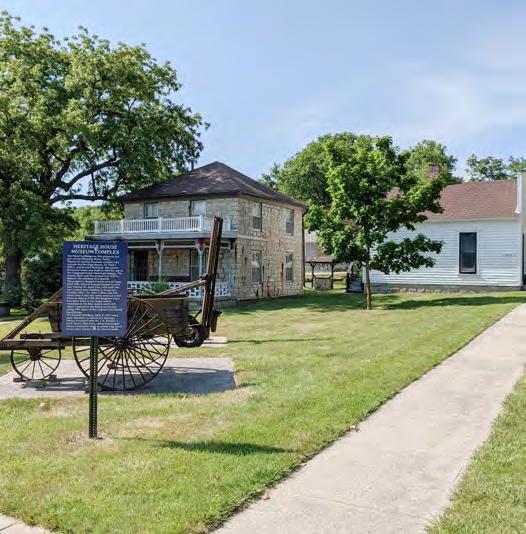

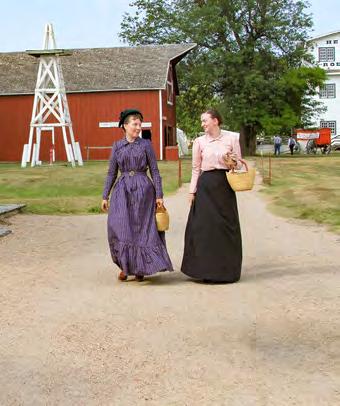



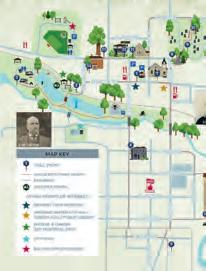

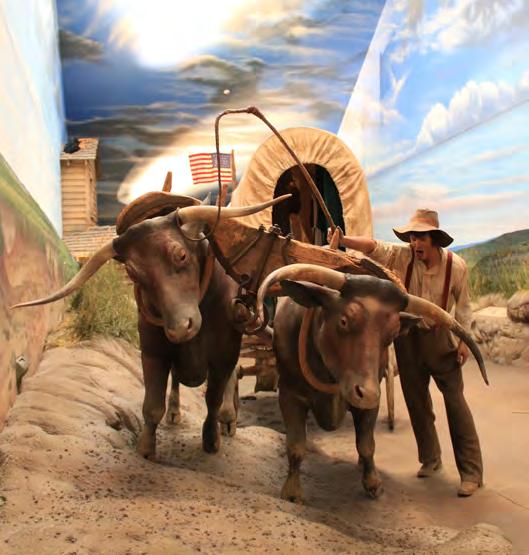
In downtown St. Paul, explore memorabilia of American Major League Baseball players from Nebraska. Also, we now have information on over 160 players.
We are now open on Saturdays and Sundays by appointment only, otherwise, Open Mon–Fri, 10 am–4:30 pm


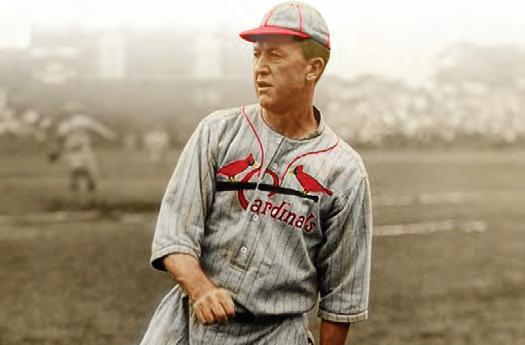



Open May 28, 2022 through January 8, 2023

619 Howard Ave. • St. Paul • NE nebraskabaseballmuseum.com Museum of Nebraska Major League Baseball
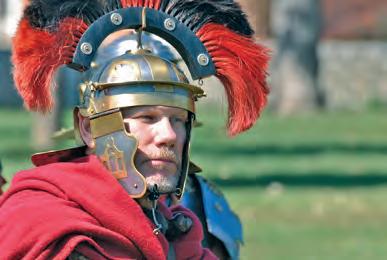


THIS EXHIBIT WILL TRANSPORT CHILDREN TO A WORLD INSPIRED BY THE CURRENT
AND THE FUTURE DREAMS OF

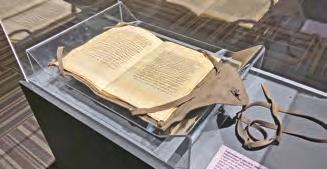
Explore ancient Rome, the Near East and much more. Special Bible exhibit shares the story of scripture from scroll to modern translations. Children’s interactive Little Kingdom now opened!
View rare artifacts from the ancient civilizations of Mesopotamia and Roman Empire! Young and old can experience the museum’s Little Kingdom interactive area. Uncover objects in an archaeological dig, “live” in an ancient house and “shop” a Roman market. Admission is FREE with donations always accepted.
ADMISSION IS FREE

Open Tues-Fri, 1 - 5 p.m. Call for group tours. claytonmuseumofancienthistory.org
Open Tues-Fri, 10 am-5 pm • Sat 1-4 pm claytonmuseumofancienthistory.org
402-363-5748 1125 E 8th St • York, NE o
www.sacmuseum.org
402-363-5748 • 1125 E 8th St • York


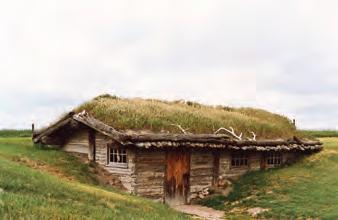
See the history of the first business in North America -the fur trade.
10 Unique items to view!
John Kinzie’s gun
HBC Officer’s sword
Brass Handle Cartouche Knife
William Clark Fabric Samples Chief’s Coat
Kit Fox Society Lance Russian American Co. note
Oldest dated trap 1755
Parchment HBC Officers Certificate Andrew Henry’s Leggings

Open 8-5, May 1 to October 31 3 miles east of Chadron, Nebraska on US Highway 20. www.furtrade.org 308-432-3843 • museum@furtrade.org
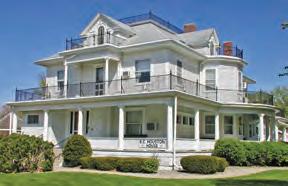
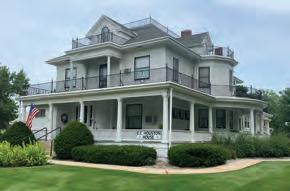
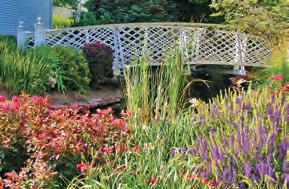
Located in the heart of historic Fort Calhoun, the Washington County Museum is just a short drive north of Omaha on Highway 75. See the history of the county that welcomed Lewis and Clark, famous mountain men and the 6th Infantry. The museum tells the story through Lewis & Clark’s visit here, Native American artifacts, military relics from Fort Atkinson and lives of the early pioneers.
102 N. 14th Street • Fort Calhoun, NE 68023 402-468-5740 • wcneMuseum.org Please call ahead for grgpoup tours HOURS & PRICES Tues-Fri 9-5; Sat 9-1 Closed Sun and Mon. $3 adults; $2 kids 5-12; $1 per student for school tours
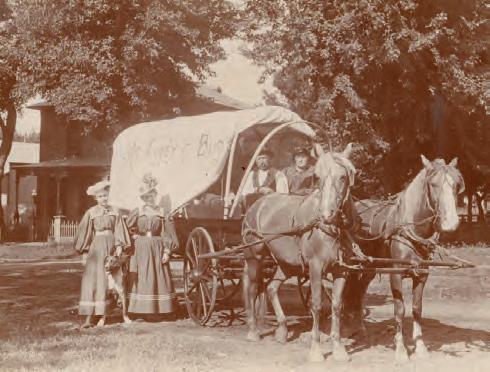


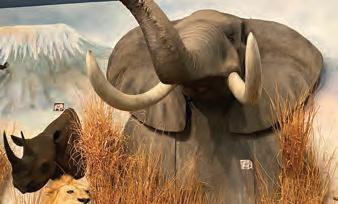
View exhibits from around the world at Pierson Wildlife Museum Learning Center in Neligh. Observe animals and learn about their habitats. From African elephant to woodland caribou, students and adults enjoy this one-of-a-kind display of animals.
To schedule a tour call 402-929-0330 Cash or check payment only.
Wildlife Museum & Learning Center PiersonWildlifeMuseumNeligh.com 205 E 5th St • Neligh
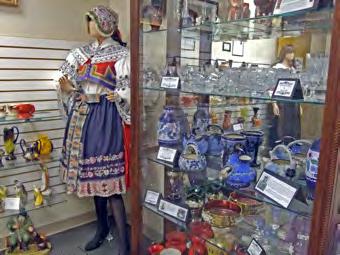
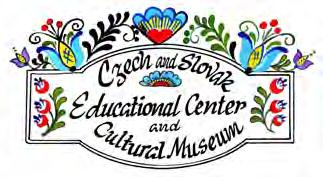
Visit this unique cultural experience in LaVista!
Explore our exhibits featuring the Immigration Room, Music Room, Sokol Room and Josef Lada calendars from the 1940s. Our gift store offers many beautiful Bohemian items from the Czech land.
S. 84th St. • LaVista 402-686-9837


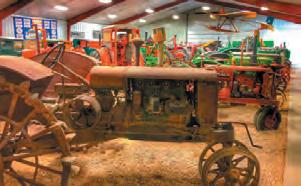
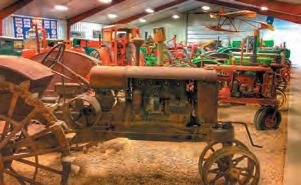

Legacy of the Plains Museum features an impressive collection of pioneer and early community artifacts, antique tractors, and farm implements; an 80-acre working farm; historic farmstead structures; and striking views of Scotts Bluff National Monument. Come test your horsepower, milk a cow, and stroll through our interactive exhibits which feature 37 hands-on activities!
Legacy of the Plains Museum features an impressive collection of pioneer and early community artifacts, antique tractors, and farm implements; an 80-acre working farm; historic farmstead structures; and striking views of Scotts Bluff National Monument. Come test your horsepower, milk a cow, and stroll through our interactive exhibits which feature 37 hands-on activities!
2022 SPECIAL EVENTS

2020 SPECIAL EVENTS

308-436-1989
308-436-1989
OREGON TRAIL DAYS - JULY
OREGON TRAIL DAYS - JULY
OREGON TRAIL WAGON TRAIN - AUGUST
OREGON TRAIL WAGON TRAIN - AUGUST

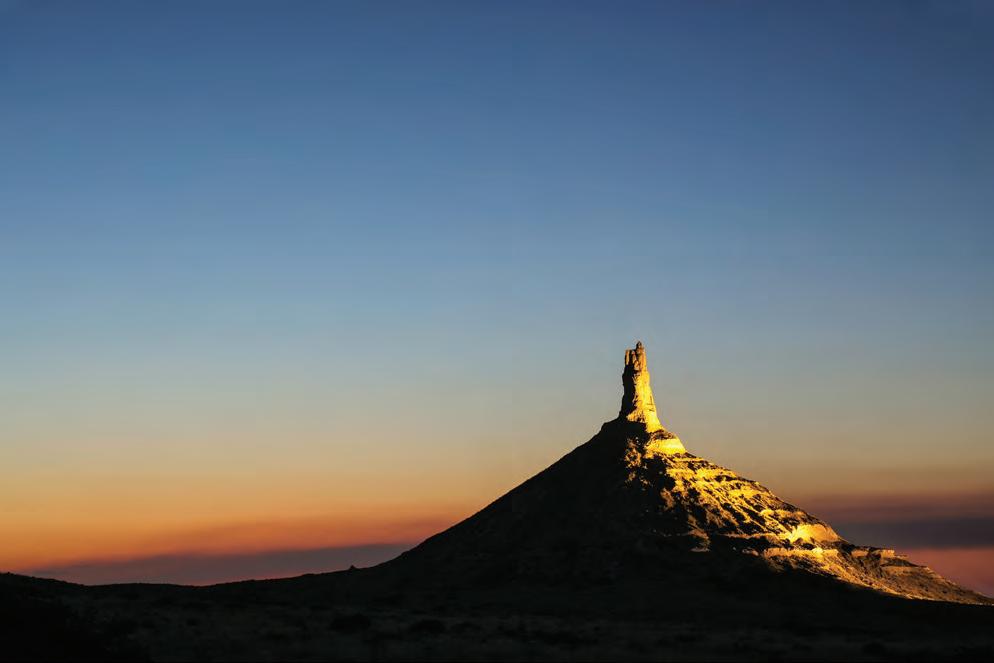
HARVEST FESTIVAL - SEPTEMBER
HARVEST FESTIVAL - SEPTEMBER
HIGH PLAINS CHRISTMAS - DECEMBER visit legacyoftheplains.org for more information Facebook: facebook.com/LegacyOfThePlains
HIGH PLAINS CHRISTMAS - DECEMBER visit legacyoftheplains.org for more information Facebook: facebook.com/LegacyOfThePlains
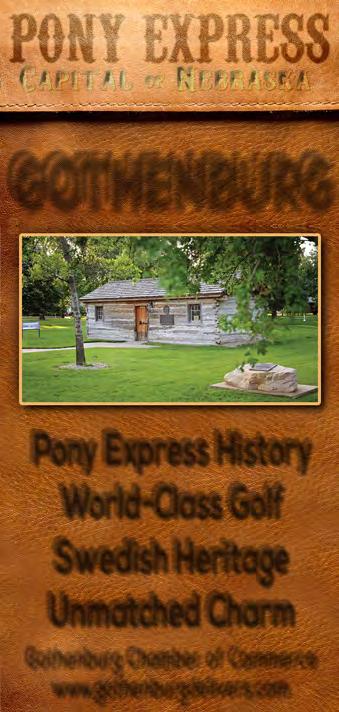

Summertime is party time at Swanson Reservoir near Trenton. Swanson is of two massive reservoirs on the Republican River.
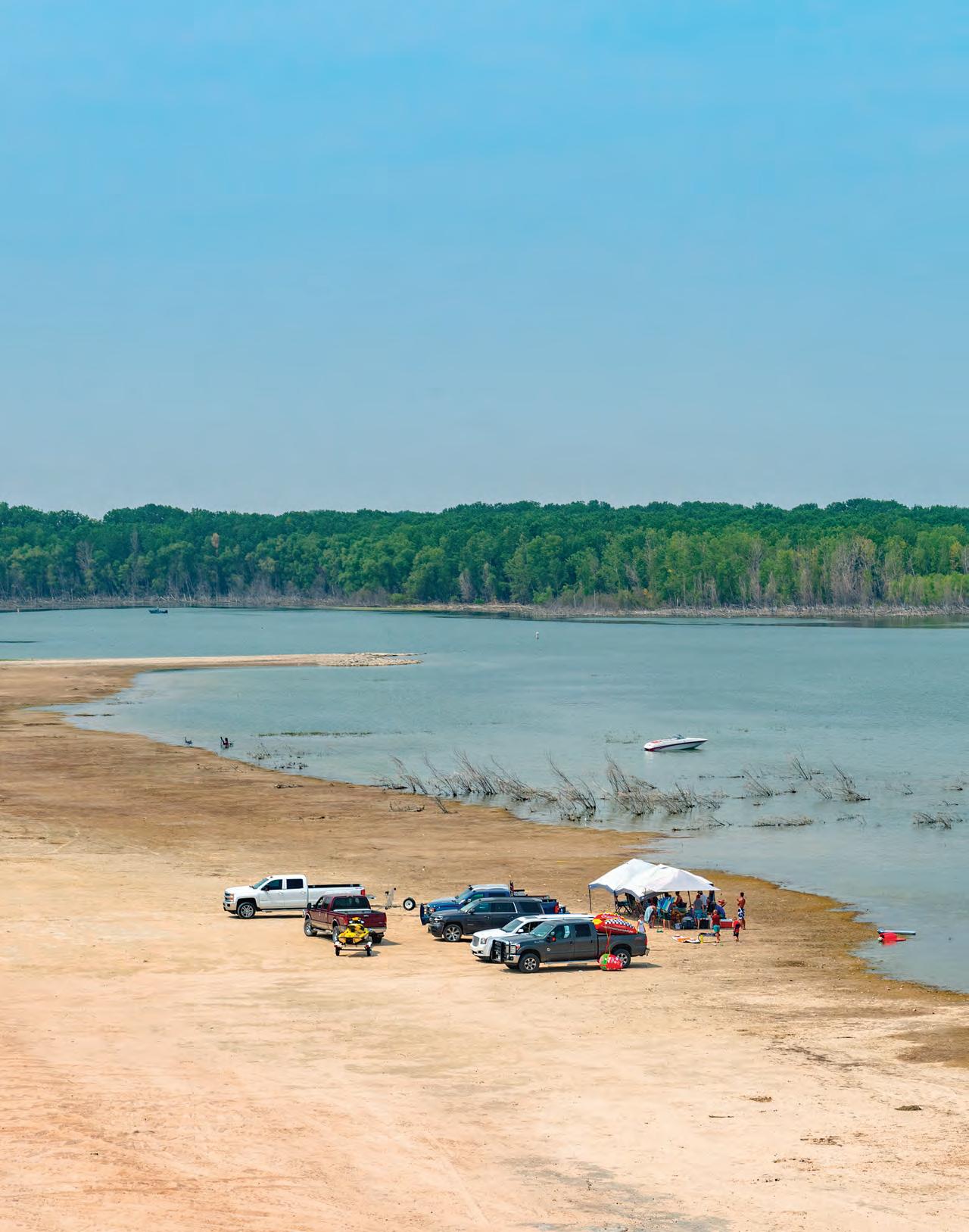
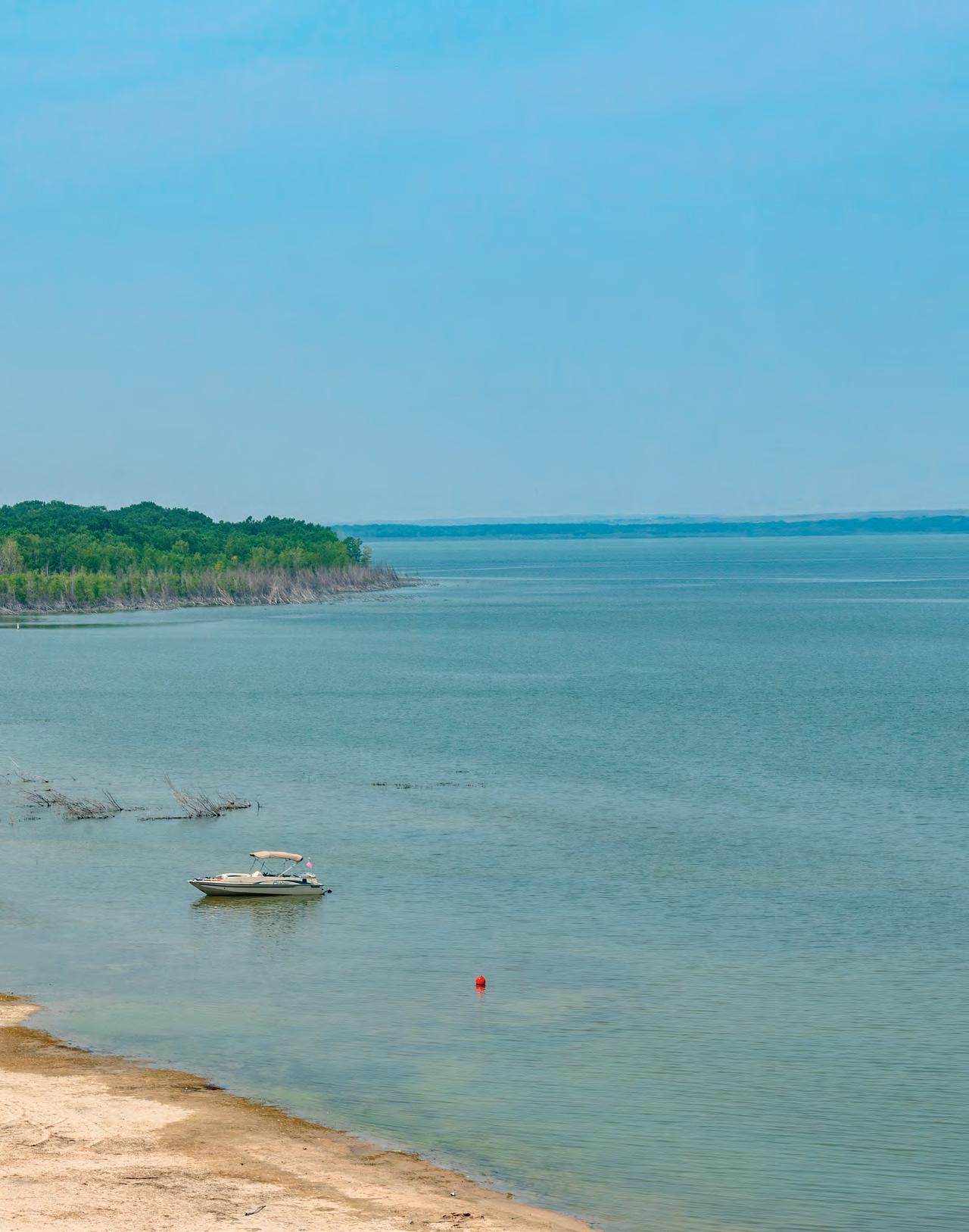
Travel the Republican River for a ‘flood’ of culture and recreation
by ALAN J. BARTELS
bookend much of the Republican River’s length through southern Nebraska. In Hitchcock County, the shimmering ribbon of blue fills the 5,000-acre Swanson Reservoir near Trenton. Downstream 110 miles, the river pools to form more than 13,000 acres of Harlan County Lake near Republican City. Both reservoirs provide critical irrigation water to farmers, and each is the nucleus of recreational retreats for anglers, hunters, bird watchers, hikers and nature lovers. But why they formed is a darker tale from history.
America’s heartland was suffering through the Great Depression and prolonged drought when Decoration Day, the precursor to Memorial Day, arrived in the Republican River Valley in May 1935.
Families adorning the graves of loved ones were oblivious to storms building high over the headwaters of the North Fork of the Republican River in Colorado. As the clouds opened, some residents believed their constant prayers for rain were being answered.
Rain doused the parched earth for three days. Twenty-four inches fell in 24 hours along the South Fork of the Republican River. Twelve inches fell in the Upper Republican Valley.
The river and its contributing creeks swelled. Tributaries in Kansas and Colorado sent a slurry of muddy water and debris churning toward southwest Nebraska.
At McCook, the river rose 10 feet in 12 minutes. Homesteads, communities and lives along the Republican River were dec-
imated. Thousands of Nebraskans were left homeless. More than 300 of the state’s bridges and 341 miles of highway were destroyed. In Nebraska, the flood claimed 94 human lives.
Inspired by the deadliest flood in recorded Nebraska history, the Republican River was quickly subdued, primarily
hemmed in by reservoirs created for flood control. The river culture changed for residents who lived intimately with the untamed stream. Decades after completion, the lakes are recreational destinations critical to local communities and occupied by residents and visitors, forming a unique aquatic culture of their own.
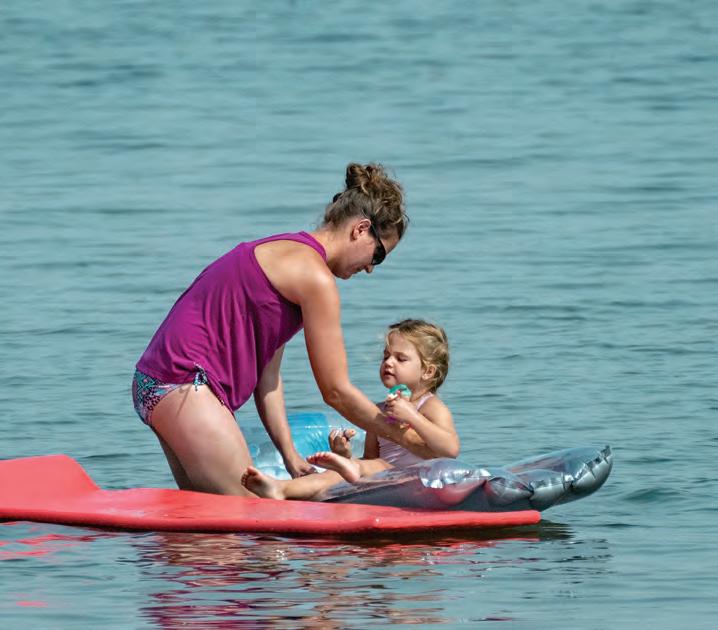
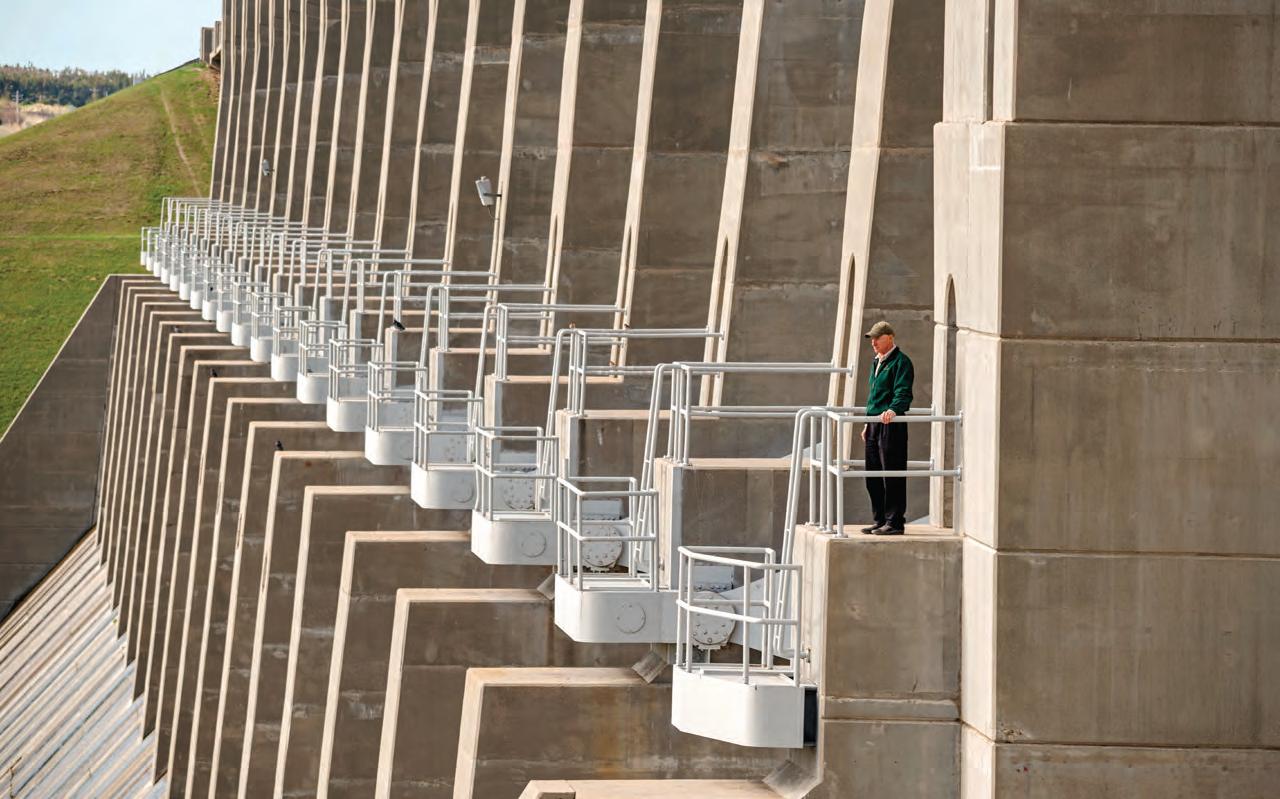
North Shore Marina is the hub of a lakeside community anchored on the north side of Harlan County Lake. More than 8,000 people attended when the dam was dedicated in 1952, a metropolis compared to the 160 full-time residents in Republican City today. Another 400-500 residents live near the marina, most of them calling the lake home only on weekends or during summer vacations.
Before owning the marina, Bruce Beins walked to the lake after school to fish for crappie around the docks. He preferred standing on solid ground. His dad’s boat –built of weathered 2x4s, chicken wire and 55-gallon barrels – leaked like a sieve.
These days, Beins and friend Steve Dornhoff explore the lake in a proper 24foot pontoon boat, the craft’s 115-horsepower inboard motor easily pushing through the whitecaps. Beins talks about the dam being the largest earth-filled dam in the world when it was built, how the U.S. Army Corps of Engineers put former World War II soldiers to work to
complete the Harlan County Dam, and how there are 75 miles of shoreline when the lake is full.
“They wanted the dam to be able to hold five 1935 floods, Beins said, “and they way overbuilt it.”
Pointing out the Pawnee camp known as “White Cat” and the “Indian Hill” burial ground that the University of Nebraska dug up and reinterred, Dornhoff uses landmarks to pinpoint the location of the former townsite. The boat’s fish-finding sonar shows about six feet of Republican River water covering the original site of Republican City. Waving his arm in a wide arc toward the south shore, Dornhoff mentions another landmark – Bone Cove.
Local lore tells of William F. “Buffalo Bill” Cody and a cohort trapping in the area when Cody suffered a broken leg. The friend fashioned a rocky lean-to shelter for Cody before leaving for Fort Kearny for help. Always the fabulist, Cody later bragged of fighting off thieves who tried to steal his food. The rock shel-
ter caved in long ago, and the cove itself is accessible by boat only in the wettest years.
Beins has found pharmacy bottles and other relics. They are illegal to remove since the lake is federal property. In the driest times, the ghostly image of the former town’s railroad tracks comes into view. “You can walk the streets and sidewalks of the original Republican City,” Beins said.
Up the hill in the new Republican City, Sara Hammond operates The Island bait shop and restaurant. One minute she’s flipping her famous Island Burgers, the next scooping minnows into buckets for anglers. This is about as close as she gets to the lake. On the other hand, her husband and business co-owner, Arik, has a love affair with the reservoir.
He’s a two-time winner of the Governor’s Cup Walleye Tournament and teaches their four children how to hunt and fish. Memorable catches include several 8-pound walleyes and a turtle that he fought for 15 minutes before cutting the
line. Hammond is thankful for the lake, pointing out the close relationship that the community has with the local U.S. Army Corps of Engineers staff who manage the dam and lake.
“Everyone around here understands that the decisions on when water is released aren’t made here,” Hammond said. “During the 2019 flood, there weren’t a lot of options. We had to hold water here. The flooding upstream from the dam was unfortunate for all.”
According to Tom Zikmund, the Corps’ local Natural Resources Specialist, the date July 23, 2019, set the record pool for Harlan County Lake – 12 feet higher than usual – three feet higher than the previous high-water record for the lake. “Most of our docks, and North Shore Marina, were all flooded,” Zikmund said. “The 2019 flood challenged us, but we showed that we can slow the flood. We inspect Harlan County Dam every day, and for as old as the dam is, she does a tremendous job.”
Kenneth and Juanita Gregoire lived in Kansas and planned for retirement 16 years ago when Harlan County Lake came into their lives. “I was having coffee with a group of scoundrels, talking about looking at a place on a Missouri lake, when a man who overheard us tapped me on the shoulder,” Gregoire said. “He said, ‘I’ve got a house to show you.’ ”
That afternoon, the Gregoires saw their soon-to-be new lake home for the first time. Rain fell on their drive to Nebraska and was still falling as the couple stepped onto the deck overlooking the lake. “Just then, the rain stopped, and a rainbow formed,” Juanita said. “It was divine. I knew we were home.”
He doesn’t fish, but Kenneth has filled several large jars with the old lures, plastic bobbers and other fishing tackle snagged in lakeside rocks and limbs. Lake life here is quiet, except for the occasional Johnny Cash song playing on a passing boat or an occasional bark from the Gregoires’ German shepherds, Easy and Izzie. Purple martens returning to the bird condo on a pole Kenneth made for them is a sure sign of summer. Juanita believes multiple l here.
“The people at Patterson’s Harbor are different from those at North Shore. The
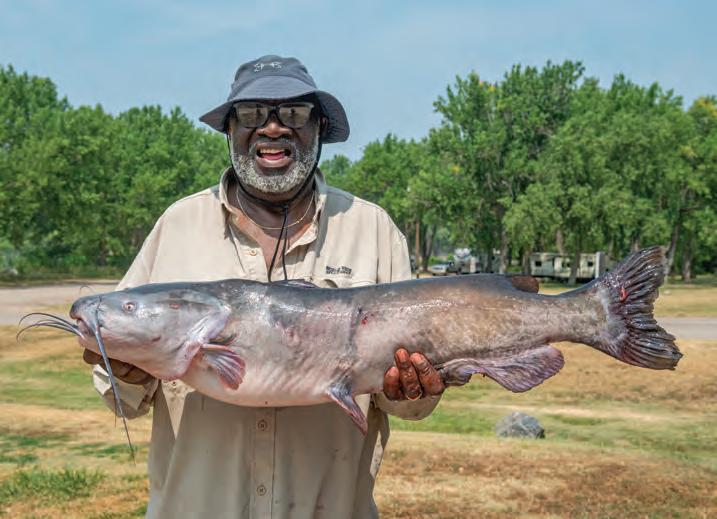
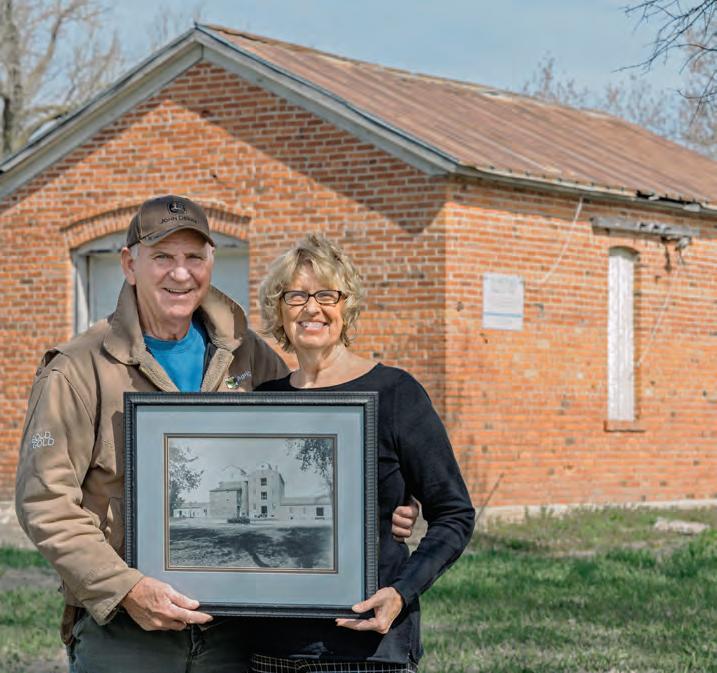
Patterson people are very close, and the North Shore people golf together,” she said. “The people in these nine houses on Abbey Road are a tight-knit family, too, and that’s not a bad thing. And then you’ve got Alma.”
The community of Alma, upstream from Republican City, spreads in every direction from the intersection of U.S. Highways 136 and 183. Most of the community’s 1,300 residents could walk out their front doors and be on the lakeshore in a few minutes. The neighborhood is quiet on most summer days, except at Fisherman’s Corner.
The beef is fresh and the beer cold at this combination liquor store, cafe and bait shop. The bait tanks are concrete burial vaults – rejects, owner Kent Shaffer thinks – but they’ve held water since the 1970s.
Since he was 8, Hildreth native Ron Einspahr has been coming to this lake. He lives six blocks away from it and is known for bringing stringers of channel catfish home and inviting neighbors over for fish fries. He also has a reputation for knowing what’s biting where.
While running the front counter, he quizzes anglers who stop for beers after being out on the lake and dispenses that intel to those headed out. “Never gets old talking about fishing. I can talk fishing all day,” said Einspahr, who points out that on any given Memorial Day, Fourth of July or Labor Day, his local lake attracts 30,000 people or more.
The U.S. Army Corps of Engineers estimates that the $25 million that 670,000 visitors spent within 30 miles of Harlan County Lake in 2019 helped support 245 local jobs: convenience stores, restaurants, hotels, and bait shops like this one.
Locals say that people traded their Jet Skis for ATVs when the lake went down. Then the lake came back up. The same applies to local home prices: When the lake is low, home prices fall. When the water rises, so does the cost of a house near the lake.
“I don’t know if we are different here. I think we’re just the same old friendly Nebraskans found anywhere in the state,” Shaffer said. “But we do have the only live bait in Alma, and Nebraska’s best lake.
From Alma, the Republican River Valley winds in a wide arc north and west past Orleans, Oxford, Edison, Arapahoe, Holbrook, Cambridge, Bartley, Indianola, McCook, Culbertson and Trenton. All those communities are north of the Republican River, and each suffered massive losses in the 1935 flood.
The Oxford Museum remembers the deluge with a timeline painted on one wall in Oxford. Museum board member Nancy Knuth is an expert on the event. She tells of the valley’s Native Americans warning pioneers of floods filling the valley from bluff to bluff. When that came true, and floodwaters reached Oxford at about midnight on that fateful night in 1935, Knuth’s father, Max Banwell, got in the water to try and save the Fuchs family.
Thirteen family members were all at Orville and Dorothy Fuchs’ home when water began rushing in. Orville hacked a hole through the attic, and everyone
climbed out onto the roof. Two family members fell off the home when it floated off its foundation. The rest of the family was flung into the water when the floating house crashed into a tree and split.
“Orville was a good swimmer due to his World War I Navy experience,” Knuth said. “He tucked his infant son, Howard, inside his bib overalls. Dorothy held onto an overall strap with one hand and their daughter Willis Lou’s hand with the other.” Knuth’s voice becomes barely audible as she tells museum visitors what happened next.
“There was so much debris that Dorothy lost her grasp on her daughter’s hand. Devastated over the loss of the girl, in the darkness, Orville heard his wife say, ‘I’m leaving.’ She let go, and she was pulled under,” Knuth said.
Some reports state that Orville and Howard were marooned with their dog, Jack, on an island for 36 hours before being rescued. Knuth has heard that they were stuck in a tree.
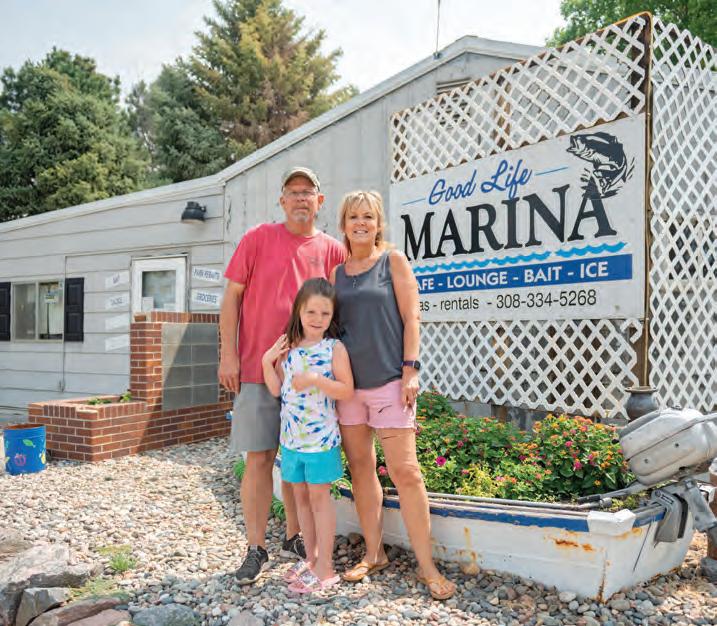
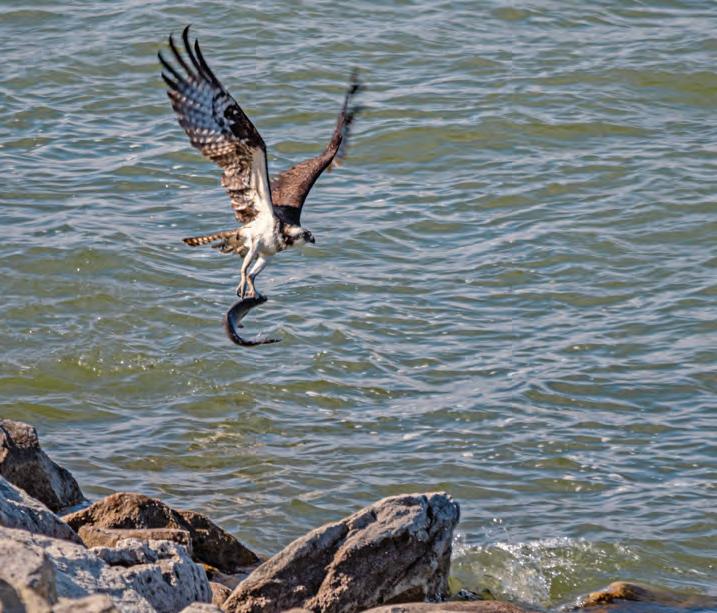
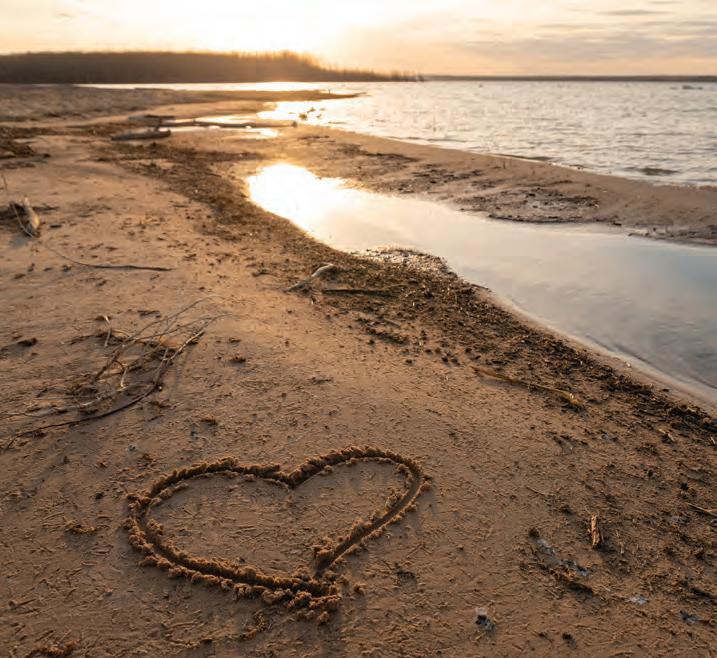
“Rats and snakes were floating downstream. Orville saw a quart of peaches float by and grabbed it. That provided their only food and drink until the National Guard arrived,” Knuth said. “Only four members of the Fuchs family lived. All the women died.”
Eighty-seven years after the devastating deluge, the high-water mark remains visible south of Arapahoe between the Republican River and Muddy Creek.
There was no house on the land when Douglas and Cheryl Schutz purchased the farm in 1991, and the mill that once produced White Dove Flour was beyond repair. The Schutzes built a home two feet higher than the 1935 flood. “We have a basement, but we’re goosey about it,” Douglas said. “The 1935 flood took the topsoil, and the flood of 2012 brought sandburs and other weeds. In the valley, floods are always in the back of everyone’s mind.”
The Schutz’s razed most of the former mill and elevator that was later converted to a hydroelectric dam. They saved one brick building from the complex, unable to bring themselves to dismantle what had survived nature’s fury intact. A black line five feet up on the door jamb is accompanied by a handwritten remark that reads, “1935 flood.”
Before marrying 58 years ago, Douglas and Cheryl attended the same Lutheran and public schools. Their families went to the same church. Douglas and his childhood friends explored the river, fishing with rod and reel and by hand.
“One buddy was reaching under the bank when his face turned white, and he asked, ‘Do catfish have fur?’ We paid a little more attention after that,” Schutz said. “We’d dink around in the river a lot, and we caught lots of big catfish.”
The Schutz’s sons and grandsons farm the family land today, which leaves Douglas plenty of time to feed the trout in his pond, but he rarely wets a line of his own.
“The river was a big deal when I was a kid, but there’s not as much water in it now. During the irrigation season, it drops to about nothing,” Schutz said. “Back in the day, some of the old-timers would trap for a living and eat it, too. But access to private land these days is a problem, and that river culture is long gone.”
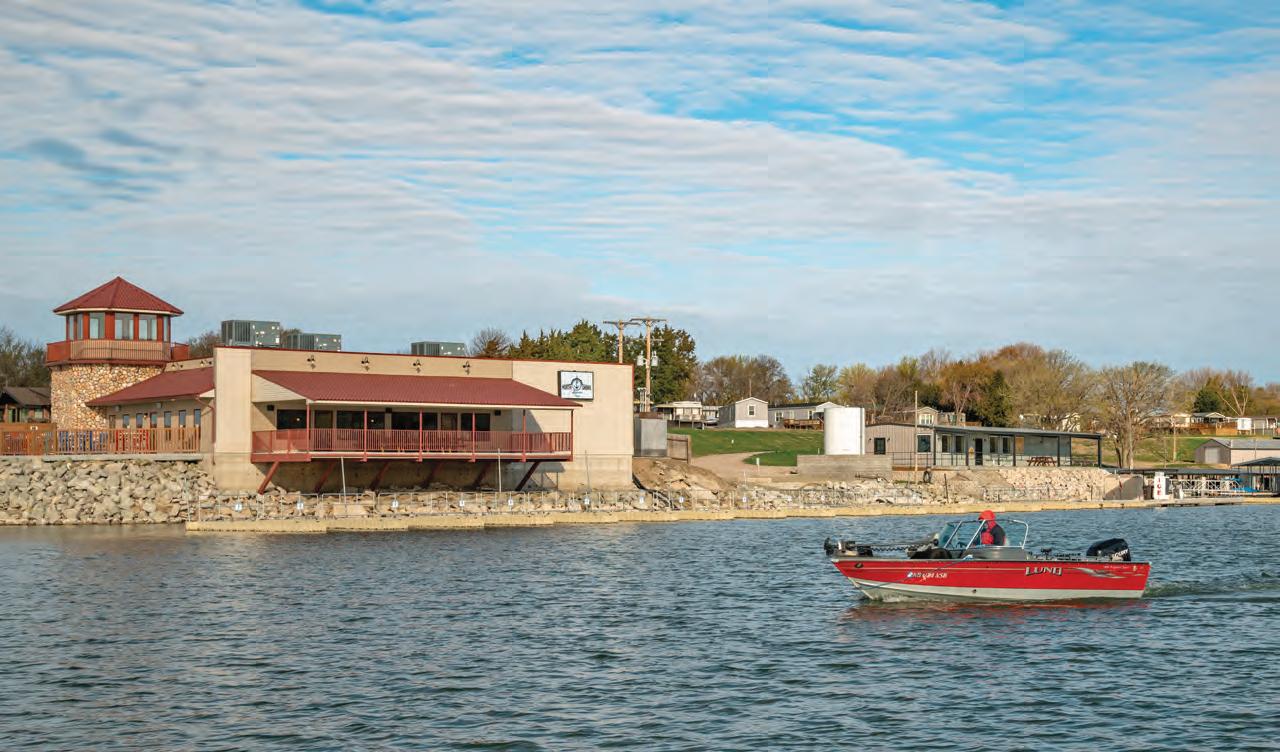
George Sund echoes those comments. In 39 years as a game warden for the Nebraska Game and Parks Commission, much of it along the Republican River between Oxford and McCook, he only had to draw his weapon one time – when he encountered a man harvesting marijuana. Another time, Sund found himself in the crosshairs.
He was surveying with binoculars and saw a man pointing a rifle at him. “That guy was just looking through the scope to see what I was doing,” Sund said. “I later told him that if someone has a gun pointed at me, I assume he’s going to shoot and that next time, I’d shoot back. I’ll treat people as well as they treat me.”
According to Sund, people have placed many demands on Republican River water. “You can use the river from April to about June, but there’s not usually enough water to float a canoe the rest of the year,” he said. “Much different than when I was growing up along the river near Superior noodling for catfish on Sunday afternoons. It wasn’t legal in Nebraska then and isn’t now, but some of the best game wardens I ever knew started as some of the biggest crooks.”
Unlike Harlan County Lake and its tens of thousands of weekend visitors, this lake west of Trenton sees crowds in the hundreds on its busiest weekends – like when the walleye are spawning along the dam –or when giant schools of white bass are on the move. A few dozen residences, many of them in trailers, occupy one small area near the state-owned Good Life Marina.
The good life, indeed. Pelicans outnumber visitors most days at this peaceful escape one-third the size of Harlan County Lake. What it lacks in mass, it makes up for in tranquility.
“For a birder like me, Swanson Reservoir is a terrific treasure hunt,” said Pat Shoenfelder, a photographer from Imperial. “The bald eagles gather in winter, and huge flocks of snow geese stop. In early spring, the shorebirds migrate through, and the reedy areas are great places to spot great blue herons. I’m never disappointed at Swanson.”
The U.S. Army Corps of Engineers was already working in the valley when Nebraska Sen. George Norris’ Flood Control Act of 1944 authorized the construction
of dams on the Republican River and its tributaries.
Shoenfelder has a personal connection to those flood control efforts. Her uncle, Willard Kregger, was an engineer on the Enders Reservoir project on Frenchman Creek, which feeds the Republican River. More than a dozen such dams were built in Nebraska and Kansas. As construction flourished, a Republican River flood in 1947 removed any doubt of the need for flood control. Swanson Reservoir was established with the completion of Trenton Dam in 1953.
While localized flooding still occurs, a significant deluge has not widely damaged the Republican River Valley since 1960.
“The Republican River has returned to its quiet ways, a gentle giant sleeping on the prairies of Nebraska, Kansas and Colorado,” said Joy Hayden, author of The 1935 Republican River Flood. “Will it waken again? The next chapter of the Republican River is being written today by those living along its banks, those who control the rights to its waters, and those who govern the land through which it flows.”
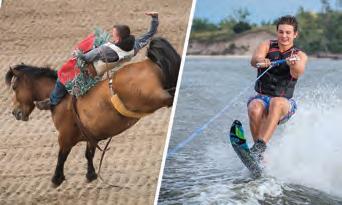
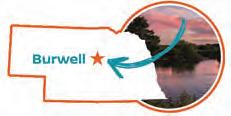
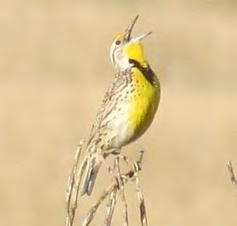
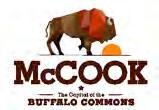
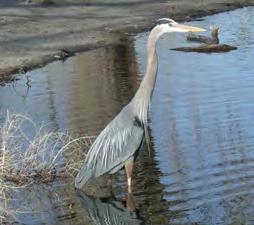
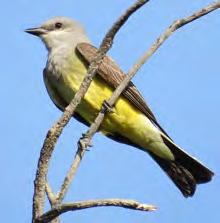

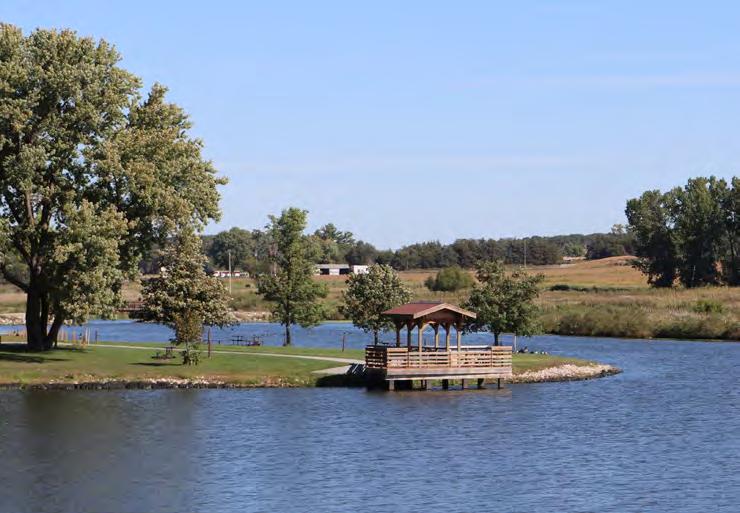
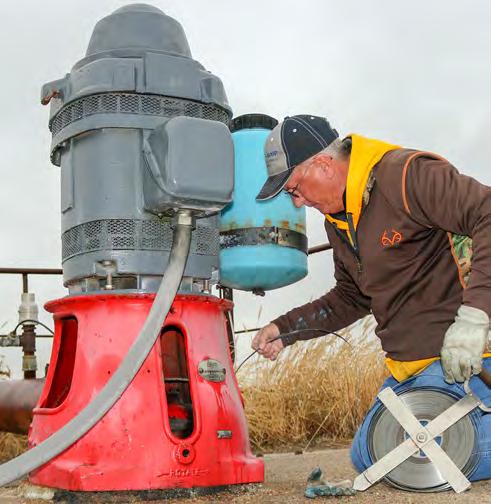








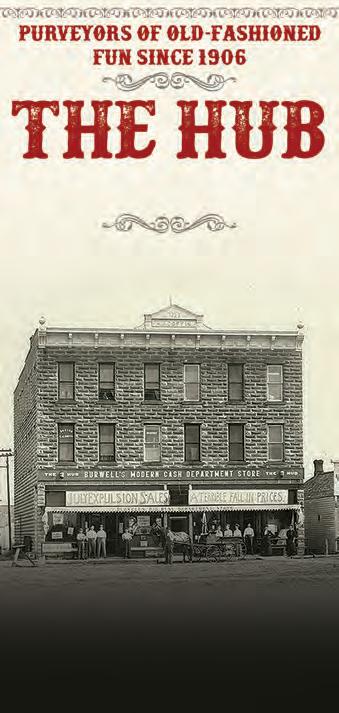


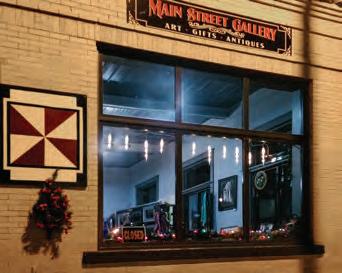
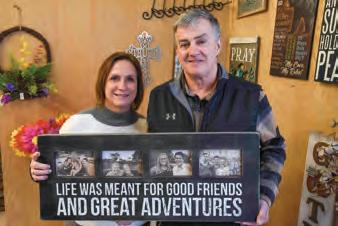


story by ALAN J. BARTELS
photographs by JOSHUA HARDIN
WITH SWEAT AND anger dripping from their faces, two cowboys burst through a saloon’s swinging doors onto a dusty road to settle a score.
Back-to-back, they step off three paces ... and turn.
Bang-Bang!
Slow on the draw, one cowboy falls to the ground.
The watchful sheriff unholsters his six-shooter and blasts the winning pistoleer.
Meanwhile, a man on the balcony above – claiming to be the new sheriff in town – picks off the lawman with a long gun.
Frontier justice, Ogallala-style, ends as a saloon girl yanks a pistol from her garter belt and fires the final shot.
And with the smell of gun smoke still hanging in the air, saloon patrons gathered in groups now casually step over the victims onto the boardwalk and through the swinging doors. The show inside is about to begin.

Tart saloon girls and tough cowboys have brought the drama of Ogallala’s Old West-inspired Front Street to life for 60 years.
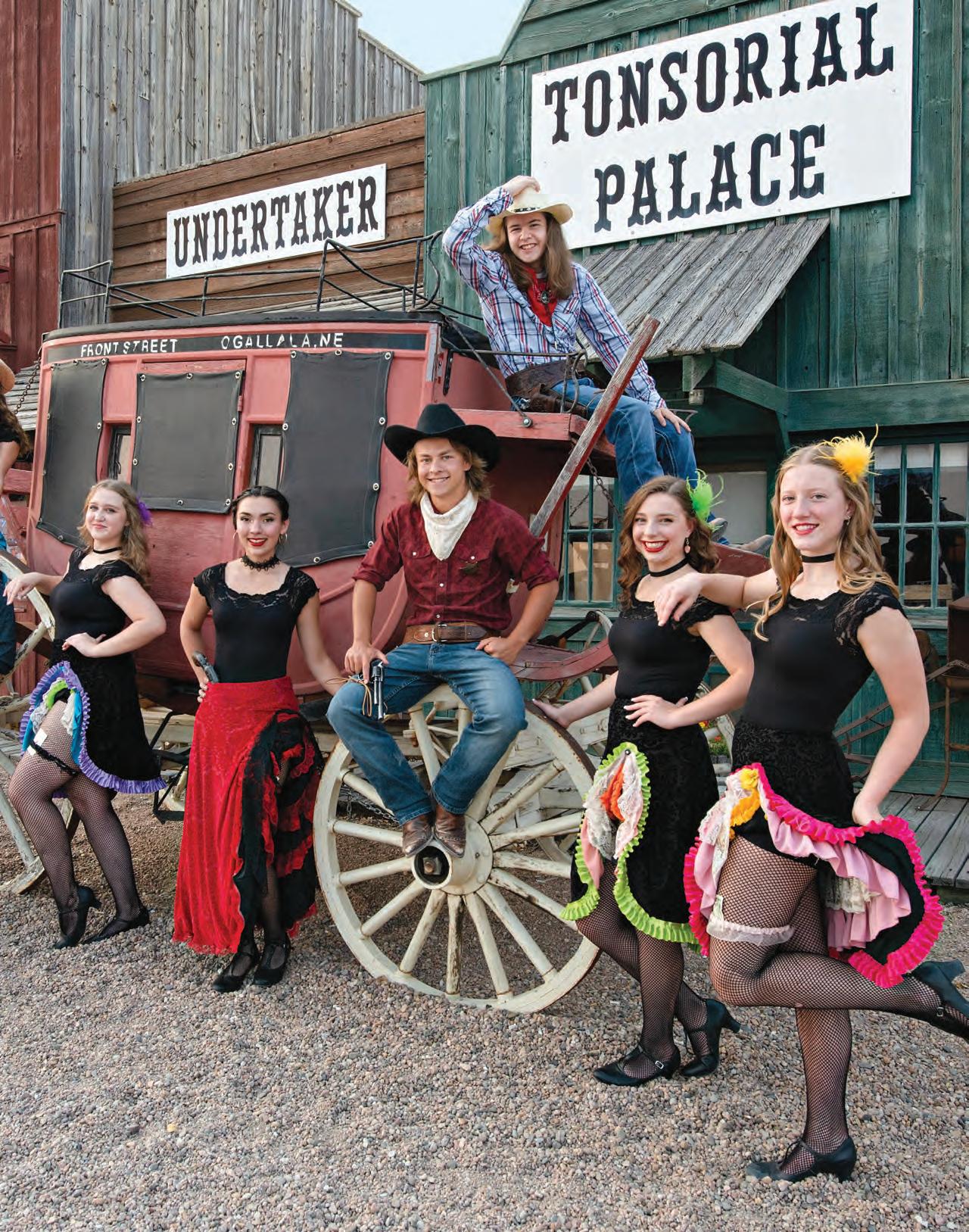
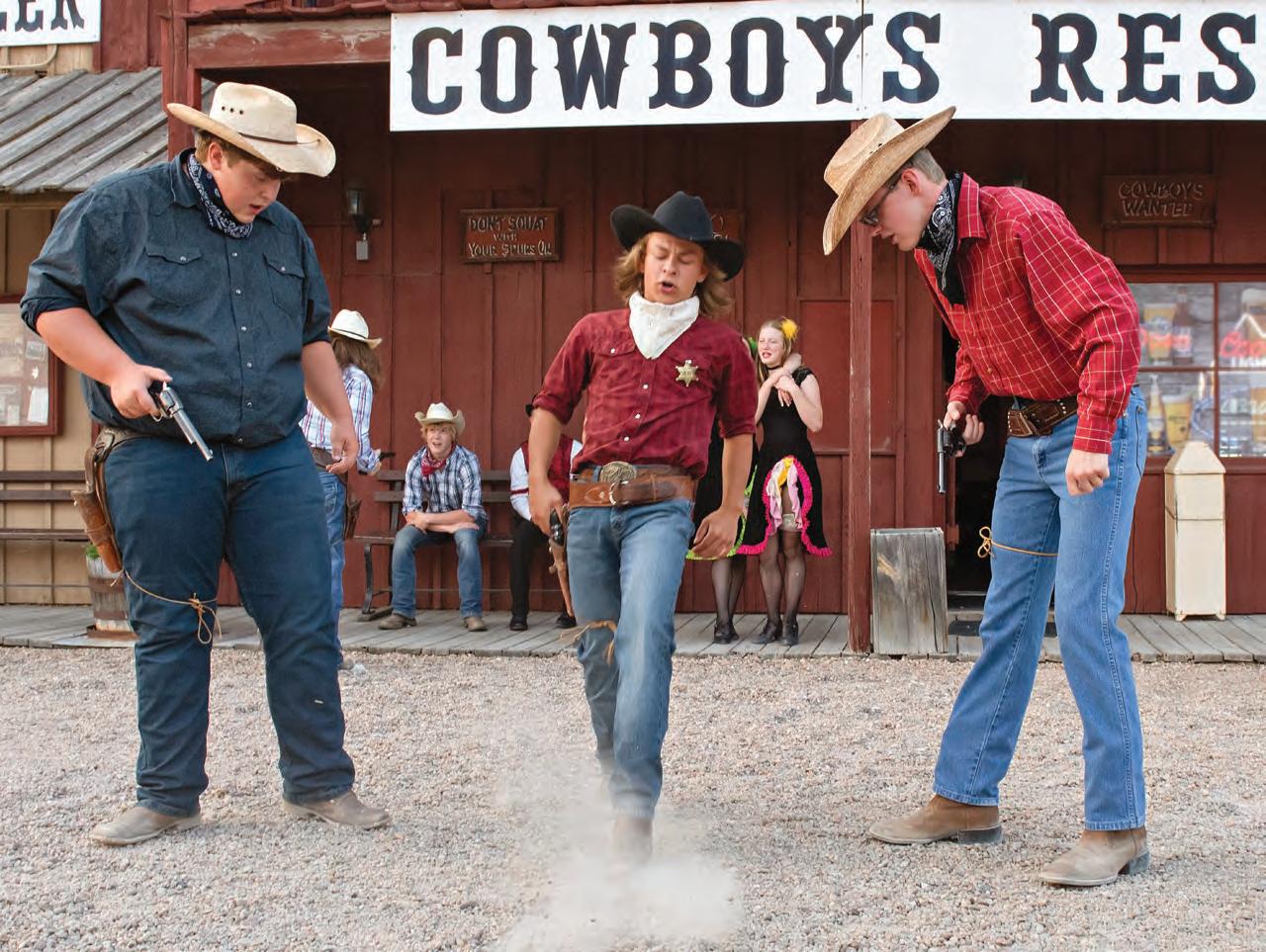
The Crystal Palace Revue employs about 30 actors, ages 14 to 21, who present a fun, family-friendly show with singing, dancing, history and audience participation. Many songs and skits are longstanding favorites, but the director mixes up each season with new bits.
This scene plays out seven summer nights a week at Ogallala’s Front Street and has been for nearly 60 years. A cast of high-kicking showgirls, cowboys and young local actors perform Nebraska’s longest-running summer stock theater, called the Crystal Palace Revue.
Front Street is a historic-looking frontier town established by five Ogallala businessmen in 1964. The Revue is the main draw to Front Street. Visitors also enjoy steaks and drinks at the steakhouse and saloon, lighter fare at the cafe, and explore history in Front Street’s general store, gift shop and museum. Next to a stagecoach, a 30-foot-tall wooden cowboy silhouette offers a friendly wave to motorists on U.S. Highway 30.
Ogallala once had the nickname “Go-
morrah of the Plains.” Violence and debauchery were rampant here in the 1870s after Union Pacific made Ogallala a significant beef shipping location.
The trouble was not the passengers on the iron rails but rather the Texas Trail cowboys starved of wine, women and song after months on the trail. Cowboys, Oregon Trail pioneers and soldiers solved their altercations with fists and firearms. Sometimes the fights involved the seasonal saloon girls and prostitutes who flocked in droves to Ogallala.
Those wild days ended in Ogallala in the 1880s when Texas cattle became diseased and were banned from the Plains, but today’s Crystal Palace Revue keeps that era alive. Thirty-one actors, ages 14 to 21, present a humorous and clean show
with song, dance, history and audience participation.
Fortune smiled on Front Street after Ogallala veterinarian Darlan “Doc” Rezac – the last of the original investors – put the business up for sale in 2016. Doc was making arrangements for an auction with no takers when locals Stacey and Kathleen (Kat) Bauer entered stage right to purchase it. Kat grew up at Front Street, and her mom has photos of her on stage. With such a history and importance to the community, Kat and Stacey say they couldn’t bear to see it auctioned off and broken up. The 2022 season marks the Revue’s 59th year, thanks to the Bauers.
Piano player DeVere Larington has been tickling the ivories for a half-hour when the attendees return to the Crystal
Palace Saloon for beers and Nebraska beef steak suppers. Longhorn cattle heads and photos of past casts adorn the walls. A sign above the piano reads, “Please don’t shoot the piano player. He’s the slowest gun in the West,” but Larington is quick on the keys with old-time music.
He started playing piano at age 7. Through a coincidence that began with his family donating their upright piano to Front Street, Larington entertains the crowd by playing on the very same piano he learned as a child.
Decked out in a derby hat, silk vest and clip-on bowtie, the 21-year-old music major at the University of Nebraska-Kearney looks the part of a saloon entertainer. Last year, with an overflowing crowd, three cowboys were about to begin singing “Bury Me Not on the Lone Prairie” when DeVere realized he didn’t have the sheet music. The cowboys adapted as Larington fingered “The Battle of Boot Hill” until noticing the correct score on top of the piano.
Toward the end of the season, the cast pulled one audience member on stage. It had been a great show, but it upset one audience member. “This woman runs up and starts hooting and hollering,” Larington said. “She insulted one of our showgirls.” Like it or not, hangings, gunfights, and saloon girls are all part of Ogallala’s history.
Paxton third-grade teacher and One Act Troup instructor Tomas England started with the Crystal Palace Revue as a cast member years ago and now serves as the show’s director. Some of his students are regulars in the Revue.
Many of the songs and skits have been performed for decades. England replaces one piece each season and mixes up the dances – “but only a little,” he said. “Our locals like things kept the same,” he said.
Each performance is “loosely scripted,” he said. It encourages his actors to ad-lib –even when the production takes a painful turn, like when the piano player picked up his bench to fend off a gun-wielding miscreant. The player dropped the oak bench on 20-year-old Rachel Orth’s foot. Blood started running in her shoe.
“When something like that happens, you keep acting,” Orth said. “The crowd just thinks it is part of the show.”
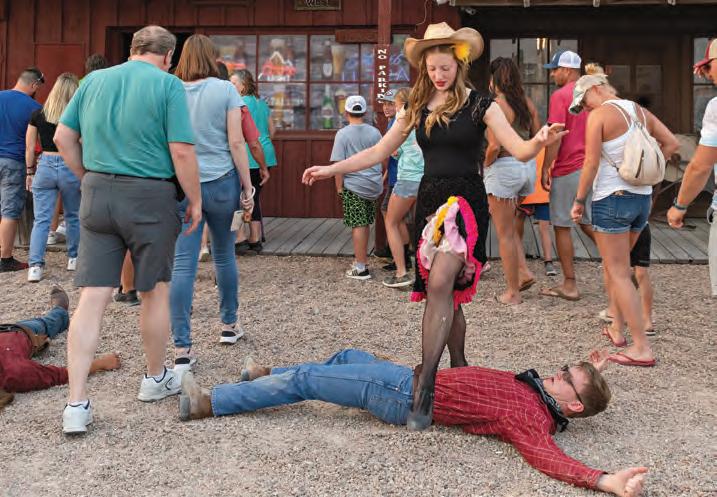
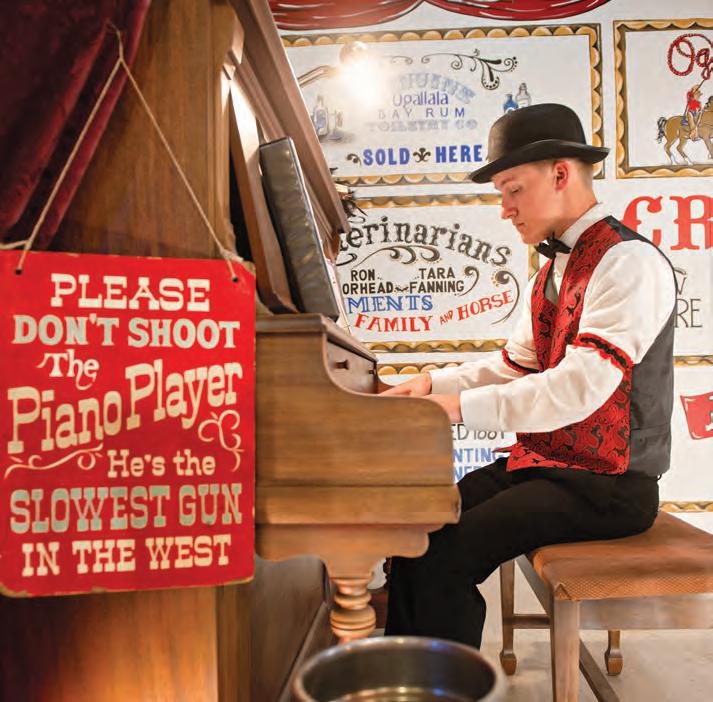
People have told Orth that she is less reserved than when she began acting in the production in 2018. The Ogallala Senior High School graduate feeds off the crowd’s energy, and it’s a great conversation starter in real life “to tell people that I work as a showgirl each summer.”
Another saloon girl, this one with the Ace of Hearts visible in her garter, pops on stage and asks the crowd where they are from. Audience members yell out South Dakota, Nevada, Virginia and Washington. Fans from all 50 states and about 30 countries attend throughout a typical mid-May to early-August theater season. This night’s crowd, like many, are mostly Lake McConaughy visitors from Colorado.
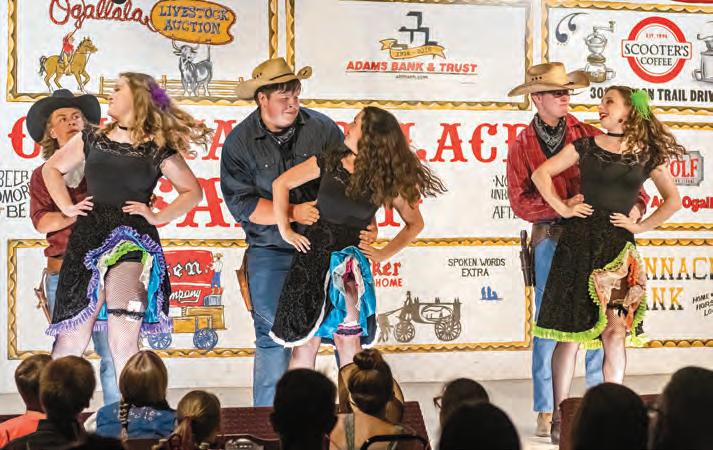
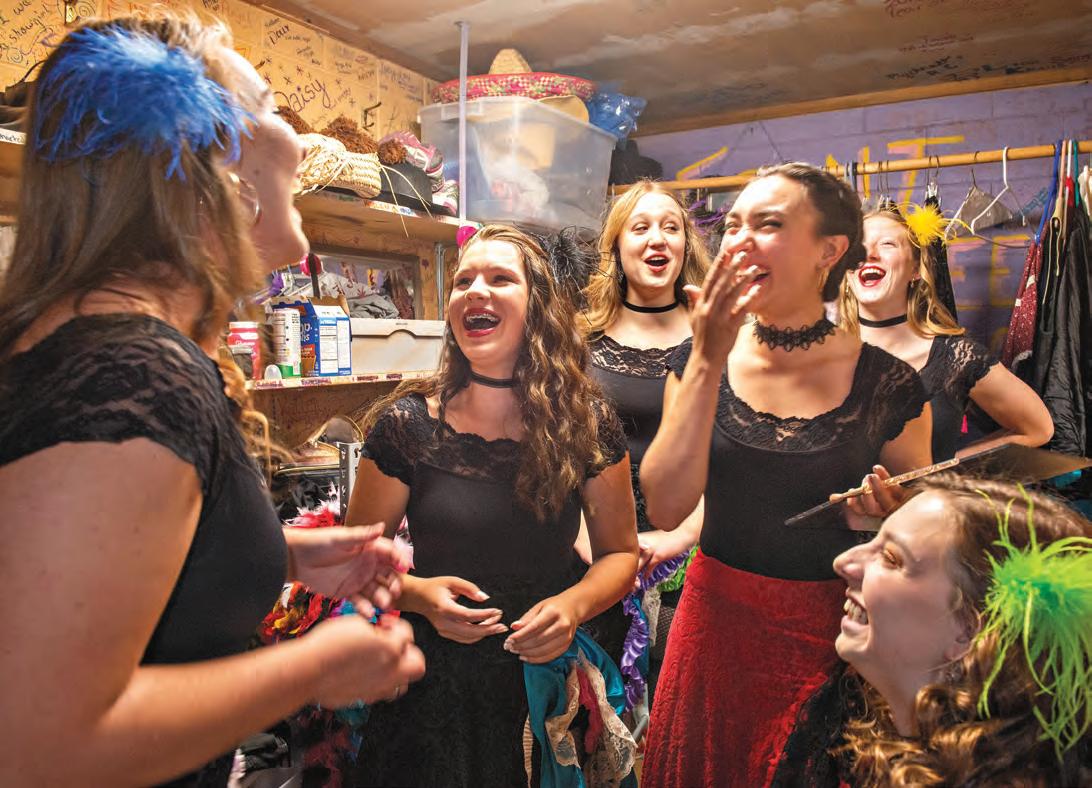
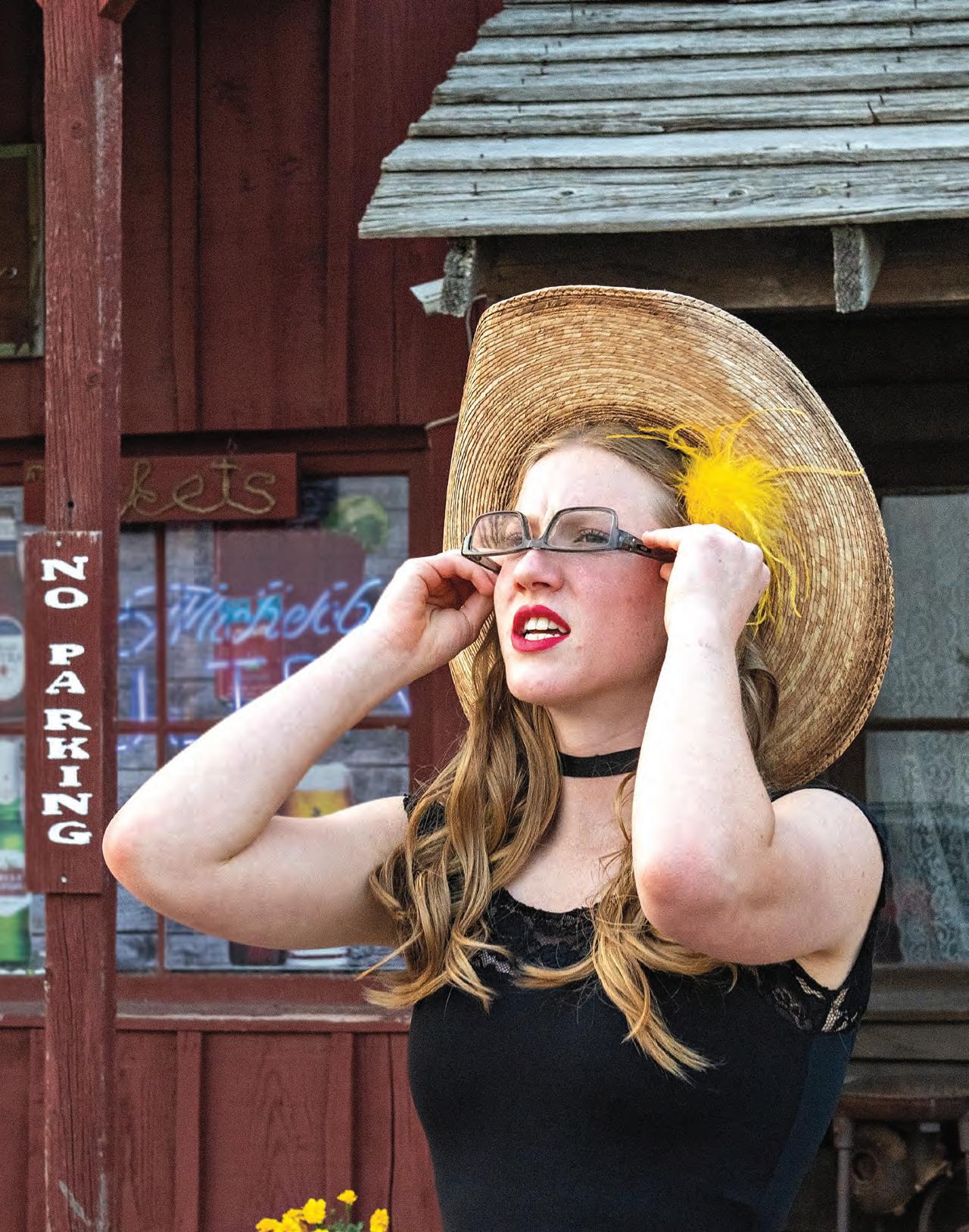
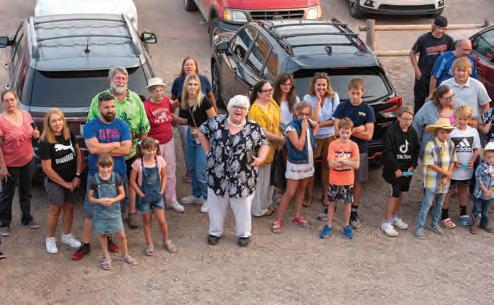
A summer crowd watches as the cowboys square off against one another in a street fight. The Front Street cowboy sign gratefully greets another sunset unscathed.
Three past cast members have gone on to become Miss Nebraska. Another actor, Joshua Cody, is royalty here. He went on to star in the Netflix original film Santa Girl.
“When I stand back and watch the show and see all the people laughing, I’m proud that there is nothing else like this and that it happens right here,” said bartender Robin Butrick. “Our kids do amazing acting while representing Ogallala and Western Nebraska.”
The musical skits roll from the Oregon Trail days to the Pony Express, to Nebraska Territory and statehood, to the birth and death of the Texas Trail. The final number tells of the incorporation of Ogallala in 1884, followed by the cast’s rendition of “Welcome to the Good Life, Nebraska.”
In many ways, when a local gambler murdered a rival in the original Crystal Palace in 1884, it marked the end of the trail for Ogallala’s Wild West days. But in Ogallala, the summer show must go on. Cue the gunfighters!
The Front Street Steakhouse & Crystal Palace Saloon is at 519 E. First St. in Ogallala. Tickets to the Crystal Palace Revue sell out faster than the speediest quick-draw cowboy. Call (308) 284-6000 for reservations.
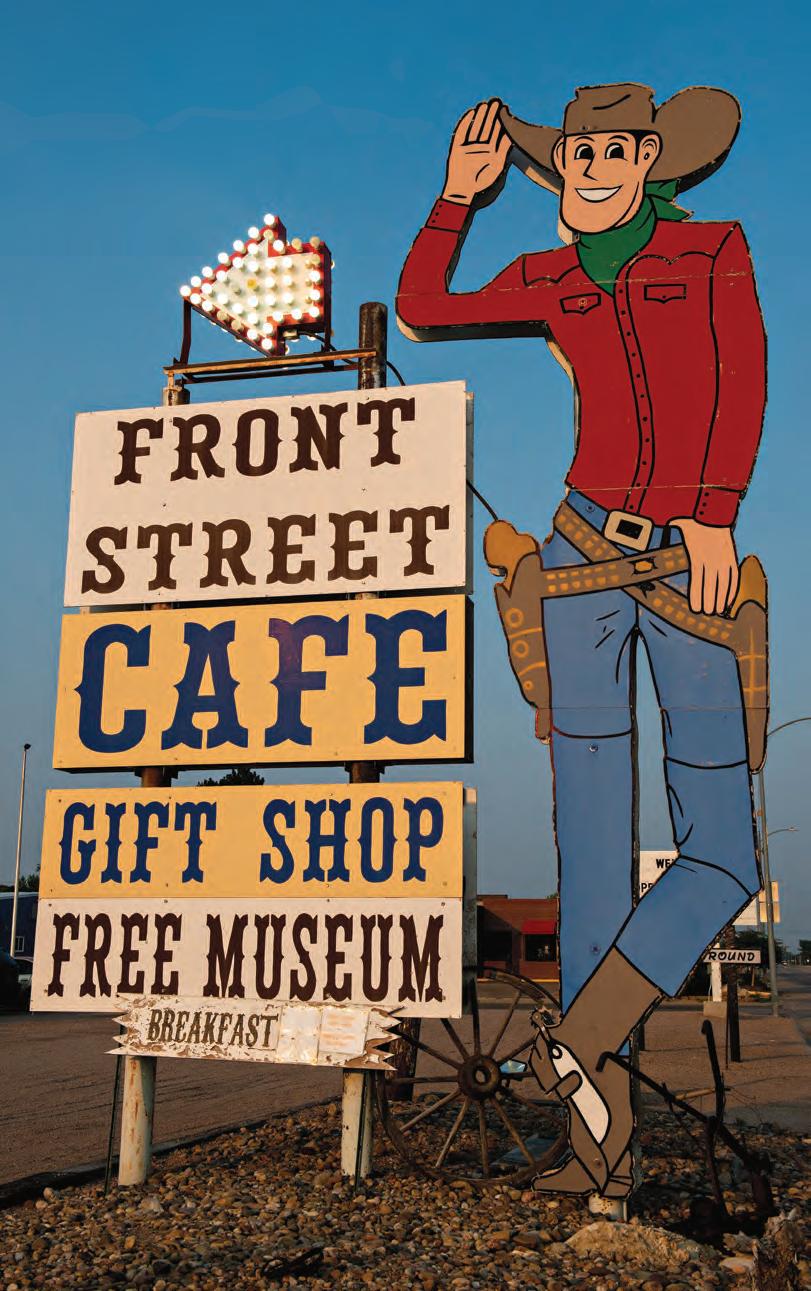
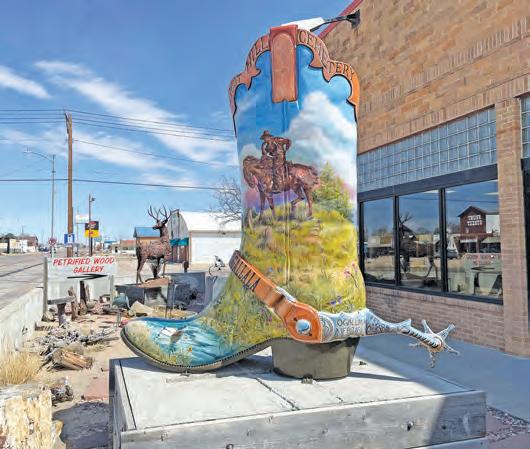
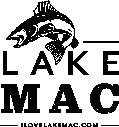
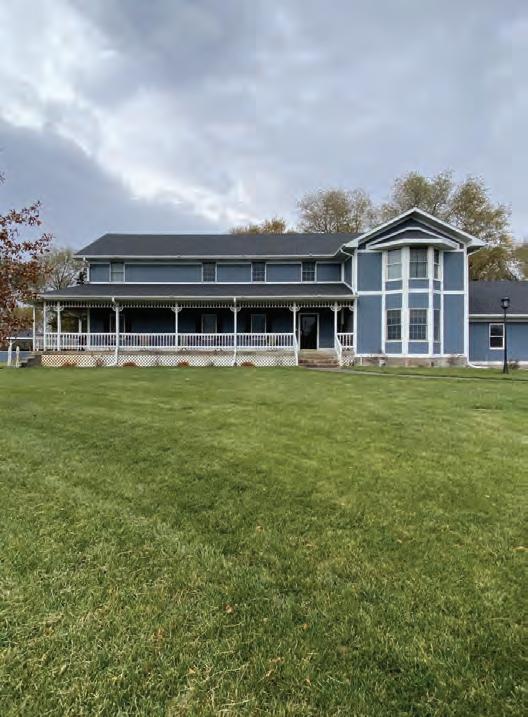
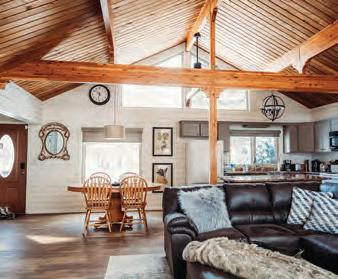








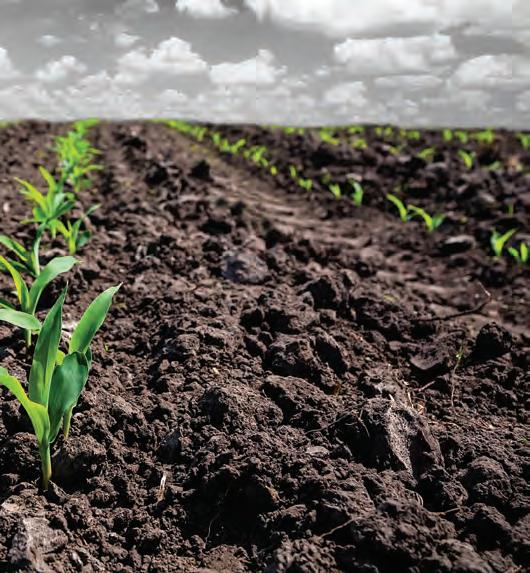

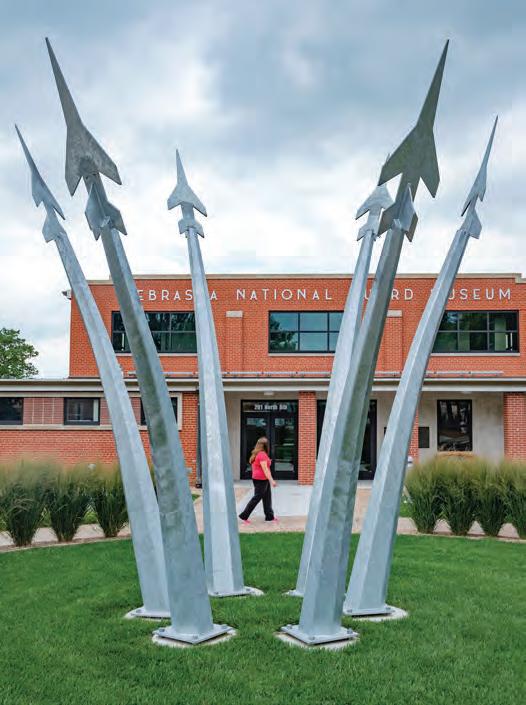
Travelers will be flying sky-high when they visit Nebraska Passport stops, like the Nebraska National Guard Museum in Seward.

ANIMAL MAGNETISM
BURWELL
Calamus Reservoir State
Recreation Area
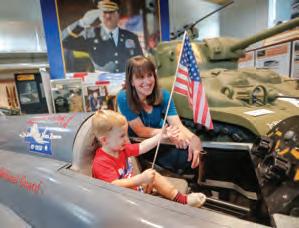
42285 York Point Rd. (308) 346-5666
DENTON
Spring Creek Prairie Audubon Center 11700 SW 100th St. (402) 797-2301
LEWELLEN
Ash Hollow State Historical Park
4265 U.S. Highway 26 (308) 778-5651
TAYLOR
Harrop Sandhills Park North of Taylor on U.S. Highway 183
VALENTINE
Merritt Reservoir State Recreation Area
88337 Nebraska Highway 97 (402) 376-3320
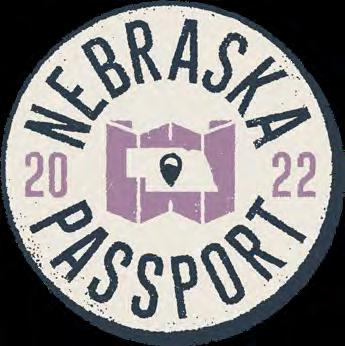
ENJOY NEBRASKA ONE stop at a time at these statewide attractions. To get your passport, visit nebraskapassport.com/request.
Themed Tours:





Buy Ways Caf-fiendishly Good
Chow, Baby
Do-It-Yourselfie
Niobrara National Scenic River 214 W. U.S. Highway 20 (402) 376-1901
WOOD RIVER
Crane Trust 9325 S. Alda Rd. (308) 382-1820

HASTINGS
Seasons Downtown 117 N. Lincoln Ave. (402) 834-3875
Small Town Famous
733 W. 2nd St. (402) 705-8535
OMAHA
Four Sisters Boutique
2900 S. 110th Ct. (402) 884-6399
RED CLOUD
The Corner Nook 345 N. Webster St. (402) 224-0437

Family Fun

Farm to Fork

Hometown History

Sewing, and So On

Thirst-Place Winners
SPALDING
Petal & Stem –
A Floral & Garden Boutique 141 E. St. Joseph St. (308) 497-2292
SPENCER
63 County Store 203 S. Thayer St. (402) 589-1111
UTICA
Old Cottonwood Antique Store
400 1st St. (402) 630-6718

CAF-FIENDISHLY GOOD
GRAND ISLAND
Zabuni Specialty Coffee Auction 220 N. Walnut St. (308) 318-5036
KIMBALL
Nebraska Coffee
103 S. Chestnut St. (308) 241-0050
MITCHELL
I&L Coffee Roasters
1456 Center Ave. (308) 672-2483
OSCEOLA
Gathering Grounds Coffee House
411 Hawkeye St. (402) 366-949
SARGENT
Ollie’s Coffee and Boutique
322 W. Main St. (308) 215-0604
TEKAMAH
Master’s Hand 3599 County Road F (402) 374-2003
WAYNE
The Table Coffeehouse
203 Main St. (402) 369-3479

AMHERST
Stockmen’s Bar and Grill
114 N. Main St. (308) 826-3211
COLERIDGE
Rodeo’s Bar and Grill
115 W. Broadway St. (402) 283-4297
GRAND ISLAND
Coney Island Lunch Room
104 E. 3rd St. (308) 382-7155
MITCHELL
Marketplace & Company
- Pesto Fine Italian 1344 Center Ave. (308) 424-1055
NORFOLK
Michael’s Cantina 912 W. Omaha Ave. (402)-371-6707
NORTH PLATTE
The Espresso Shop by Caravan 408 N. Chestnut St. (308) 534-9550
OMAHA
Benson Brewery 6059 Maple St. (402) 934-8668

ALBION
Valley View Flowers 2671 NE-Highway 91 (402) 741-0634
ALLIANCE
Carhenge 2151 Country Rd. 59 (308) 762-3569
BIG SPRINGS
Our Lavender Co. 20380 Rd. 4 (507) 298-1812
KEARNEY
Rooted Plant Co. 203 E. 25th St. (308) 251-6179
LINCOLN
Robber’s Cave Tours 925 Robbers Cave Rd. (402) 975-0598
NEBRASKA CITY
Kimmel Orchard & Vineyard 5995 G Rd. (402) 873-5293
OMAHA
Lewis and Clark National Historic Trail
Headquarters and Visitor Center 601 Riverfront Dr. (402) 661-1804

BEATRICE
Traubel’s Popcorn Stand 101 N. 5th St. (402) 770-7483
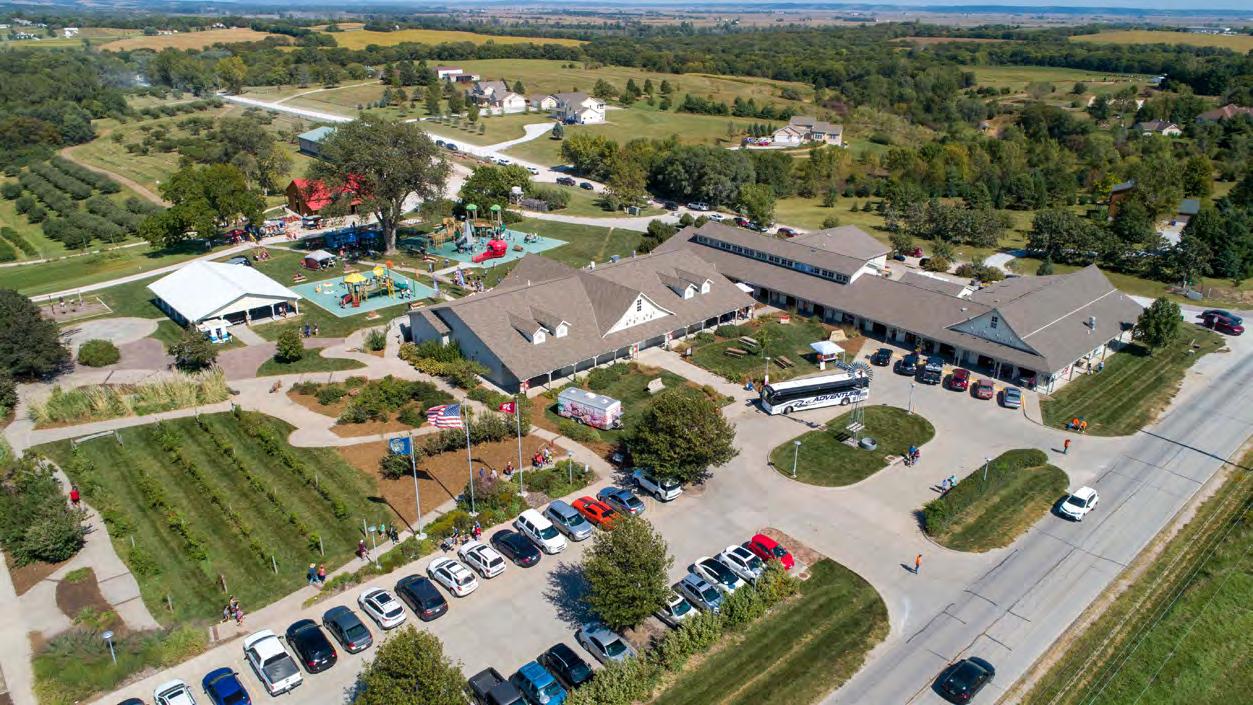
LINCOLN
Adventure Golf Center 5901 S. 56 St. (402) 421-2254

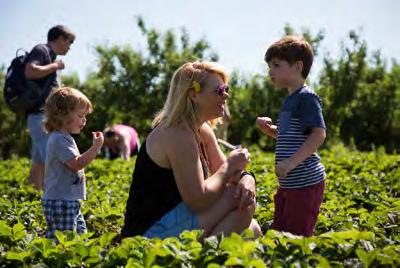

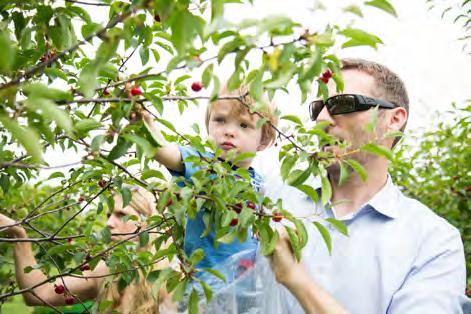
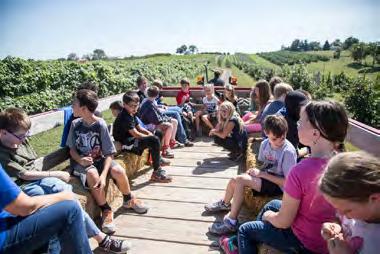

NORTH PLATTE
The Vault Escape Games of Nebraska
418 N. Dewey St. (308) 221-6059
SCOTTSBLUFF
Scottsbluff YMCA Trails West
1918 S. Beltline Highway W (308) 635-2318
ST. PAUL
Sweet Shoppe Cafe and Bakery 605 Howard Ave. (308) 754-4900
SUTHERLAND
Big Eye Spinnerbaits, LLC 810 1st St. (308) 386-2177
WATERLOO
Two Rivers State Recreation Area
27702 F. St. (402) 359-5165

FARM TO FORK
ARAPAHOE
Long Dogs Distilling
313 Chestnut St. (308) 655-1646
BRIDGEPORT
385 Meat Market
912 Main St. (308) 262-7385
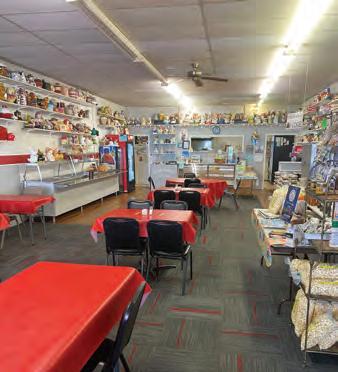
HAY SPRINGS
Farm to Family Cooperative
127 N. Main St. (308) 638-4649
LINCOLN
The Hub Cafe
250 N. 21st St. (402) 474-2453
VALENTINE
Old Mill Bulk Foods
704 E. C St. (402) 376-8034
WATERLOO
Ellsworth Crossing Farm to Fork Market
26902 W. Center Rd. (402) 359-8747
YORK
McLean Beef
3208 S. Lincoln Ave. (402) 362-0055

BRIDGEPORT
Pioneer Trails Museum
U.S. Highways 26 & 385 (308) 262-1623
CHADRON
Dawes County Historical Museum
341 Country Club Rd. (308) 432-4999
NEBRASKA CITY
Nebraska City Museum of Firefighting and Education Center
1320 Central Ave. (402) 873-3579
OMAHA
Great Plains Black History Museum
2221 N. 24th St. (402) 932-7077
SEWARD
Nebraska National Guard Museum
201 N. 8th St. (402) 309-8763
TECUMSEH
Johnson County Museum
289 Clay St. (402) 853 3614
WINNEBAGO
The Angel De Cora Museum and Research Center
415 E. Little Priest Dr. (402) 922-2631

FREMONT

Nebraska Quilt Company
330 N. Main St. (402) 721-7752



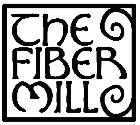
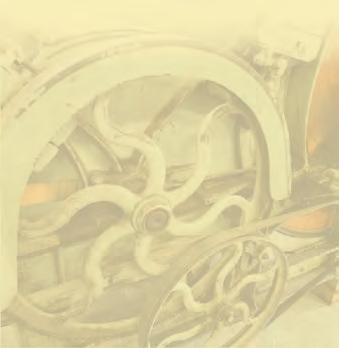
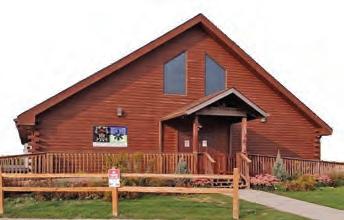


LINCOLN
LUX Center for the Arts
2601 N. 48th St. (402) 466-8692
Paint Yourself Silly
1501 Pine Lake Rd. Ste. 24, (402) 486-1010
McCOOK
Sew Blessed
402 Norris Ave. Ste. 103, (308) 344-9389
NEWMAN GROVE
Betz’s Little Shoppe 505 Hale Ave. (402) 447-6048
NORTH PLATTE
The Quilt Rack & Wool Cubby 101 W. Front St. (308) 532-2606
STROMSBURG
The Fiber Mill
214 E. 3rd St. (402) 405-1971

THIRST-PLACE WINNERS
BRADY
Old Depot Vineyard & Winery 33651 E. Banner Rd. (308) 584-2251
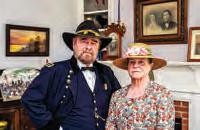

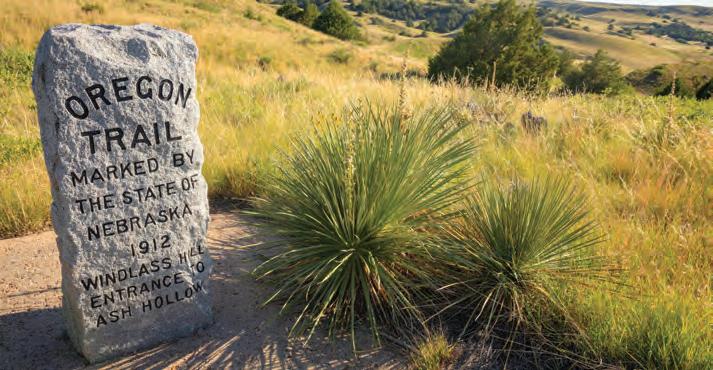
BROWNVILLE
Whiskey Run Creek Winery & Distillery
702 Main St. (402) 825-4601
FREMONT
Five.0.Five Brewing Company 349 N. Main St. (402) 704-2477
KEARNEY
McCue’s Nebraska Taproom 2008 Ave. A (308) 708-7750
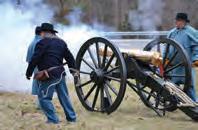
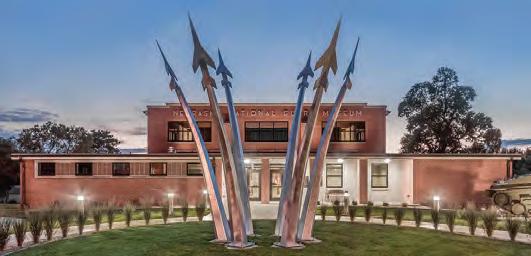

McCOOK
Loop Brewing Company
404 W. A St. (308) 345-5198
OHIOWA
Lazy Horse Brewing & Winery 211 Rd. 20 (402) 295-2550
SCOTTSBLUFF
Papa Moon Vineyards, Winery & Cider House 230975 County Rd. J (970) 281-7551
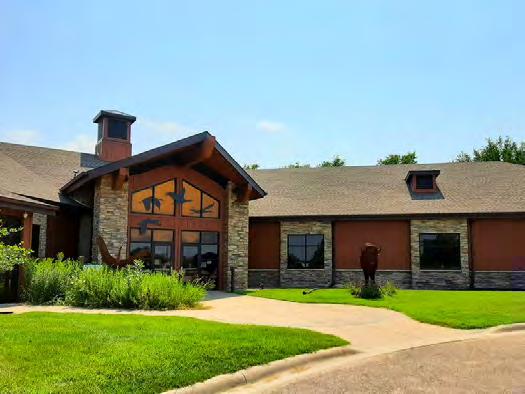


Discover the Crane Trust Nature & Visitor Center just off of I-80 at Exit 305. View native wildlife exhibits, bison diorama, interactive flyway map, and educational videos. View beautiful artwork and photographs by local artists and check out our gift shop which has a variety of items for all nature lovers. Items include books, cards, toys, jewelry, apparel and more!
Venture outside to see our butterfly garden and herd of American bison along the path to a 35-foot observation tower. Two footbridges take you across the north channel of the Platte River to roughly 10 miles of tallgrass prairie nature trails.
(308) 382-1820
S Alda Rd • Wood River, NE
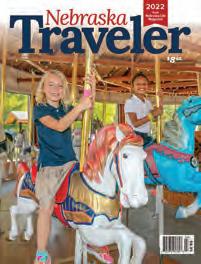
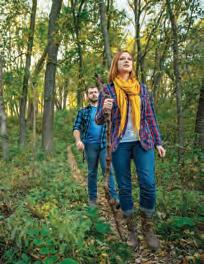

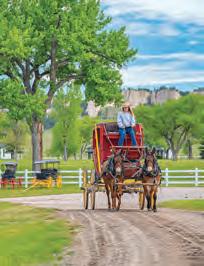

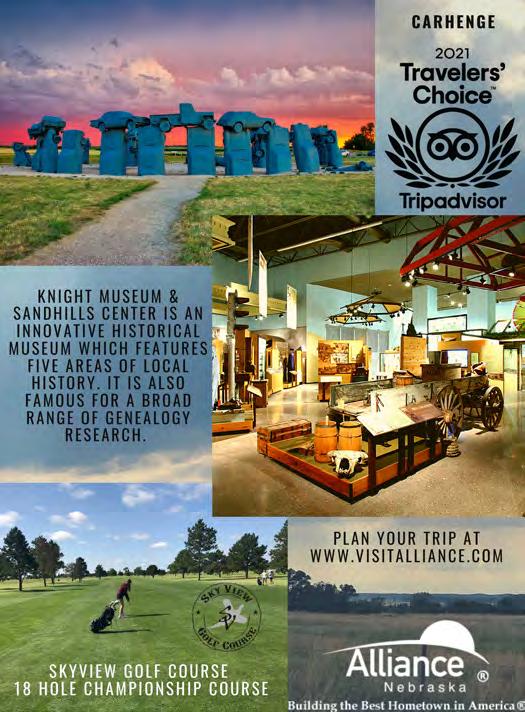
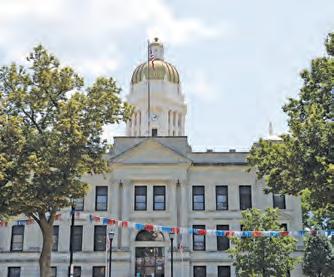
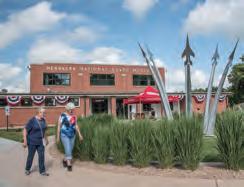
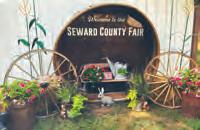
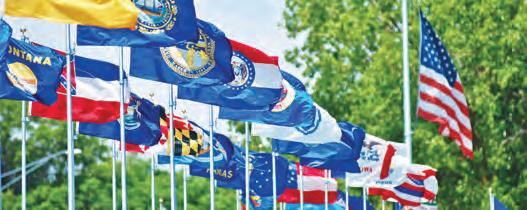






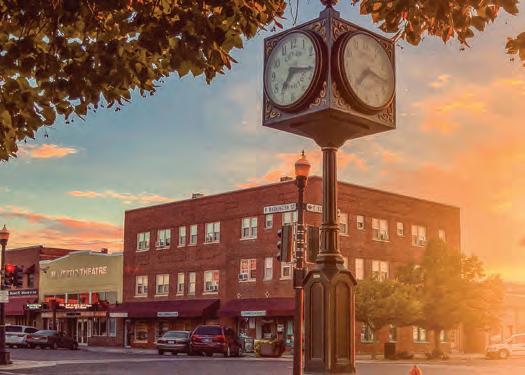





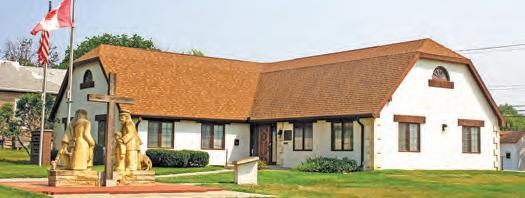
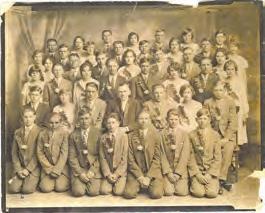

by MEGAN FEENEY
JULY 2-4 • CRAWFORD
This summer, visitors to the Historic Veterinary Hospital at Fort Robinson State Park encounter majestic equines in the old horse stalls and veterinary operating room. But as real as these specimens seem, they aren’t warm-blooded beasts. Horses are a popular subject among the artists who set up their works in horse stalls for the Western Wildlife Art Show in Crawford. The free art show July 2-4 attracts up to 3,000 visitors annually. Painters, fabric artists, sculptors, and basket weavers attend, and many also create onsite – blowing glass or painting Western landscapes on canvas.
The show also gives visitors a glimpse at Nebraska history. Horses were once essential to Northwest Nebraska’s economic and military strength. From 1919
to 1945, Fort Robinson served as a significant quartermaster U.S. Army remount station. Horses were in high demand following World War I. Fort Robinson had 23,000 acres for pasture, and the Chicago and North Western Railroad could also receive and deliver animals.
The brick veterinary hospital that now houses the art show once accommodated 44 equine patients and had an internal drive wide enough for a horse ambulance.
A retired general was the first to suggest the old veterinary hospital as the location for the art show in the 1970s. He thought an art show would be a way to honor and remember the thousands of horses that had once passed through. Fortunately, no one said “neigh” to the idea. westernwildlifeartshow.org, (308) 432-5215
Wild horses couldn’t drag them away from browsing the selection of prints, paintings and posters at this show.
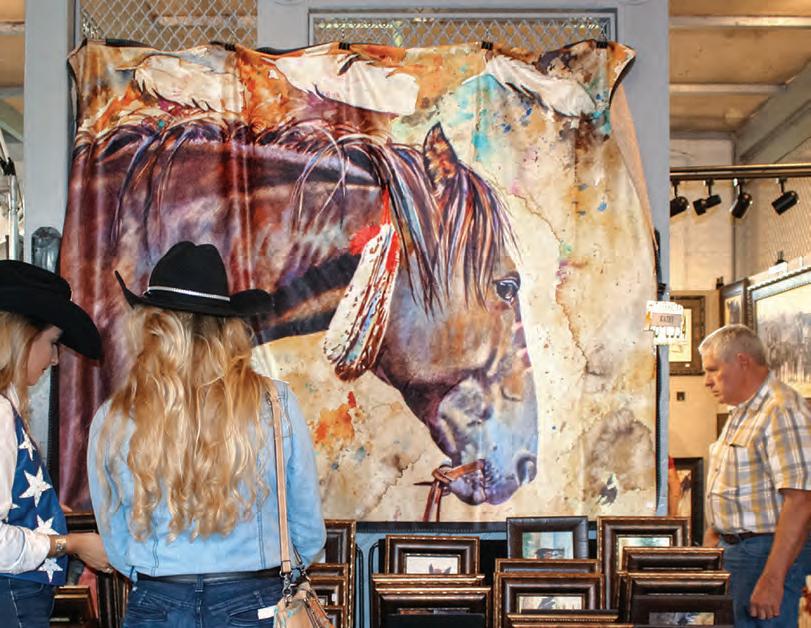

This seasonal grab-and-go joint serves fresh-never-frozen marinated and breaded pressure-fried chicken and homemade ice cream with a side of humor. Their ever-changing sign features jokes that will be excellent souvenirs to take home and impress all your kids’ friends with. 112 McPherson St. (308) 665-1210

FORT ROBINSON STATE PARK HISTORIC LODGING Guests sleep in buildings that once housed soldiers or officers. Careful not to overdo it with the ghost stories. This place has history. Extended families can book Comanche Hall, which sleeps 60 people. A historic lodge also offers 22 rooms. 3 Milo Rd. (308) 665-2900

Located in the Oglala National Grassland, Toadstool Geological Park is a wondrously weird landscape of unusual rock formations. It’s an adventurous drive to get there. From Crawford, drive 4 miles north on Nebraska Highways 2 and 71; northwest on Toadstool Rd. and go 10 miles. Turn left at sign to the park entrance. (308) 432-0300
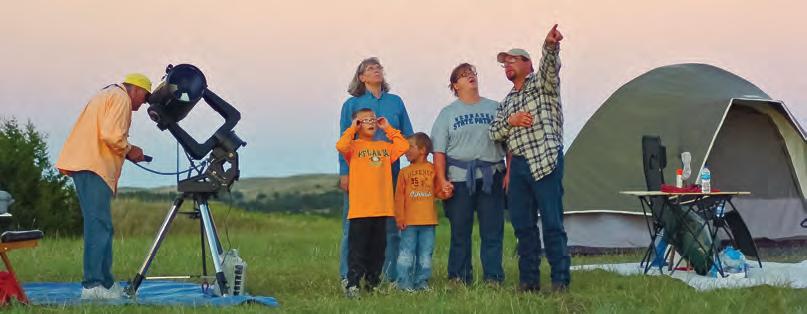
JULY 24-29 • MERRITT RESERVOIR
John Johnson grew up on a farm south of Brady during the space race. Staring up at the Nebraska night sky twinkling with stars, he imagined himself walking on the moon. He later became an engineer and a Navy Captain, not an astronaut, but space continued to fascinate him.
“It’s part of our human psyche to gaze out at the night sky,” Johnson said.
Stars have inspired ancient myths and romantic ballads and connected people throughout history. And this year, once again, they’ll bring Johnson and other stargazers together at the 29th annual Nebraska Star Party from July 24 to 29 at Merritt Reservoir southwest of Valentine.
As many as 400 people gather with their telescopes and binoculars, which they often share. The remote location is ideal for its dark skies. Johnson said that many people don’t know the Milky Way casts a shadow until they stand in those sandhills and witness it. Since the event began in 1994, he has attended all but three parties. Thrills still abound. One year there was a comet “close enough to the North Pole to see it all night as the earth rotated.”
It’s also exciting to see families witness Nebraska’s dark skies for the first time –and there are plenty of daytime activities, too. Beginners Field School provides twohour classes on the fundamentals of observing nighttime skies. Organizers also set up canoe or float trips on the Niobrara River. Rustic camping is available onsite, and people gather for communal suppers in the evenings. Every night, as the sun sets over the horizon of the Merritt Reser-
voir, the main event begins. Johnson will be there with all his childhood wonder. nebraskastarparty.org, (402) 333-5460

For six generations, the Joseph family has resided in the Sandhills. For three generations, they’ve served delicious Nebraska beef. Steaks served medium rare or below are their specialty. Nebraska beef, it’s what’s for dinner.
502 U.S. Highway 20, Valentine (402) 376-2800.

MERRITT
Pet-friendly cabins with all the comforts of home make for an excellent stay for everyone in the family, Fido included. A grill and picnic table are convenient for casual meal preparation and dining. 88337 Nebraska Highway 97, Valentine (402) 376-3437

Books, toys, games, educational supplies, and gifts are on offer at this more than 100-year-old building that was once a pharmacy. Nature lovers in need of a break are in luck. The bookstore offers cool air conditioning and delicious iced teas. Don’t mind the construction. They’re open. 269 North Main St., Valentine (402) 376-1424
Flea Market
July 2-4 • Fairbury
Since 1972, treasure hunters have scoured the tables at the Fairbury Flea Market in search of antiques, plants, homespun items, tools, art, furniture and more in the lovely –and shaded! – city park. There is a morning parade on the 4th of July. An evening fireworks display ends the festivities on a celebratory note –even if shoppers didn’t find the action figures or dishware they were looking for. fairburyfleamarket.com
Beginning July 7 • Omaha
Central Omaha’s Turner Park welcomes back jazz fans, friends and families to its free Thursday night performances through August 11. Organizers from Omaha Performing Arts encourage attendees to spread a blanket and unpack an evening picnic – maybe even uncork a wine bottle. As dusk falls, the cool tunes chill everyone out. o-pa.org/jazz-on-the-green
Oregon Trail Days
July 7-11 • Gering
A barbecue and street dance kicks off the 101st celebration in Gering on Thursday night. A kiddie parade features whimsical kids’ floats on Friday. On Saturday, the main parade hosts emergency response vehicles, tractors, stagecoaches and horseback riders and floats by local businesses and churches. Festival events also include an uphill bike ride, mud volleyball, a craft fair and a chili cook-off. oregontraildays.com
July 8-10 • Wayne
Visitors walk the walk and bok the bok in a National Cluck-off at the Wayne Chicken Show. Sidewalk drawings, a parade, food and beverage offerings and what’s billed (sorry) as the world’s largest chicken dance are also attractions worth crowing about. chickenshow.com

Hands-on exhibits introduce visitors to the history of firefighting in Nebraska City.
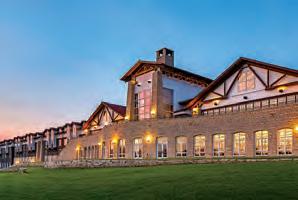
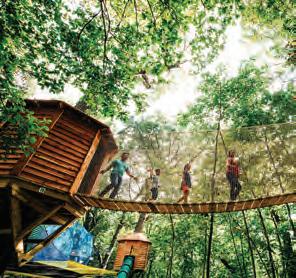
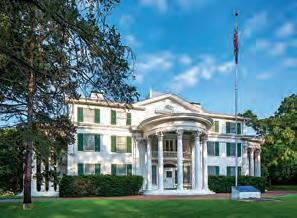
A crack of an explosion shook the countryside, followed by thick black smoke that clouded the air. A shattered, burnt mask in the Nebraska City Museum of Firefighting bears testament to the 2002 EnTire Recycling Fire, one of the worst recent fires in Otoe County.
When Jeff Lollmann, a third-generation volunteer firefighter, faces fire, he doesn’t think about the danger. “You have a job to do,” he said. Protective equipment inhabits one modest corner of the museum – and an even smaller space in firefighting history.
From worn leather buckets to glossy,


scarlet trucks, the Nebraska City collection documents the history of the state’s oldest fire department. As a bustling gateway to the West, Nebraska City once boasted three departments of volunteer firefighters. Lollmann and other volunteers compiled the departments’ detailed records and artifacts to tell the story of Nebraska City’s relentless battle against fire.
The museum, located at 1320 Central Ave., is a 2022 Nebraska Passport stop. It displays a collection of firefighting innovations, including baseball-sized glass orbs filled with toxic chemicals firefighters hurled at blazes in the early 1900s. Every-
It’s a magical time to visit Arbor Day Farm as we celebrate our rich history of tree planting. Join us for one-of-a-kind activities that take you high into the trees, along wooded trails, into a historic mansion, and under the soaring timbers of Lied Lodge.
Your getaway awaits; find it at arbordayfarm.org
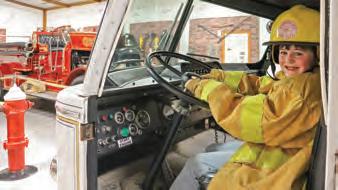
thing in the privately funded museum is still operational, even the handpump from 1861 and the behemoth of a steam engine from 1884. Hands-on exhibits provide a window into the experience of a firefighter and an opportunity to educate the public.
The easiest way to stop a fire, said Lollmann, is to prevent one. However, in the event of a fire, volunteers in Nebraska City stand ready as they have since 1856.
Thirteen Nebraska City volunteer firefighters sustained injuries in the EnTire Fire. Thanks to Nebraska City’s Museum of Firefighting, their courage – and their predecessors’ valor – will not be forgotten.
– Mason Lee

Travel with you in mind
Get refreshed and refueled in Sidney/Cheyenne County, Nebraska. We offer every comfort a road-tripper needs right off Interstate 80, including restaurants, hotels, gas stations, convenience stores and more. Escape the long stretch of road with us.

At this cheery local favorite, a husband and wife team whips up an assortment of tacos, tortas and tamales, and thirst-quenching aguas frescas. Patrons tuck into generous servings at picnic tables. 318 S. 11th St.

Whispering Pines serves cookies in the parlor and has a shady porch for lounging. Innkeeper Jeanna Stavas is a resource for local fun. 2018 6th Ave. (402) 873-5850

Digital taphouse lets guests swipe and pour beers directly from taps featuring Nebraska brews. They offer nonalcoholic beverages, pizzas and sandwiches, too. 707 Central Ave. (402) 713-5069
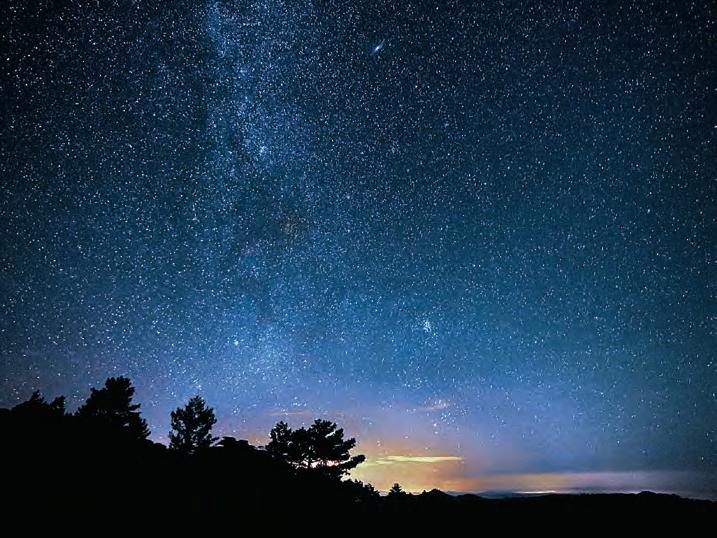




Cornhusker State Games
July 15-24 • Various
Sports competition is for everyone –the elderly, the young, the elite and those with special needs – at this summer event, featuring competitions in swimming and shooting, wheelchair tennis and wrestling, football and fencing. Events are held in Lincoln, Omaha, Kearney, Columbus and surrounding communities. cornhuskerstategames.com
Memorial Park Concert
July 22 • Omaha
This celebration of America – and one of Omaha’s most beloved events – sees families and friends spread their picnic blankets and unfold their lawn chairs on the expansive green lawn of Memorial Park for another year of music and fireworks. This year’s headliner is Sheryl Crow. memorialparkconcert.com


Omaha’s famous music festival returns to Stinson Park with righteous national acts and local faves.
Beach balls sail through the air as musicians jam on one of two stages at Omaha’s Stinson Park at Aksarben Village. Nearby under a separate tent, glow-stick-waving headphone wearers dance to a DJ’s beat at a “silent disco.”
Since 2009, the nonprofit Maha Festival has attracted a diverse crowd of fans to enjoy local and national musical acts, Nebraska-flavored food and beverages, and pop-up comedy and art performances. The two-day festival, held every summer, is on July 29 and 30 this year and once more in Stinson Park in Aksarben Village at 67th Street and Center Street. General
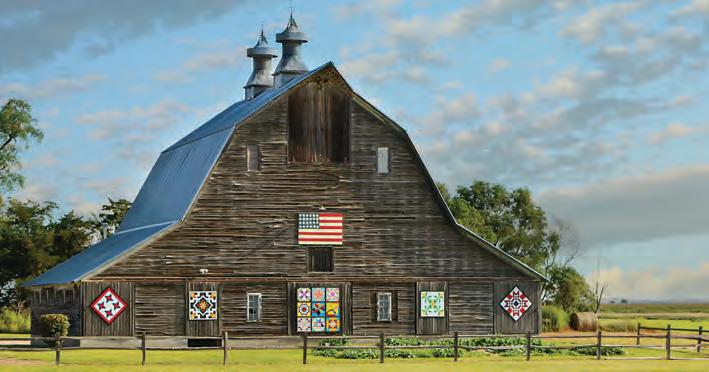
Delight in small town shopping, savor the flavors of dining, hunt for barn quilts, and tour our museums and outdoor art. Cozad’s outdoor art projects celebrate our art heritage while making art accessible at all times of the day.
• Barn Quilts of Dawson County Trail • 50 States Barn Quilt Display • Wilson Public Library sculpture garden Rhakenna’s Wings
• “Cozad Creates” paint palette icons • For more information and maps, visit barnquiltsdc.com Also visit roberthenrimuseum.org and cozadhistory.org
admission tickets are $35-85, and children under 10 get in free with one ticketed adult.
Friends play bags on a green lawn, sip local brews, and nosh on delicacies. Food trucks line up for several blocks and include local favorites like Via Farina and Javi’s Tacos. Kids run wildly through the crowd chasing soap bubbles – their admission is free with an adult’s ticket. A cohort of silver-haired grandmas demonstrates that you can keep hula-hooping well into your 70s.
Many visitors dress in their most fabulous festival gear, with wigs, makeup and
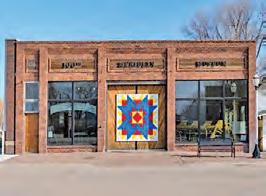
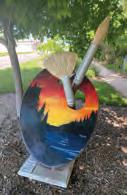
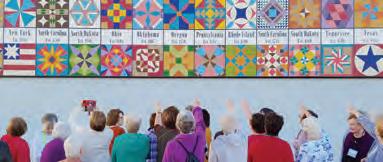
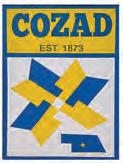

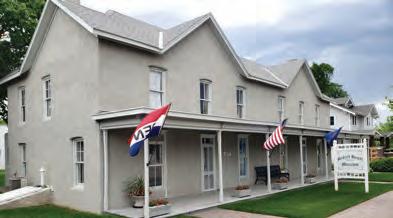
sequins and dance all day into the night when they break out the glow sticks. Others show up in cargo shorts and t-shirts with their lawn chairs and take a more laidback approach to the weekend’s activities. Spreading out to hit the food trucks and bringing back a sampling of items to share seems like a popular picnic plan.
Omaha has always been a music town. Once home to a thriving jazz and blues scene, Omaha now produces hip hop and indie rock. Those acts are well represented again this year.
Omaha performers, including R&B artist Dominique Morgan, rapper Marcey Yates, the punk psychedelic pop group Las Cruxes and the indie rock quartet Bad Self Portraits will represent Nebraska’s homegrown music at the festival alongside the nationally touring acts.
Like years past, festivalgoers will show equal love to the local talent. The lights will illuminate their rapturous faces. And the beach balls will once again sail in the sky as the bass rattles the park’s green earth. mahafestival.com
Art in the Park
Aug. 7 • Hastings Nebraska artisans showcase and sell their finest works. Food trucks offer delicious treats. Musicians and entertainers energize the crowds with song and laughter. Kids run around the park and make new friends while their parents enjoy the shade on a blanket. Summer doesn’t get much sweeter than this. 10 a.m.- 4 p.m. (402) 461-2370
Ponca Powwow
Aug. 12-14 • Niobrara
Ponca powwows traditionally celebrated successes or changing seasons of life and offered families an opportunity to reunite on ancestral homelands. Today Ponca invite all Nebraskans to celebrate their culture with them at the powwow – to appreciate dancers and drummers, eat delicious food and participate in a fun run or a horseshoe throwing contest. poncatribe-ne.org
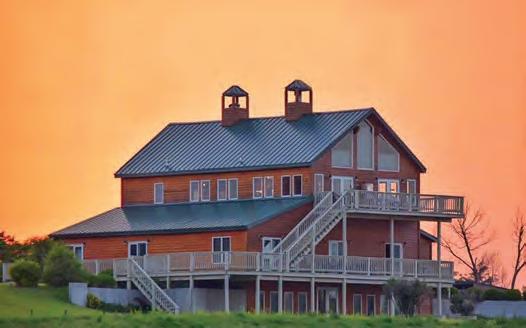
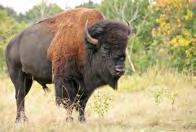

•
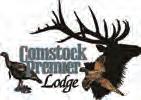
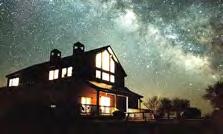
• Close
•
Old West Balloon Fest
Aug. 10-13 • Scotts Bluff County
Beginning with the opening night glow at Western Nebraska Community College, this uplifting event paints the skies over Scotts Bluff County with colorful balloon racers with derring-do. Other fun events and activities ground the experience – like a cornhole tournament and a craft fair. theoldwestballoonfest.com
Nebraska State Fair
Aug. 26-Sept. 5 • Grand Island
Fonner Park pulses with energy as Nebraskans gather to celebrate their traditions and showcase their products and talent. Lovely lambs, crazy quilts and mind-boggling bread all compete for ribbons. Kiddos clamor for funnel cakes and buttery corn on the cob. Bands – including Lady A and Los Tucanes De Tijuana – rock the main stage. statefair.org









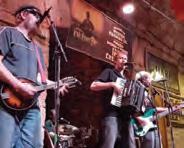






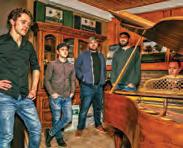




Living History Timeline
August 27- 28 • Plattsmouth
Actors bring Nebraska history to life with reenactments of the Lewis and Clark Expedition, U.S. Army-Fort Atkinson mountain men, the Oregon Trail and the Civil War era. Families are welcome to explore their state’s past and the colorful characters who populate its history books at the Rockhill Windmill Event Center. (402) 296-4770
Summerfest
Aug. 30 • Kearney
The Archway, spanning I-80 at Exit 275 in Kearney, was built in tribute to the adventurers who traveled the Great Platte River Road and helped build America. This August, it celebrates an epic family-friendly party with a trackless train ride, bungee trampoline, bounce house, food trucks and more. Group tickets of 2-4 people for $25. archway.org/event


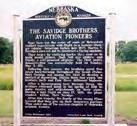
Questions on p 22-23
1 Beaver burrows
2 Clash of the Mammoths
3 Columbian mammoth and Woolly mammoth
4 Yellowstone
5 A shallow sea called the Western Interior Seaway
6 False. All 93 counties.
7 True.
8 True.
9 False. The rock formations resemble toadstools.
10 True.
11 a. Hastings Museum
12 b. Sabertoothed cat
13 b. Hostile or dreadful tooth
14 c. Archie
15 a. Large lower tusks
Trivia Photographs
Page 22 Ashfall Fossil Beds in Royal has yielded rich paleontological finds.
Page 22 A Tylosaurus swims up the wall at the Hastings Museum.
Page 23 Paleontologist Erwin H. Barbour poses with different fossil specimens.
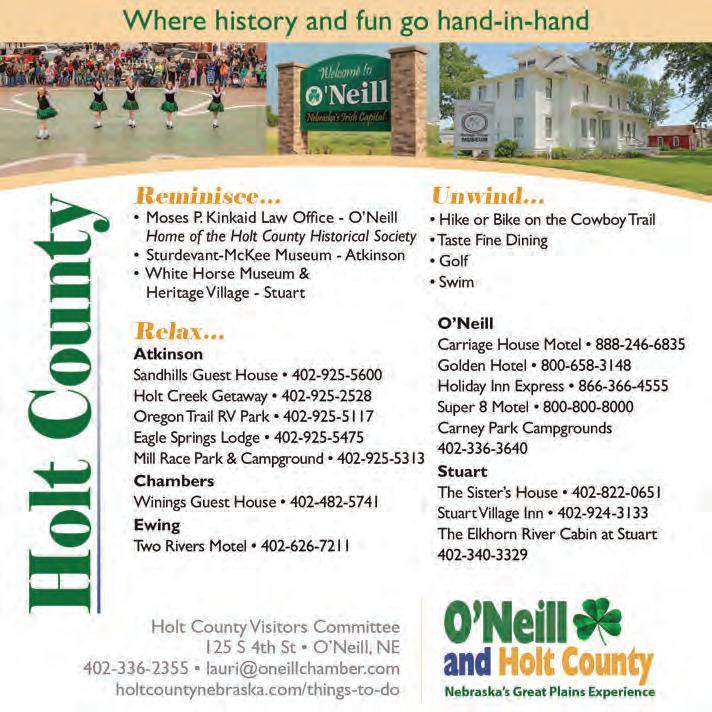
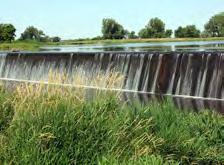

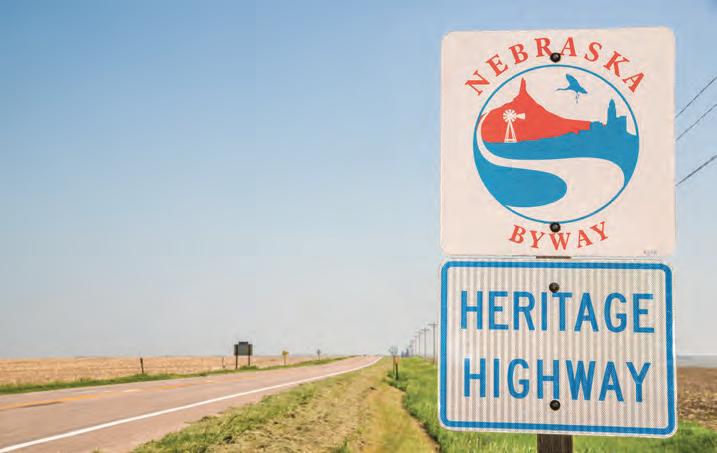
Sept. 30, Oct. 1–2, 2022 Explore shops, garage and yard sales, antiques and more along the 17-county path spanning Nebraska’s Heritage Highway and corridor counties. Goes from Missouri to Colorado, clear across the bottom of Nebraska. Go to www.heritagehighway136.com to download the Shopping Guide.



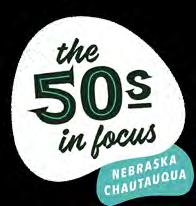



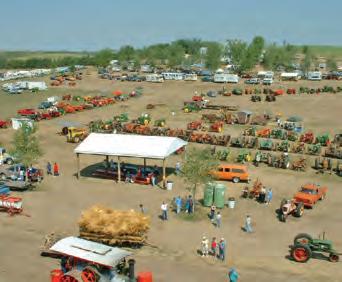
AUG. 26–28, 2022 Petersburg, NE

Welcome International IHC Collectors and the Nebraska Chapter 12!

Cultivate excitement at this admissionfree event. Saddle up or start your engines for antique machinery, featuring International Harvester, daily parades, kid’s activities, flea market and working exhibits. Rae Valley Heritage Association, Inc. 402-841-7760 • raevalley.org 1249 State Hwy 14

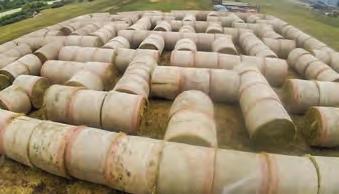
Kick off Friday with riblets, chicken and burgers all day, followed by the hay maze. Marvel at Ranch Rodeo maneuvers and stock up on local goodies at the craft and vendor shows. End the weekend by feasting on delicious BBQ. Did we mention it’s FREE?
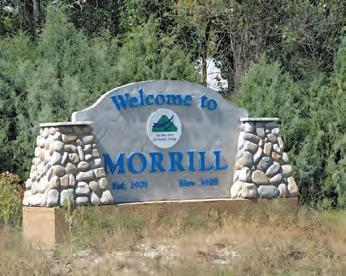

Morrill Village has everything a family vacation needs. Just 20 minutes from the bustle of Scottsbluff, you can hit the range at the public 9-hole golf course, go for a dip at the community swimming pool, stroll through the city park or pick-up a tennis match at the courts. And don’t forget to pack your tackle box and poles for some fishing at the sand pit ponds!
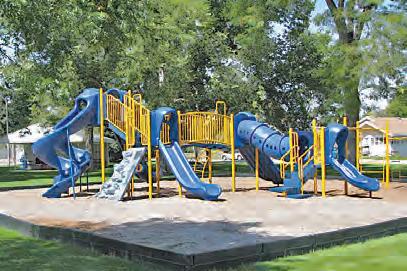
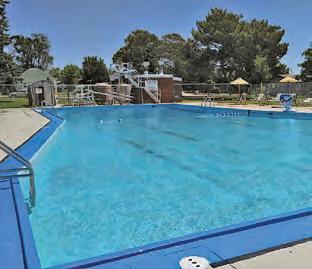
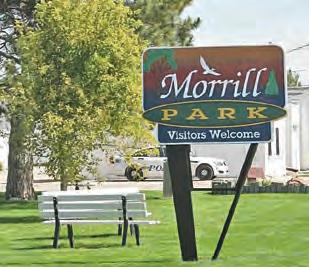


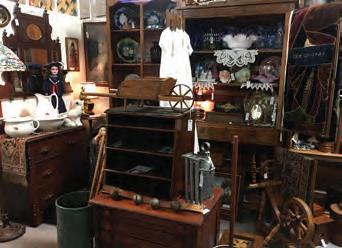
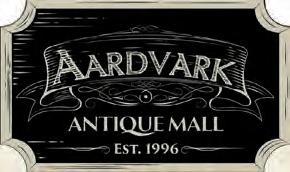

Antique
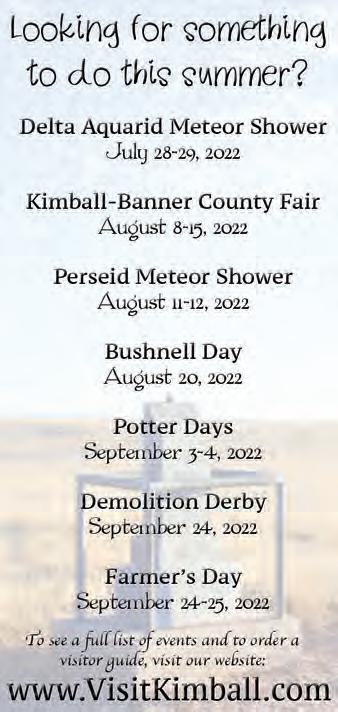
Stop
Henderson Community Days
Henderson Citywide ~ July 8-10
Balloon Days & Sidewalk Sales York Citywide ~ July 15-16
“Charlotte’s Web” Yorkshire Playhouse ~ Aug 2-7
York County Fair York County Fairgrounds ~ Aug 4-7
15th Annual Car & Tractor Show
Wessels Living History Farm ~ Aug 7
Russian Oven Pizza Night & Farmer’s Market
Henderson Mennonite Heritage Park ~ Aug 9
Alleventsareattheirregularlyscheduleddays,butsubjecttochange. CalloremailtheYorkCountyVisitorsBureauforup-dateinformation.
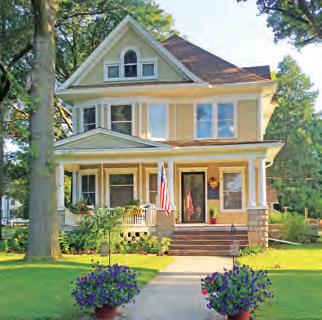
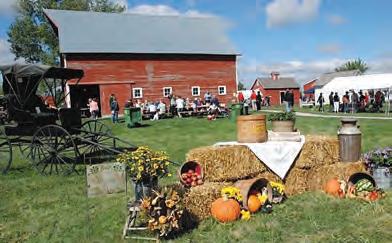



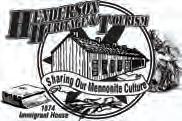


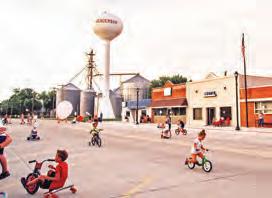
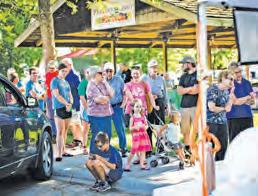
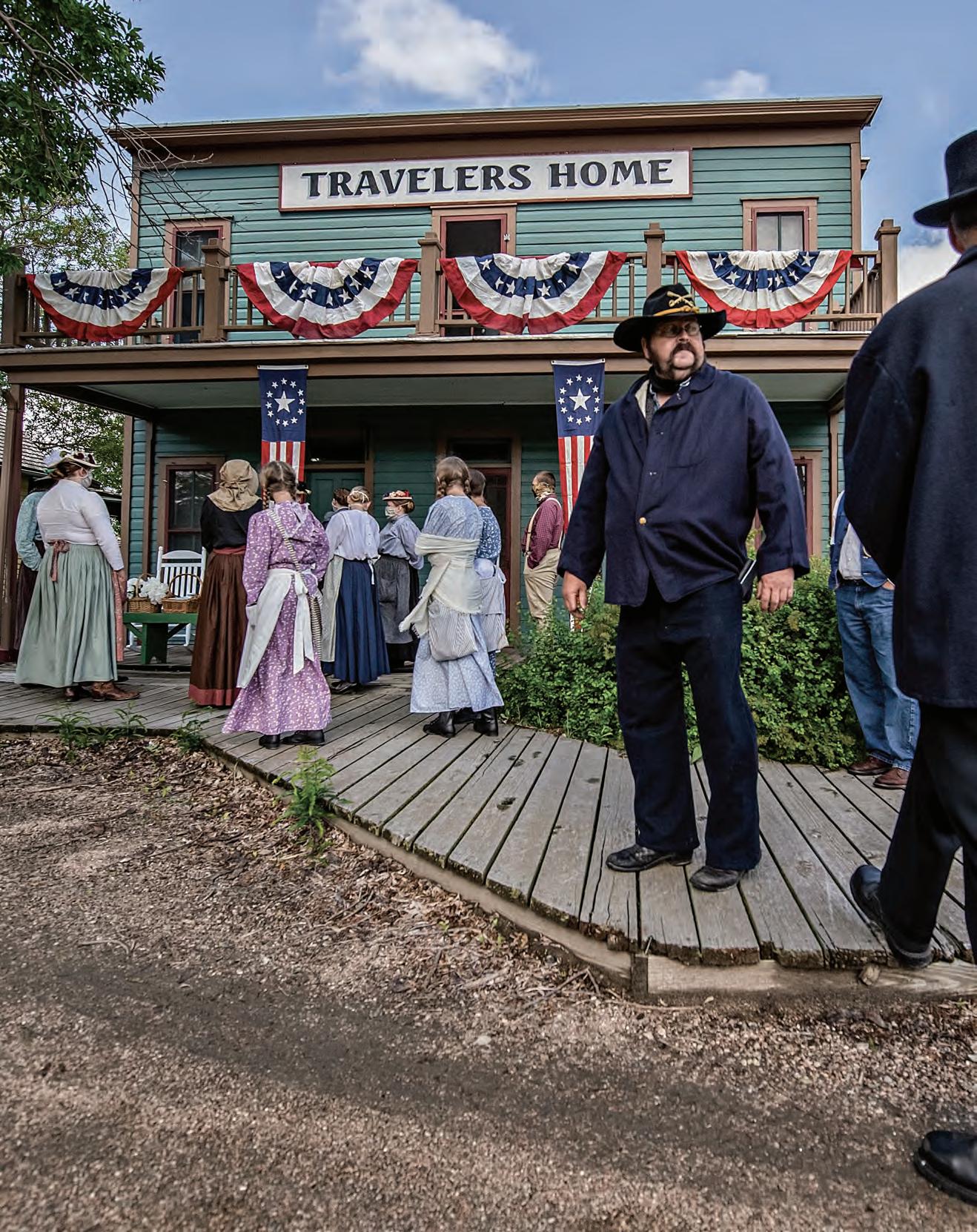


by ALAN J. BARTELS
WE DON’T KNOW much about Gracie.
Sometime during two de cades of wanderings in the choppy sandhills between Burwell and Taylor, I can’t say for sure when or who even told me, I heard the sorrowful story of a blind pioneer girl.
Life on the early Nebraska Plains was fraught with danger and disease. Gracie had already lost her eyesight by the time her family arrived by covered wagon and set up camp near a spring-fed creek in Loup County. When an undiagnosed malady quickly took Gracie’s last breath, her distraught family members buried her lifeless body in the sand. Then they spurred their horse-drawn wagon west and were lost to history. The child’s burial site was also lost; the pioneer girl is memorialized in the name of Gracie Creek. At least that is the tragic folklore that I heard.
I think of Gracie from time to time, and at least twice a year when my friends and I gather to pick up trash along Nebraska Highway 96 in Loup County, not far from where Gracie Creek meets the Calamus Reservoir.
The Nebraska Department of Transportation’s Adopt-A-Highway program started in 1990. Today, approximately 900 groups make the ditches their own, controlling litter alongside about one-quarter of Nebraska’s approximately 10,000 miles of state highways. The volunteers provide the elbow grease, and the NDOT provides traffic signs, reflective vests and giant orange trash bags. The agency even picks up the bags when the cleanup is done.
Steel signs at each end of our 2-mile stretch of adopted prairie highway state “Litter Removal Courtesy of Friends of Gracie.” We call ourselves the FroGs, and it usually takes the four or five of us less than two hours to hop, err, walk the ditches picking up the beer bottles, pop cans, Styrofoam coffee cups, fishing tackle wrappers and other debris in the grass and plum thickets. We take our time taking in the flowers, sky, birds and the other wildlife, typically working our way west and ending at Gracie Creek.
For years, I thought Gracie’s unfortunate end led her to burial in a small pioneer cemetery overlooking the creek where it flows through Switzer Ranch. A little bit of research, including a call to my friends, the Switzers, revealed that the scenic spot is home to three marked pioneer graves, but not Gracie’s. The sad story that I had heard of her untimely demise soon changed for the better.
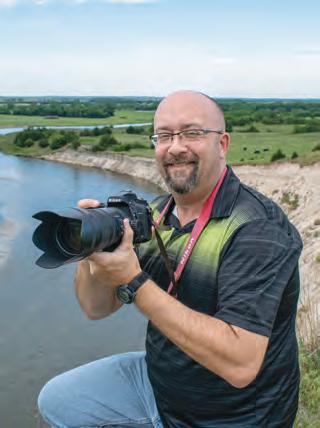
try, camping for a time on the creek bank. The child’s favorite place to play was the creek. Thus it was named for her.” There is no mention in the historical record of the child perishing. In fact, the author’s granddaughter, Sarah Switzer Sortum, remembers her grandmother saying that the family, including Grace and her brother, all left safely together.
Alan J. Bartels explores Nebraska nature, wildlife and the great outdoors.
Today, the creek is best known for the state-owned trout fishing pond it fills just upstream of Calamus Reservoir. We FroGs clean up the roadside each spring and fall, the most beautiful time to be in the Nebraska Sandhills. Had she been able to see them, I am sure that Grace would have enjoyed the palette of colorful wildflowers flanking the asphalt between our Adopt-A-Highway signs.
Reading from a copy of The Settlement of Loup and Blaine Counties by the late Colleen Switzer revealed that the Gracie Post Office and Gracie Creek were “named in honor of a little blind girl named Grace whose parents traveled through the coun-
Unlike some of the lake visitors who toss out a bottle or can, the blind pioneer girl left little behind. Nothing but a bit of folklore and her enduring name on a tranquil creek flowing through the choppy sandhills of Loup County.
Adopt your own stretch of Nebraska Highway at dot.nebraska.gov. Learn about Keep Nebraska Beautiful at knb.org.
photograph by BRAD WILLIAMS
BRAD WILLIAMS GREW up watching Fourth of July fireworks at the old Rosenblatt Stadium in South Omaha. It left him with feelings of excitement and wonder that he chases as a photographer.
Rosenblatt Stadium closed in 2010, but the Memorial Park Concert in Central Omaha drew him in next – and Williams has made it almost every year since. Instead of viewing the display through childish eyes, he watches through a camera viewfinder, taking hundreds of images that often incorporate Omaha landmarks to scale and center his compositions.
This year he plans to bring his young children to witness the display for the first time. Who knows, maybe in 20 years, they’ll stand alongside dad with a DSLR camera of their own.
IN EACH ISSUE, Last Look features a reader’s photograph of Nebraska – landscapes, architecture, attractions, events, people or wildlife.
Submit your best photographs for the chance to be published in Nebraska Life. Send digital images with detailed photo descriptions and your contact information to photos@nebraskalife.com or visit nebraskalife.com/contribute.
Created with a Canon EOS 5D Mark III camera with aCanon EF 24-105mm f/4 lens at 28mm, exposed at ISO 400, f/8 for 5 seconds.
